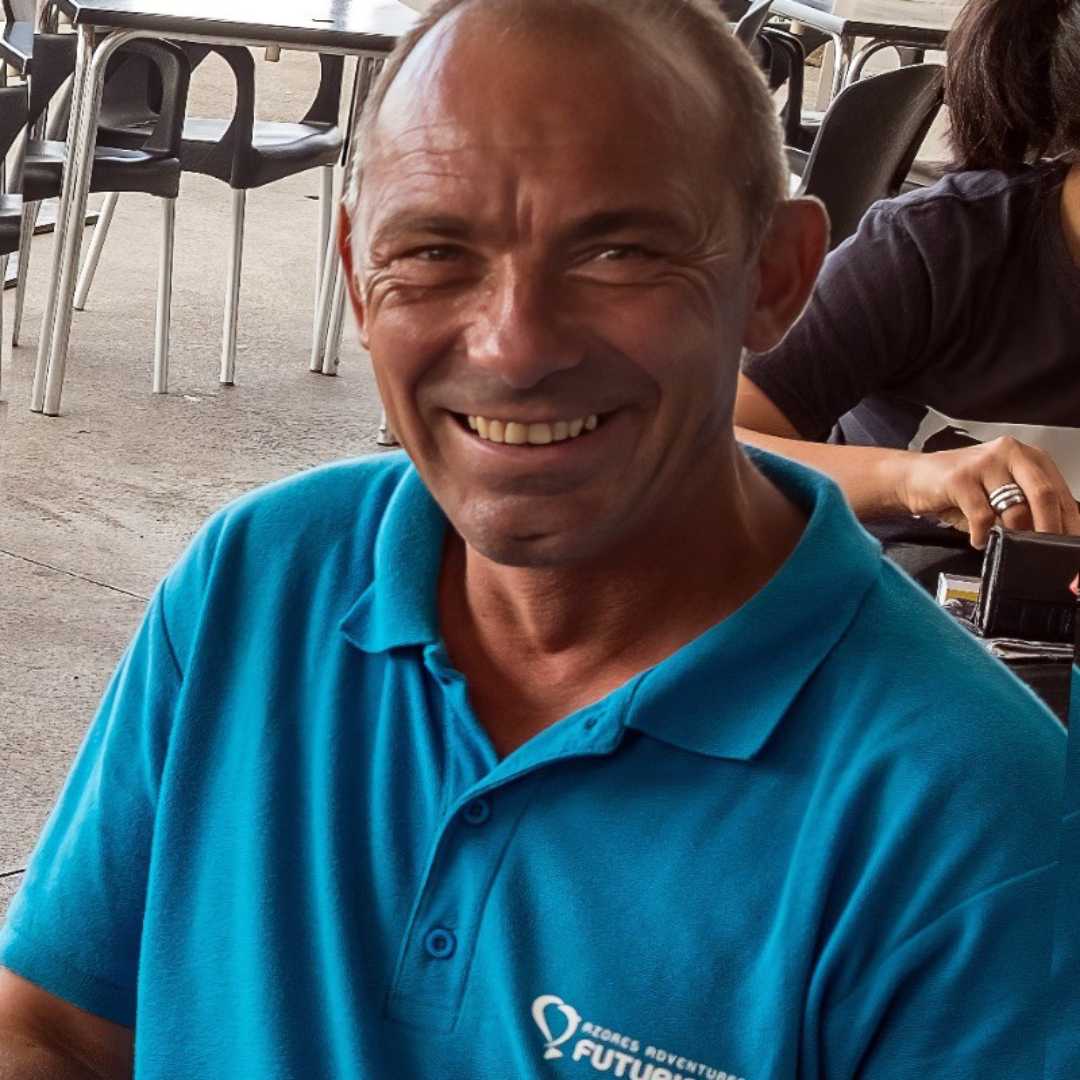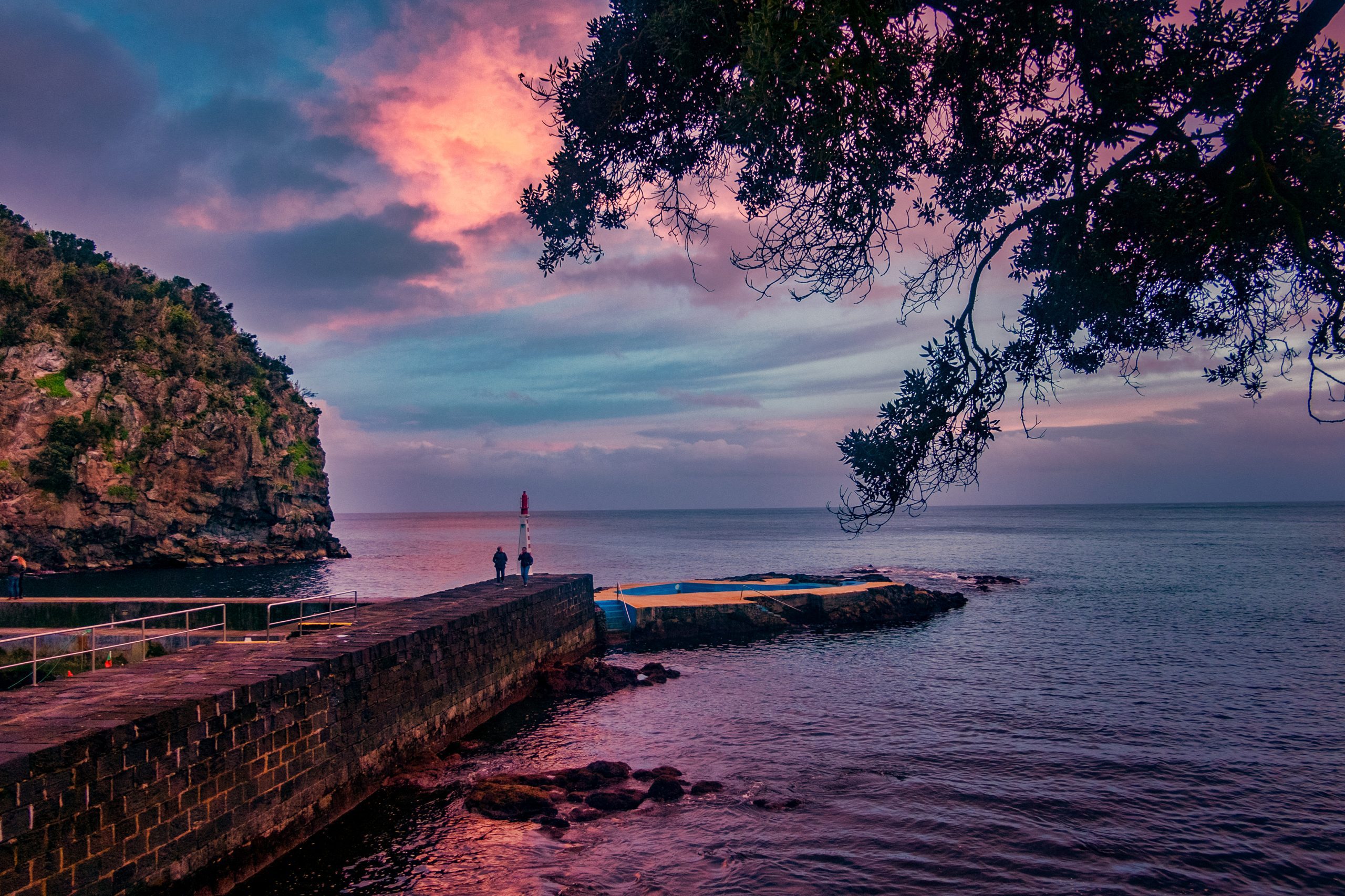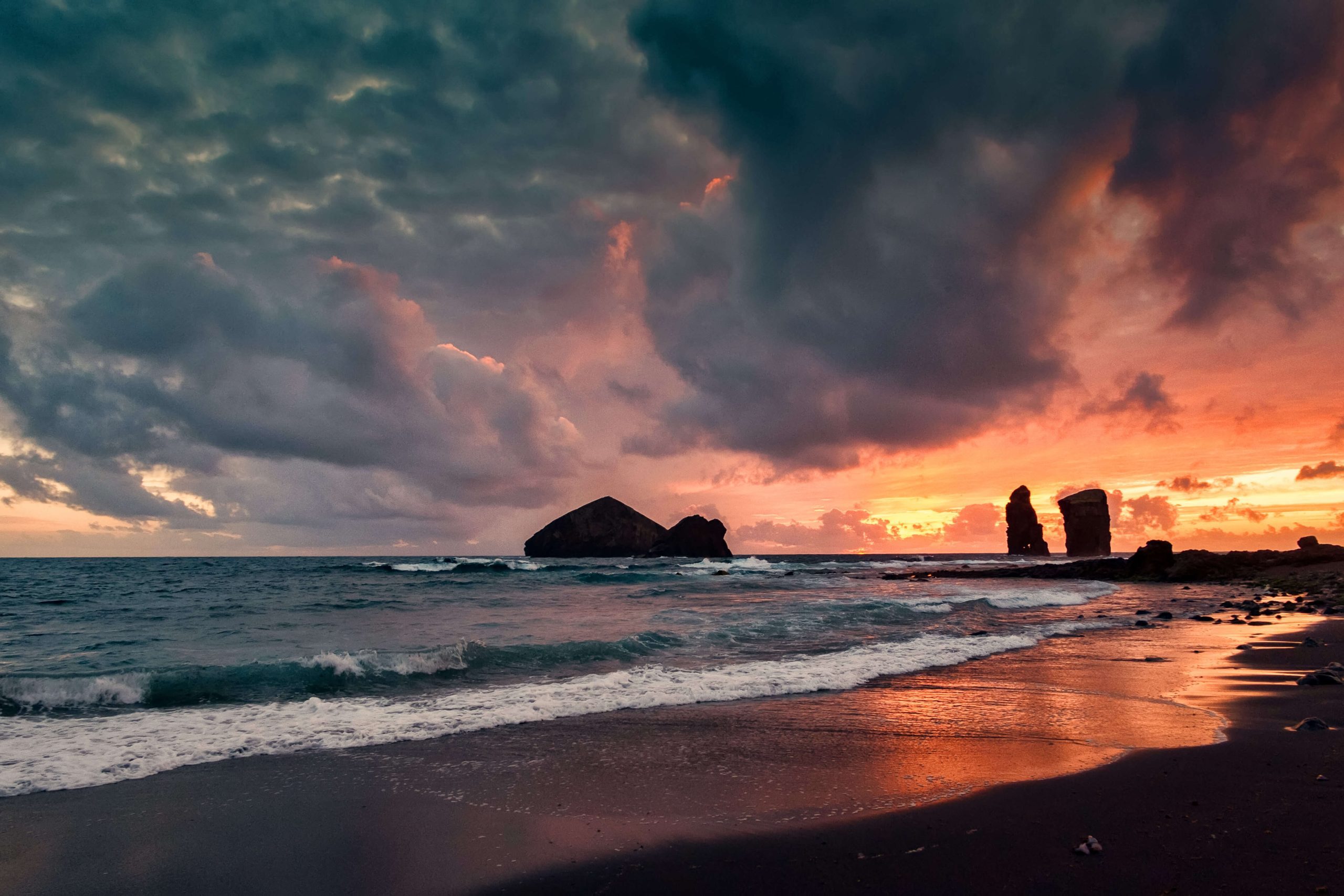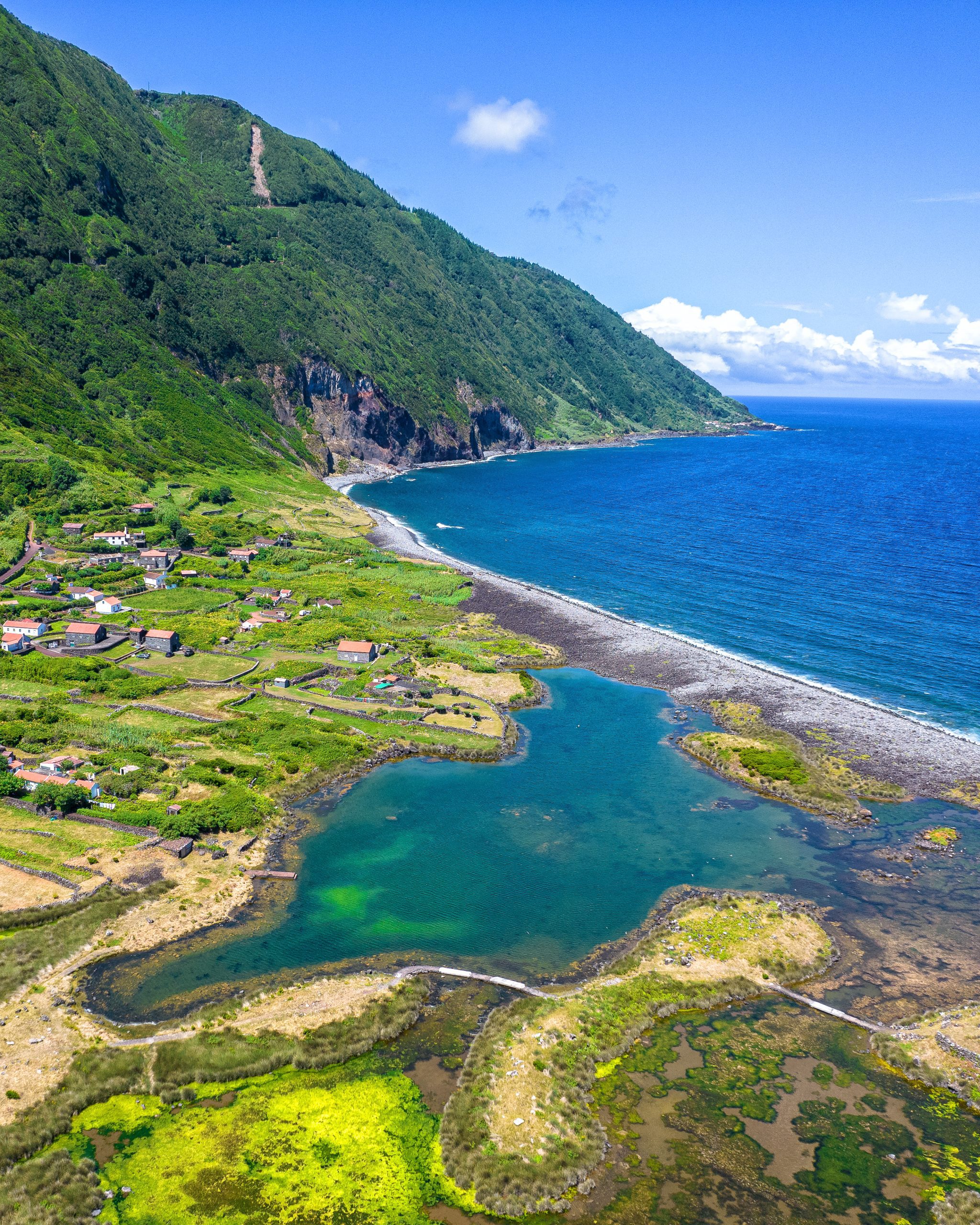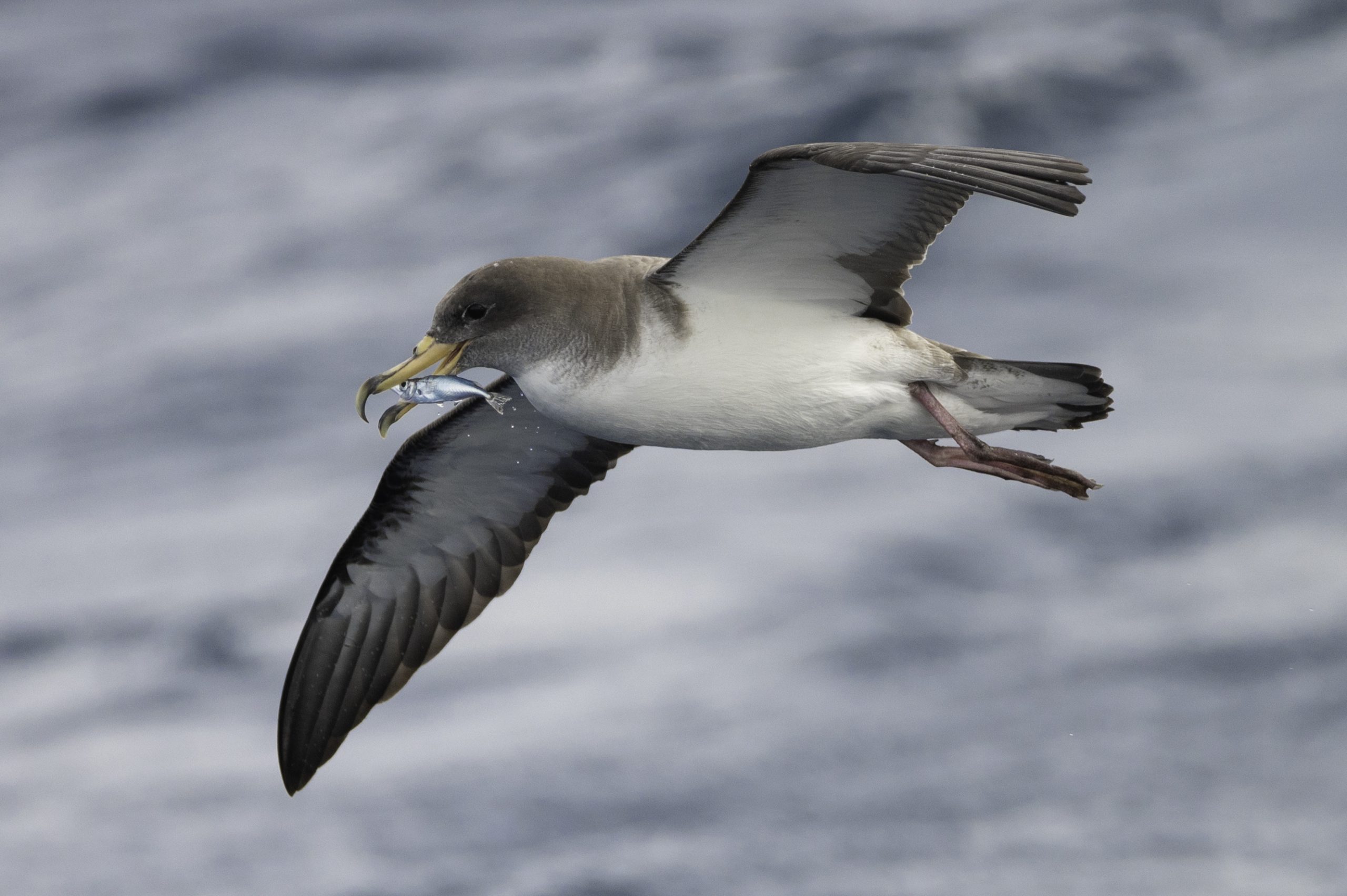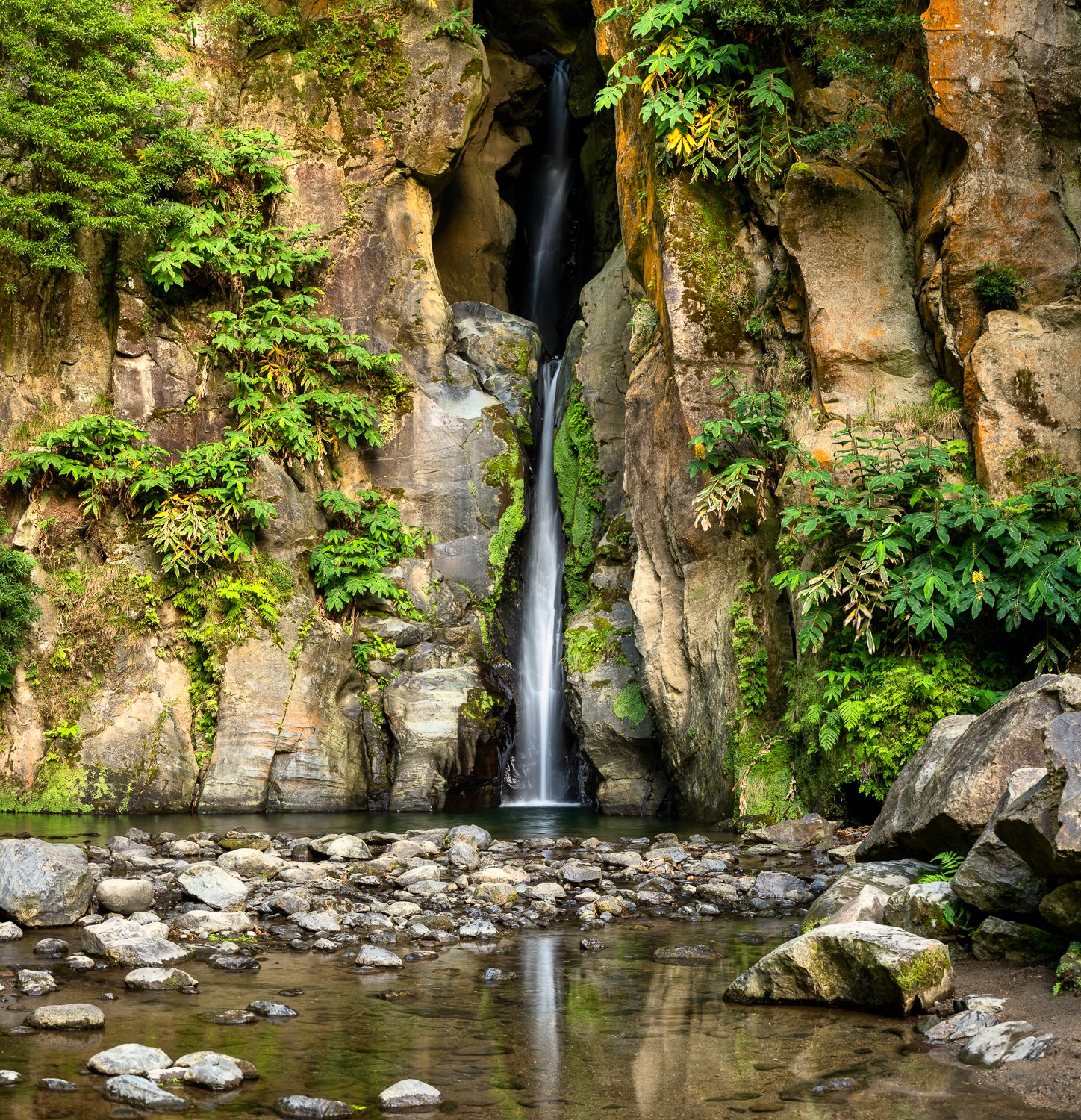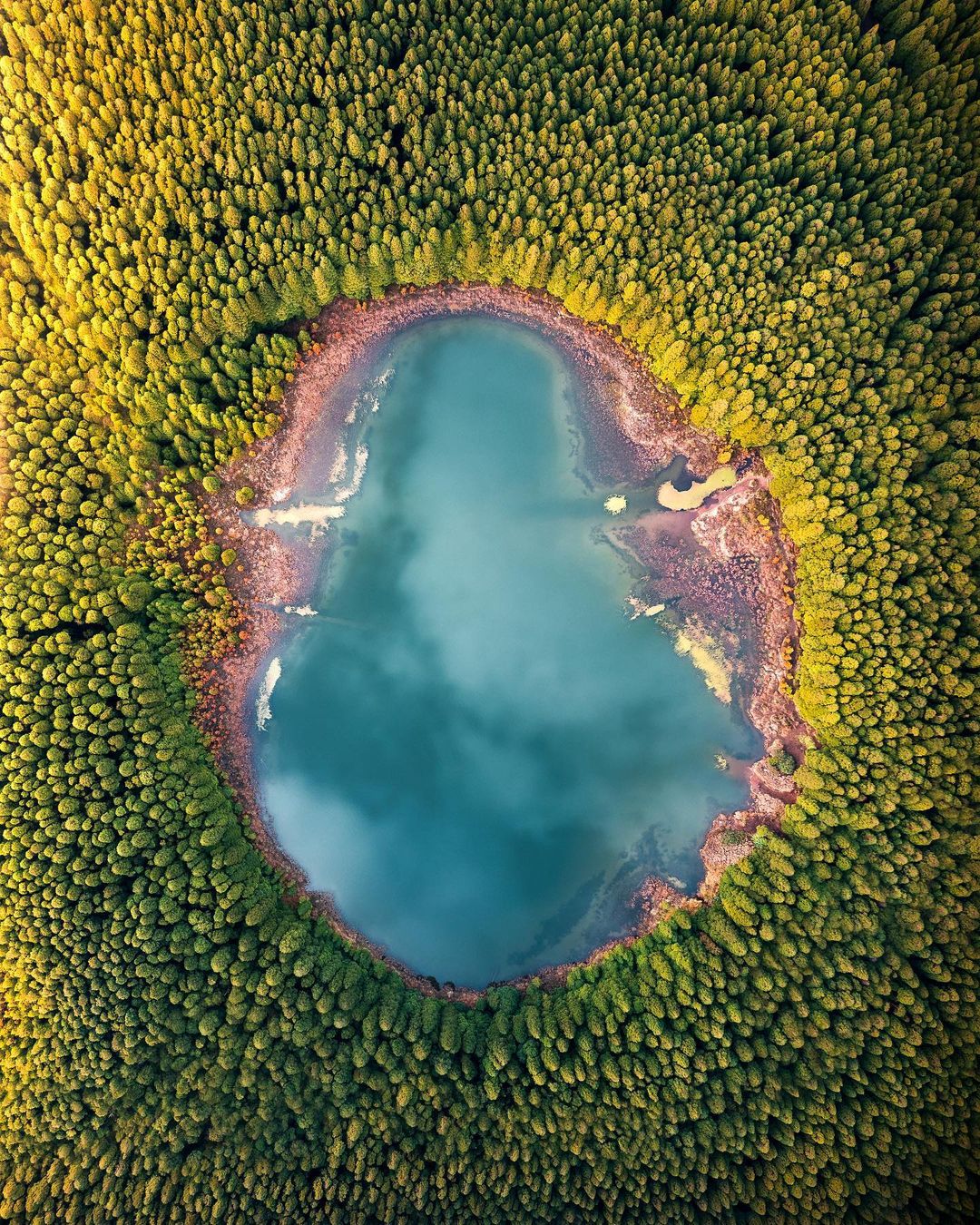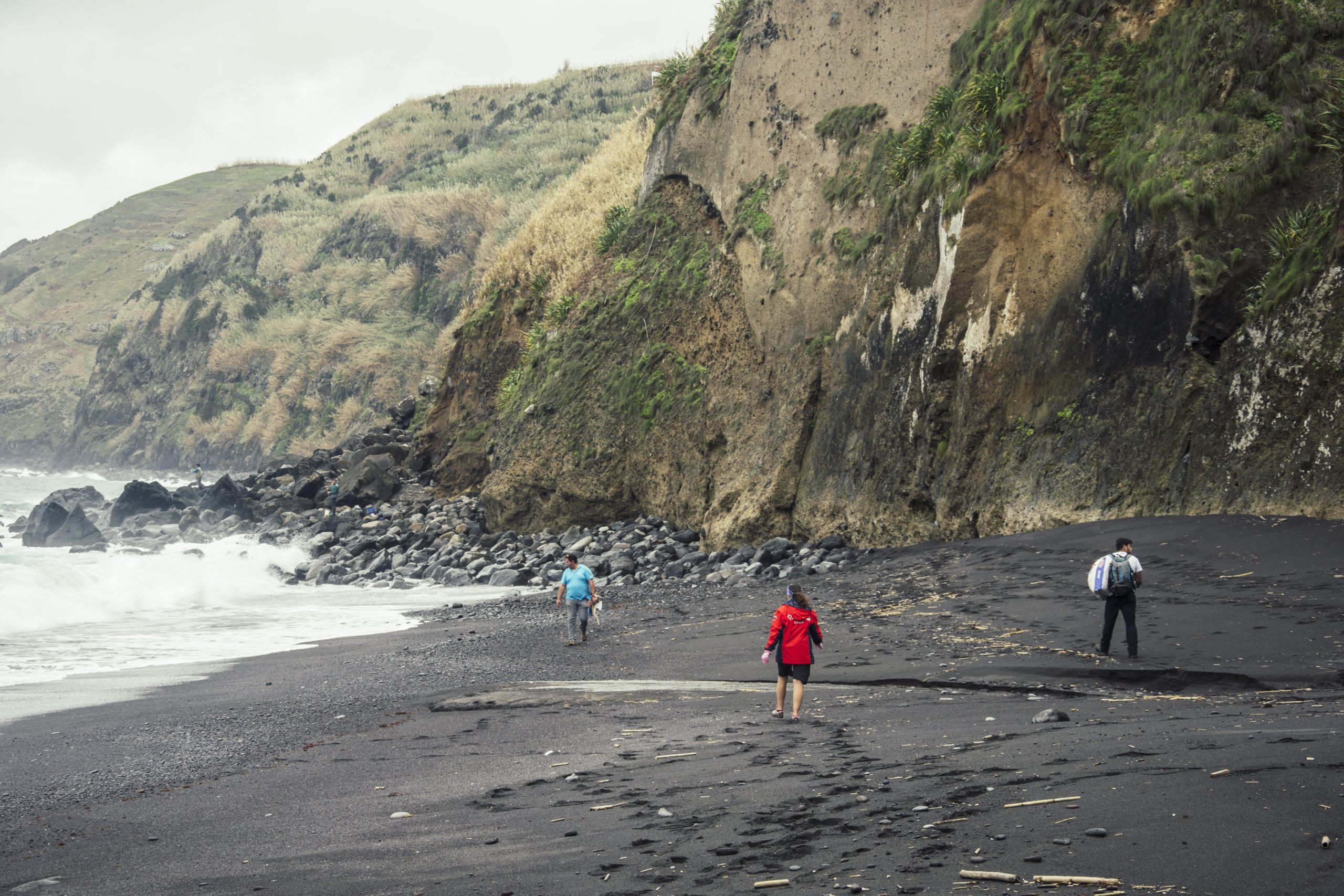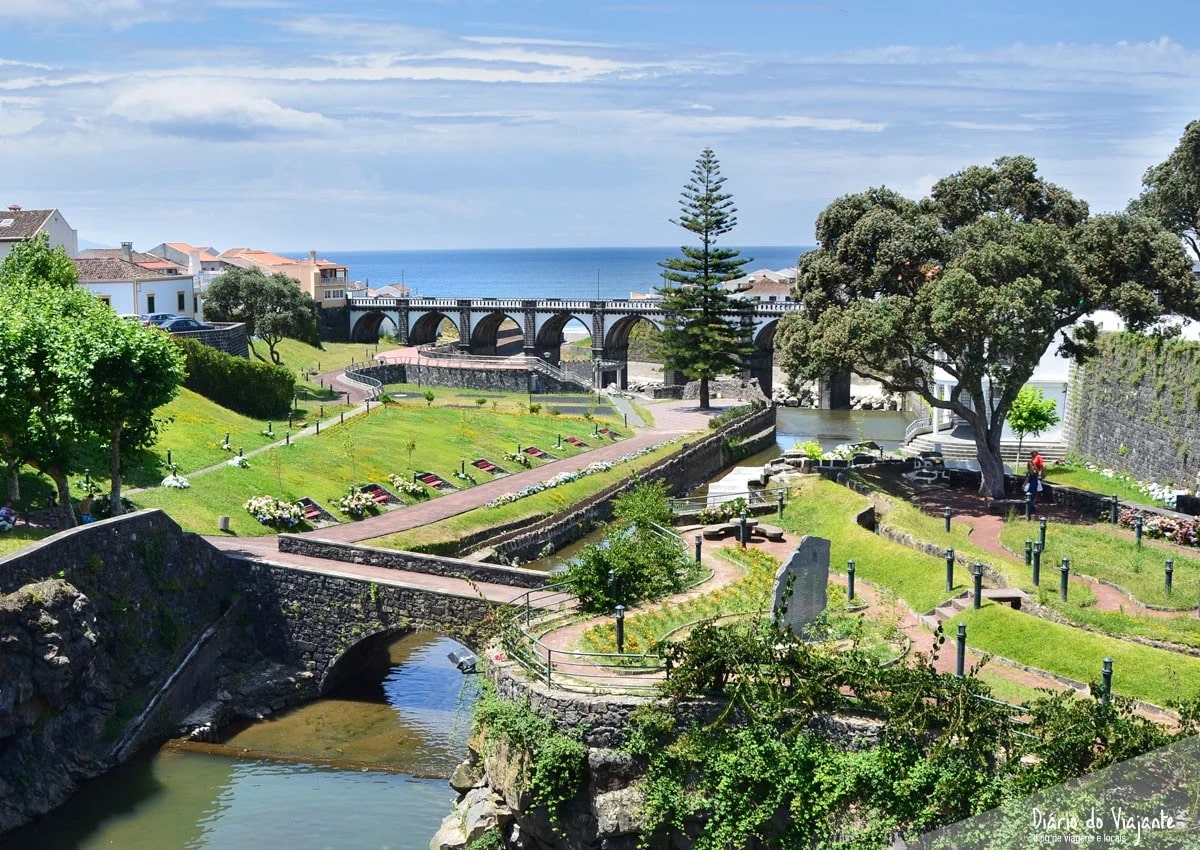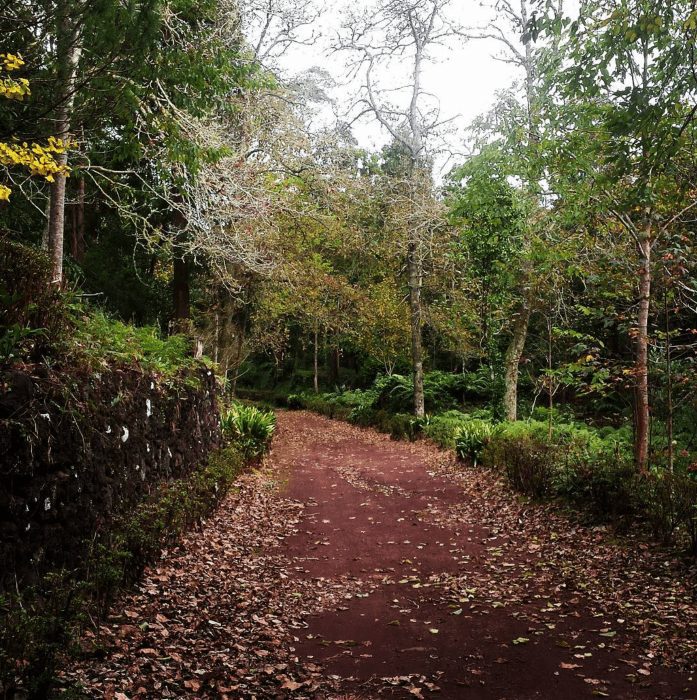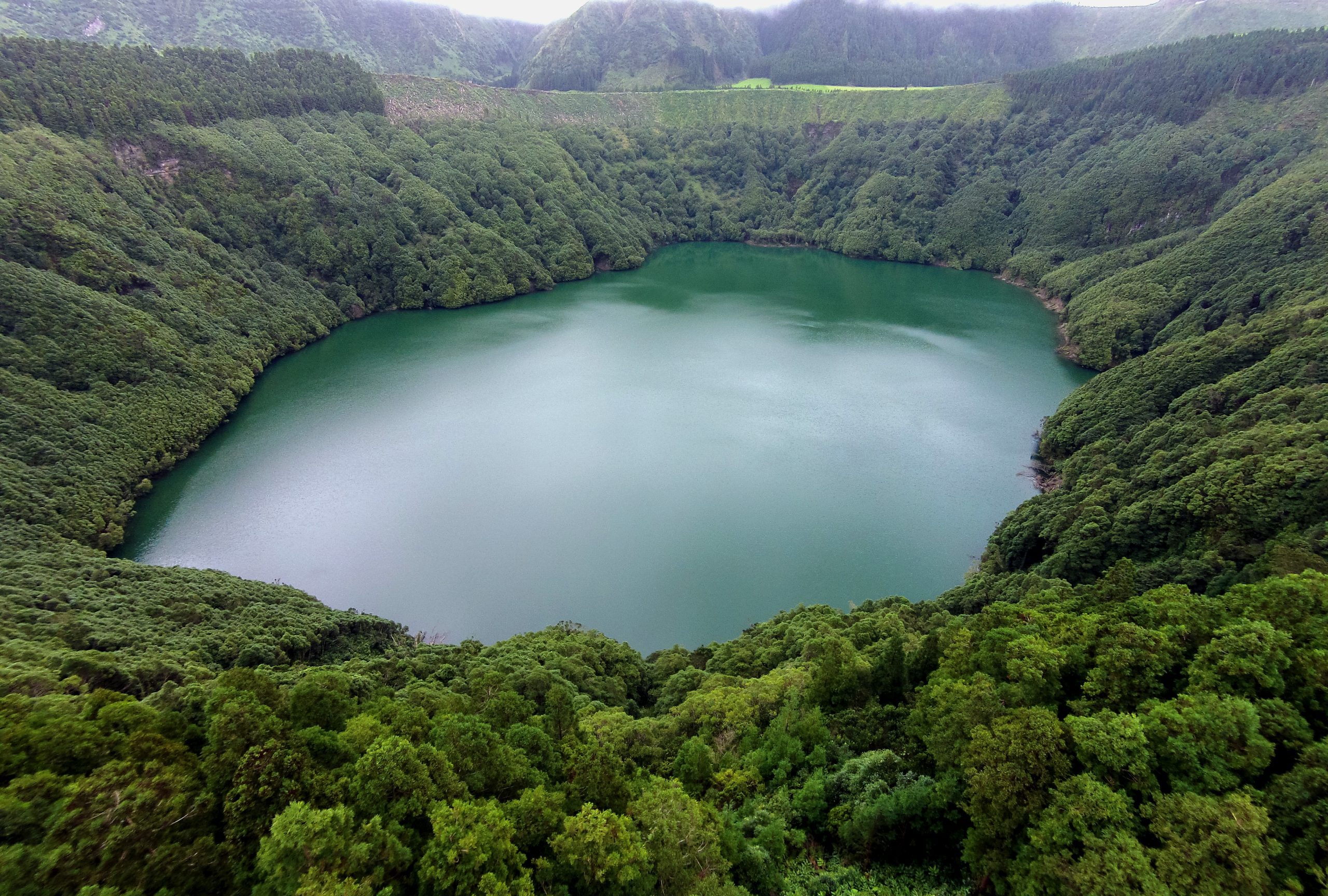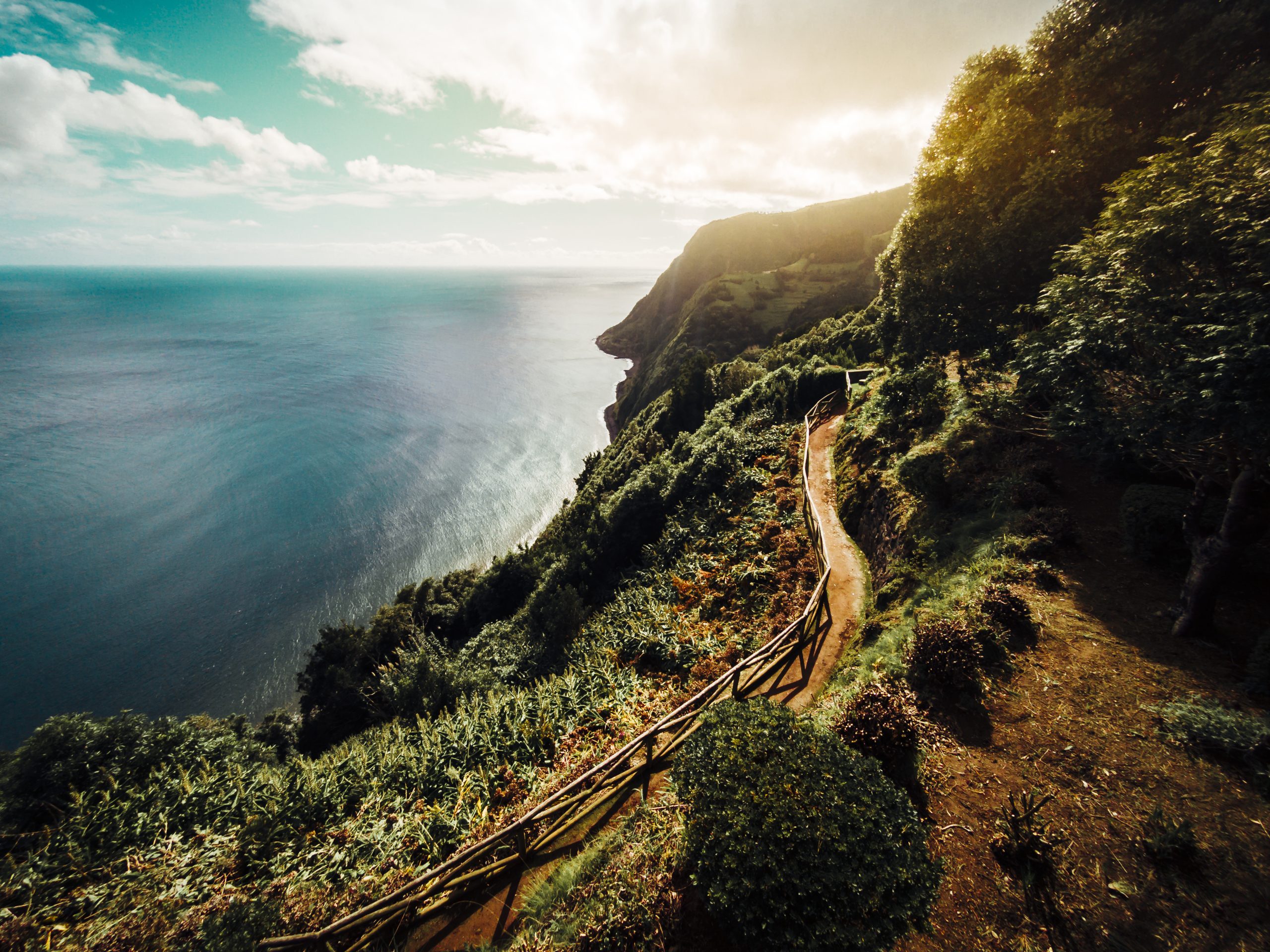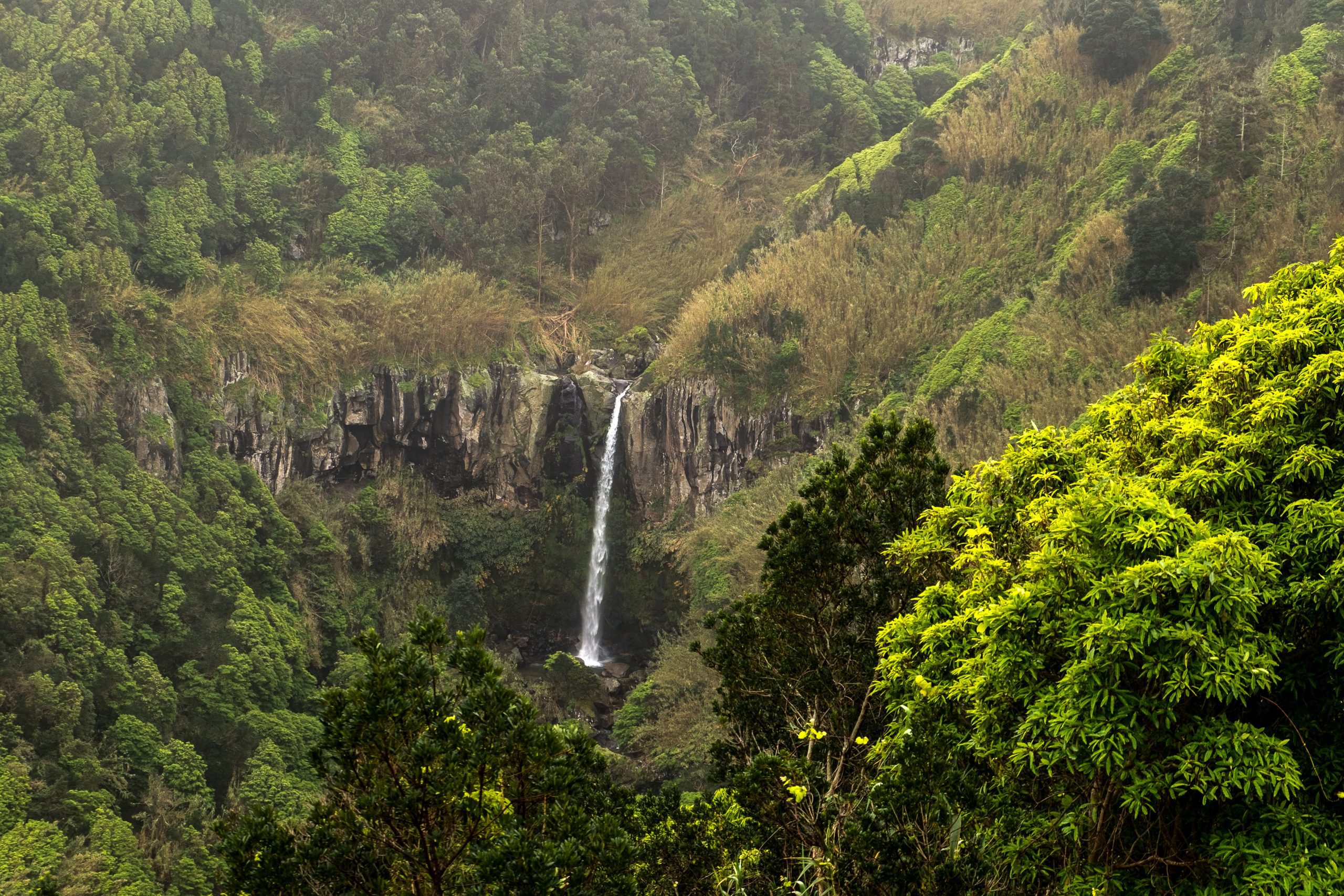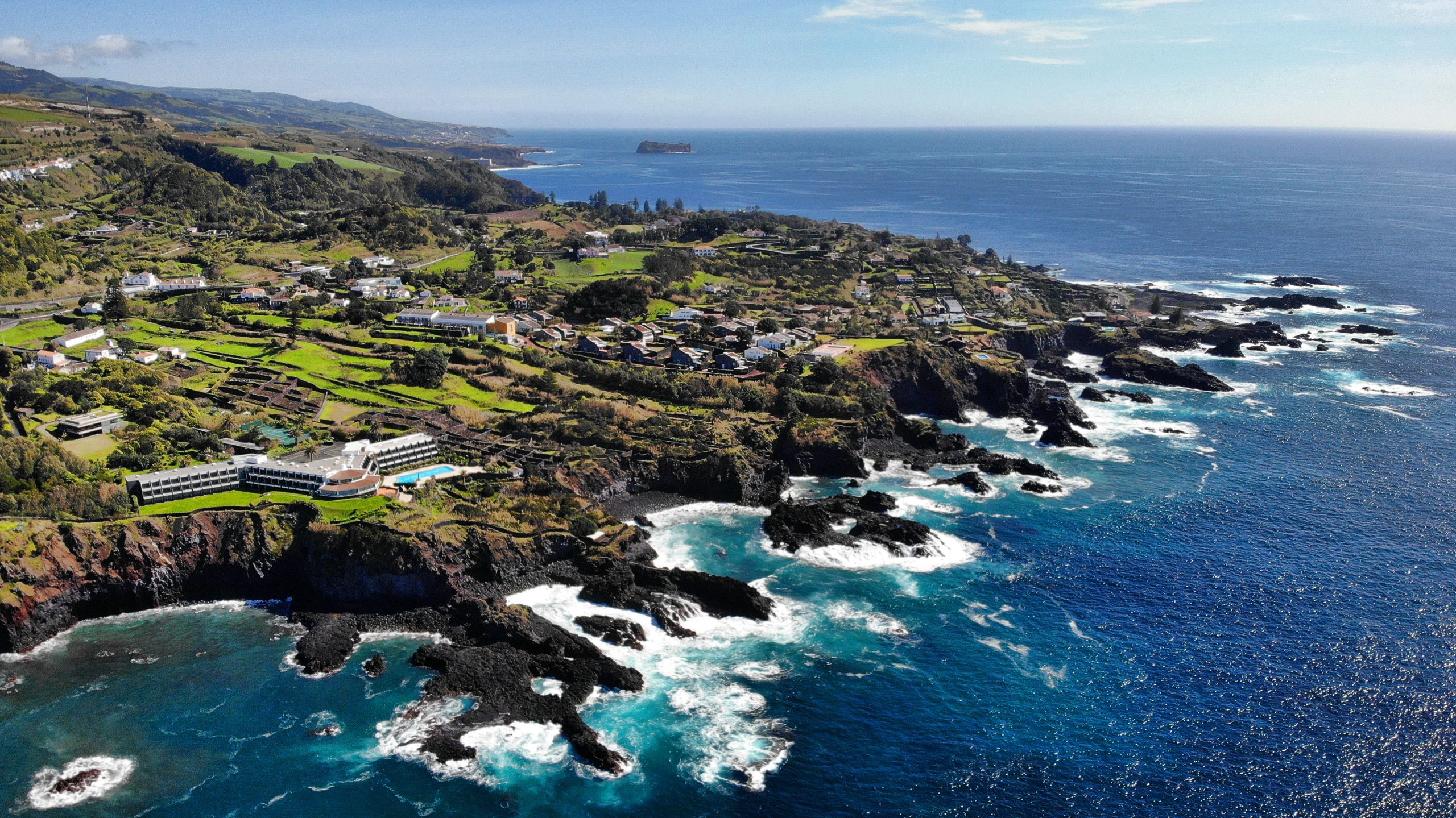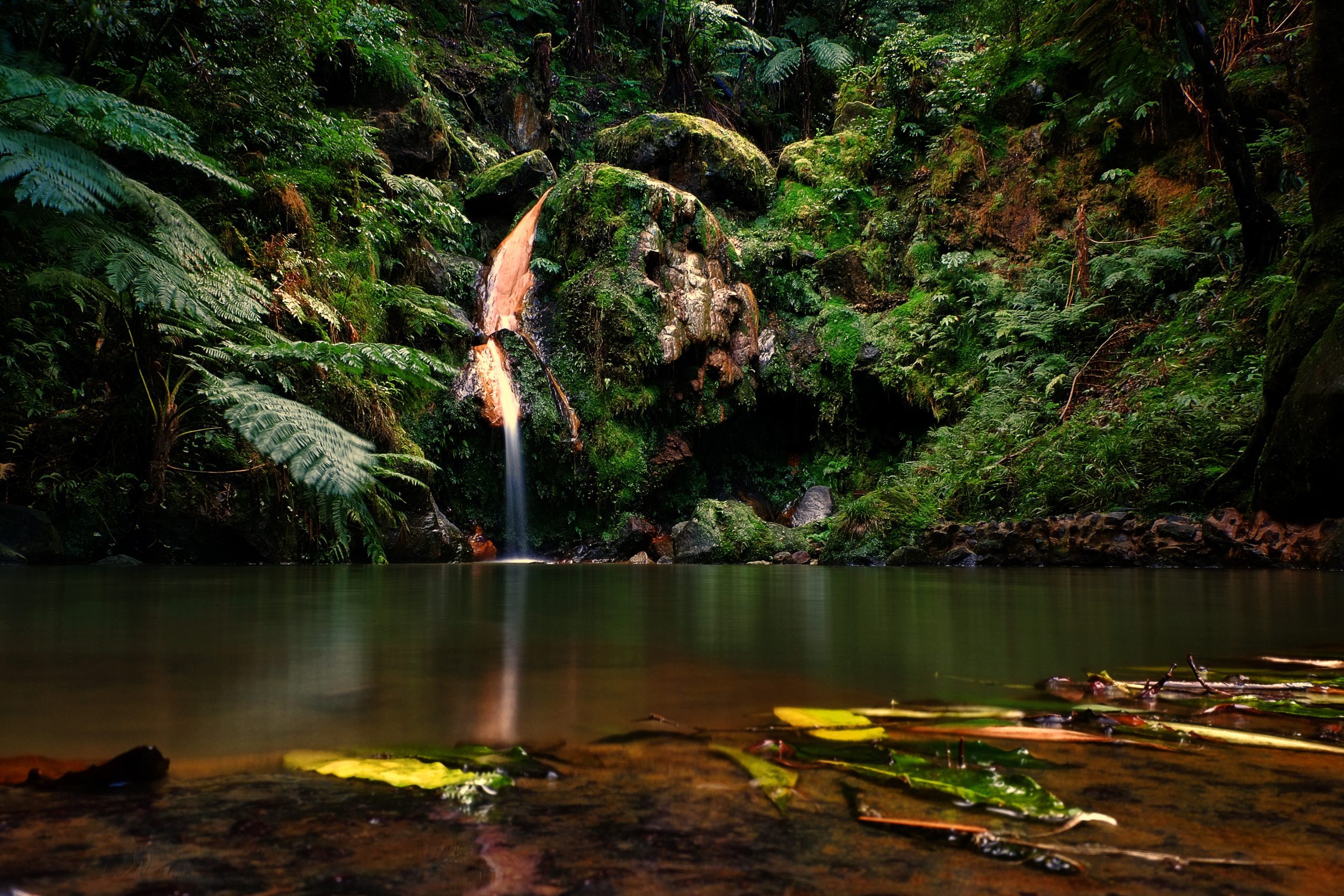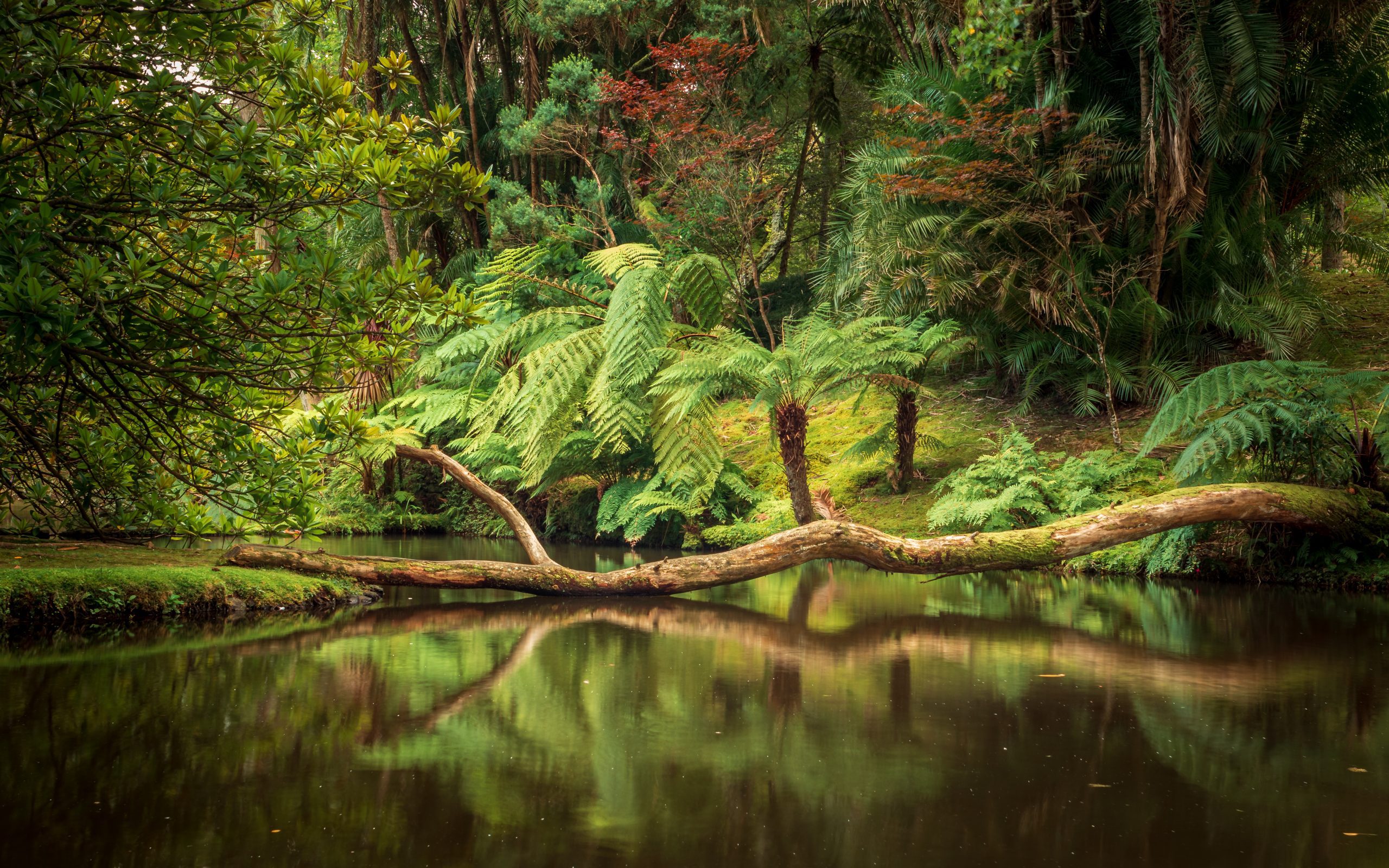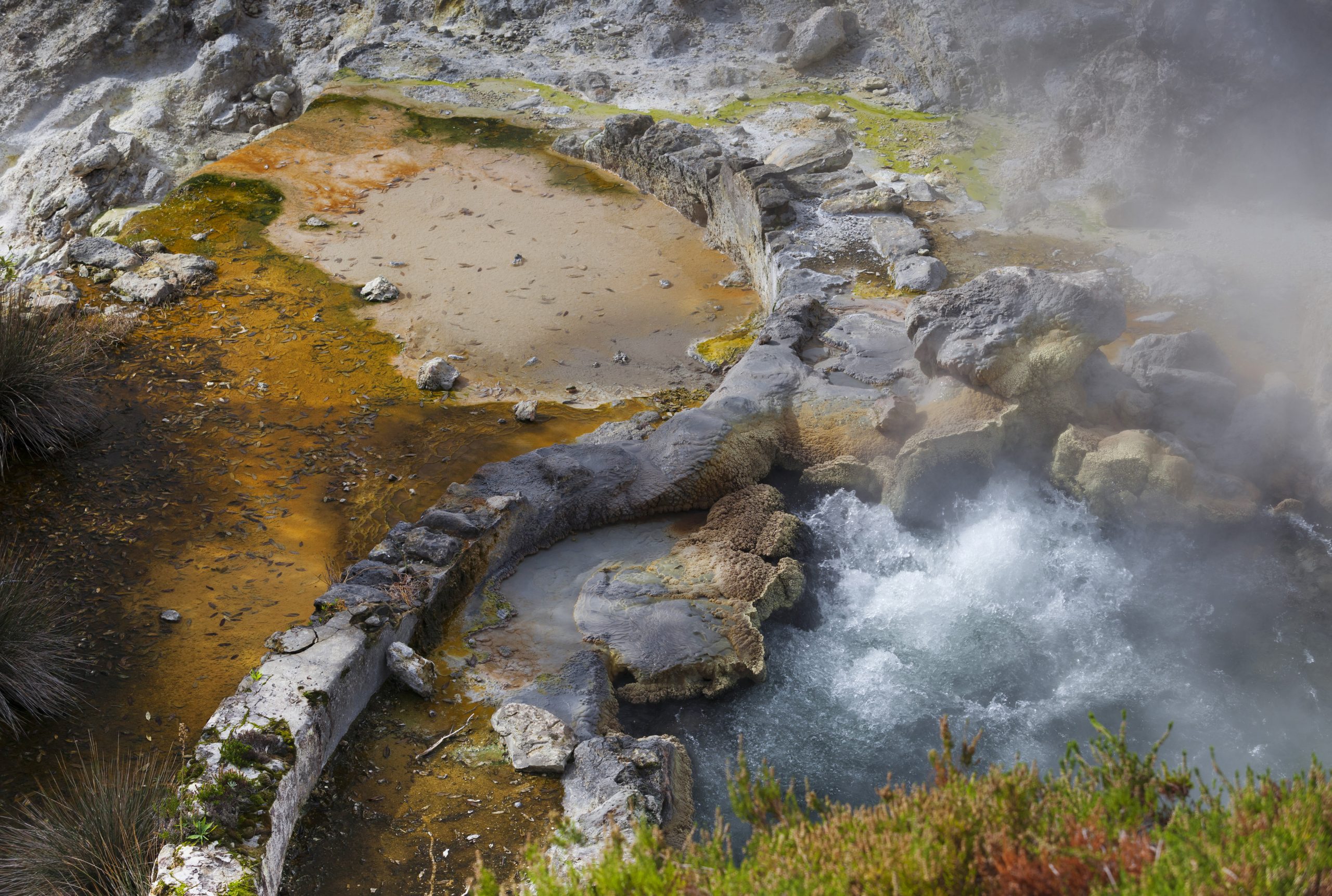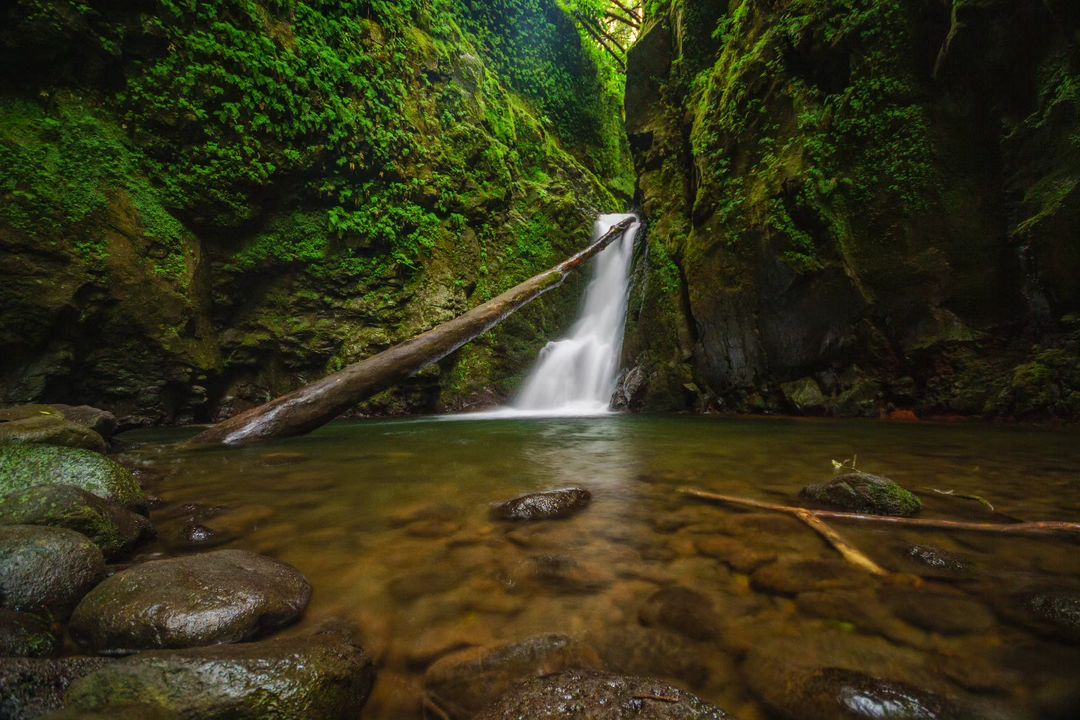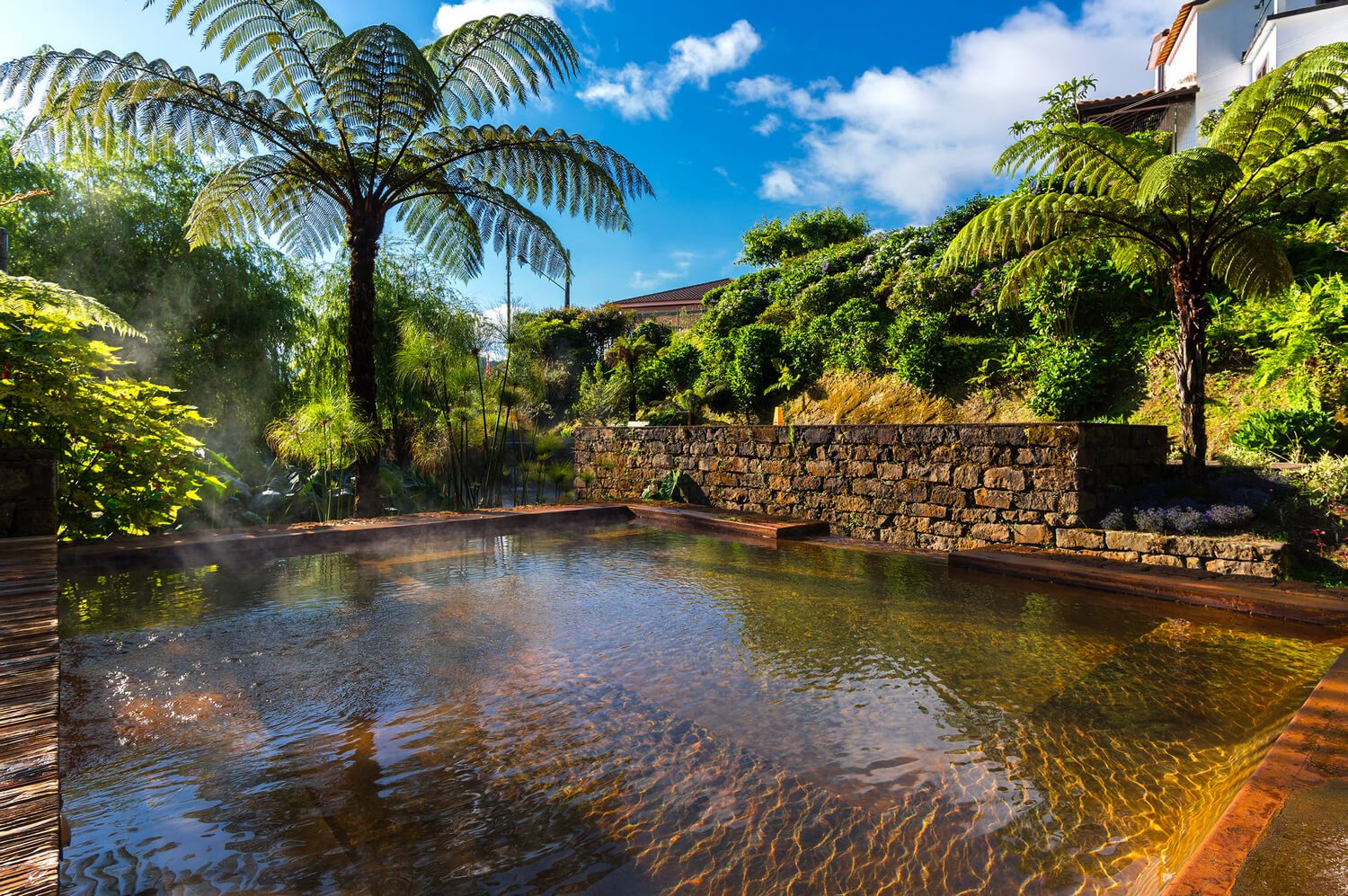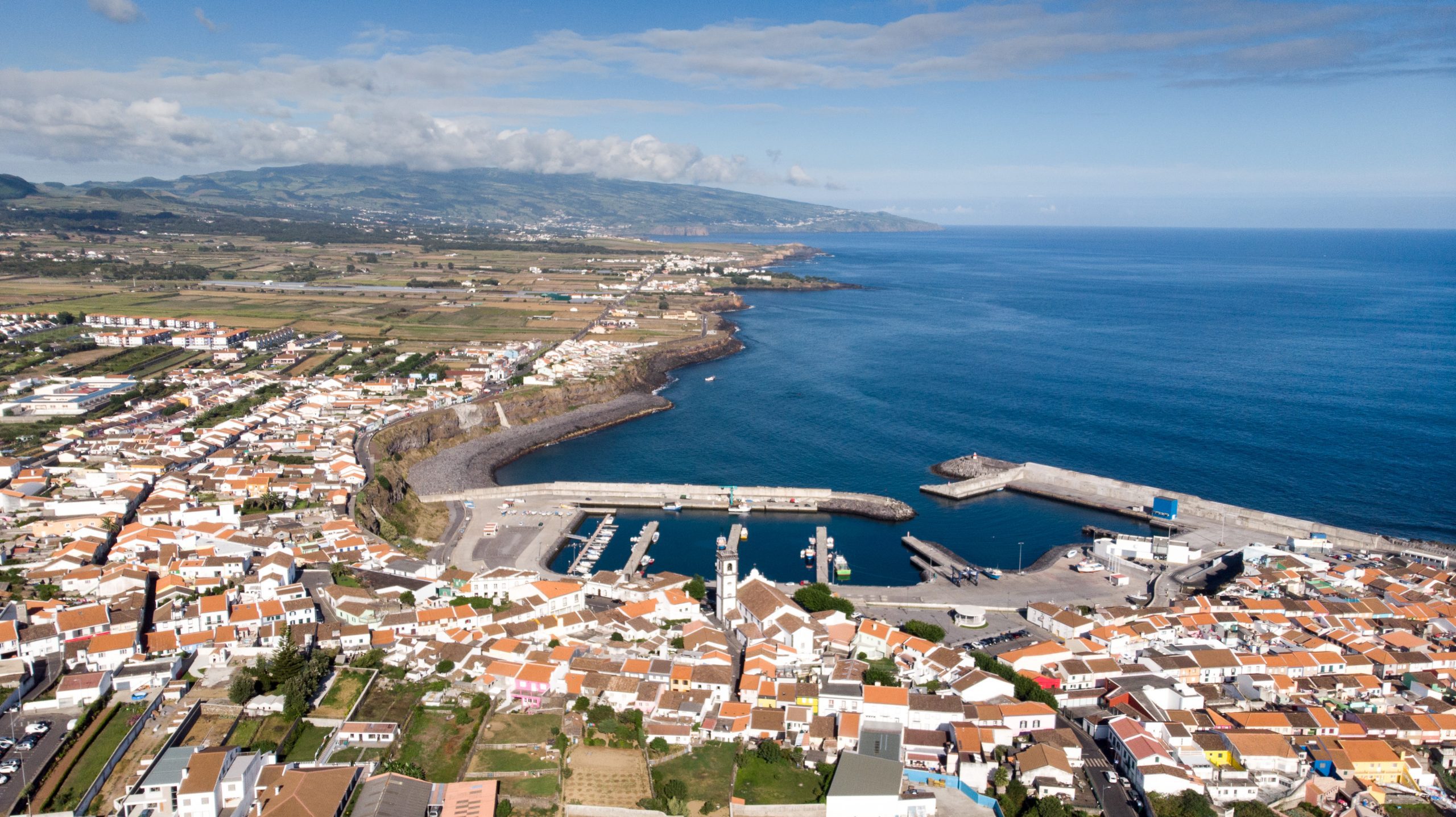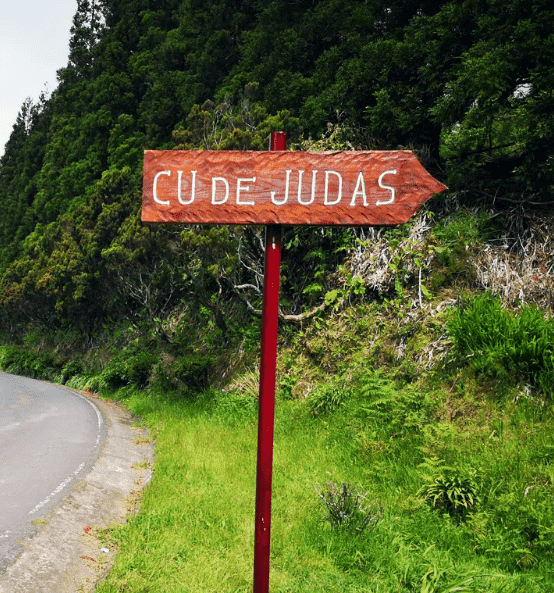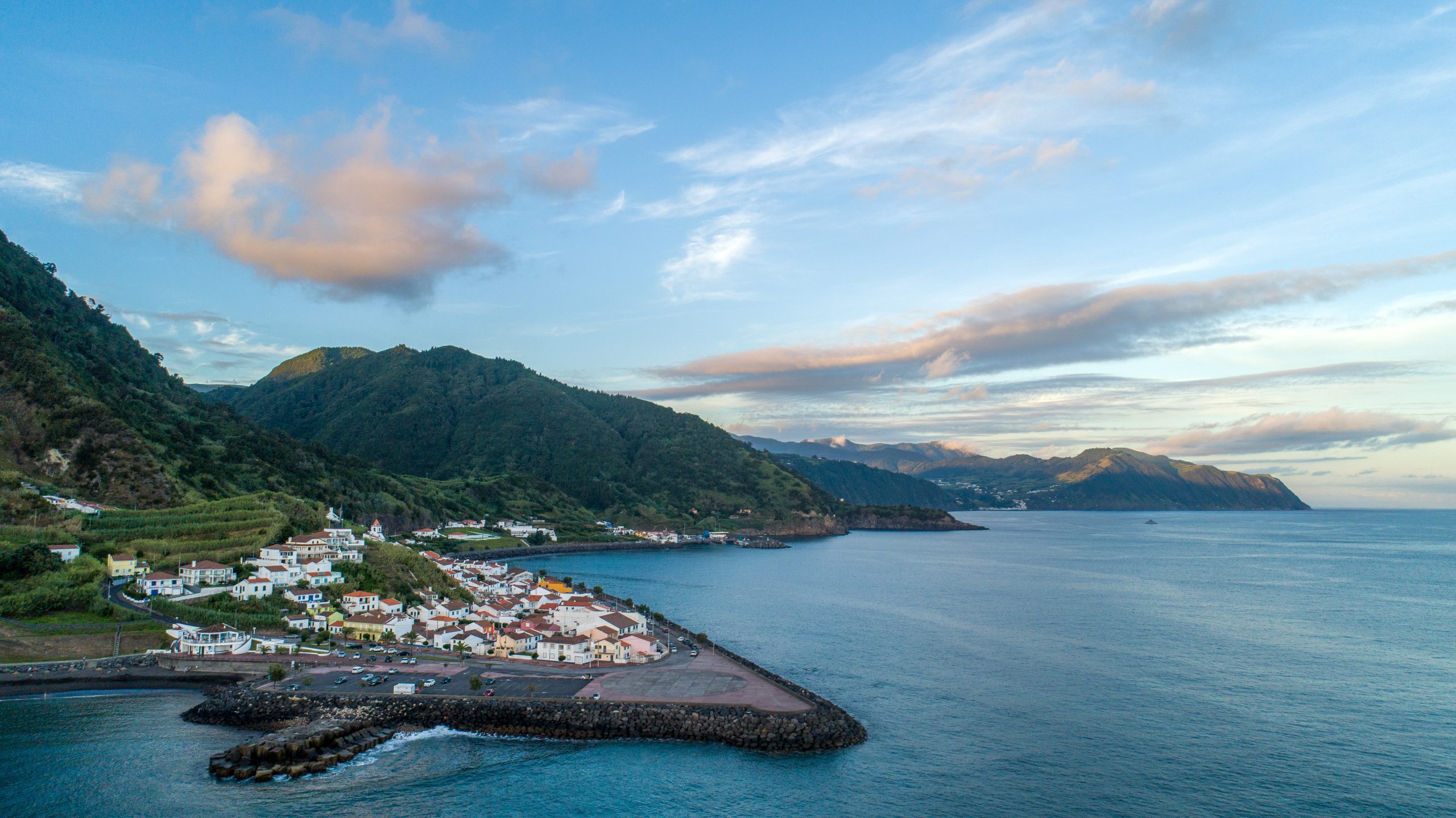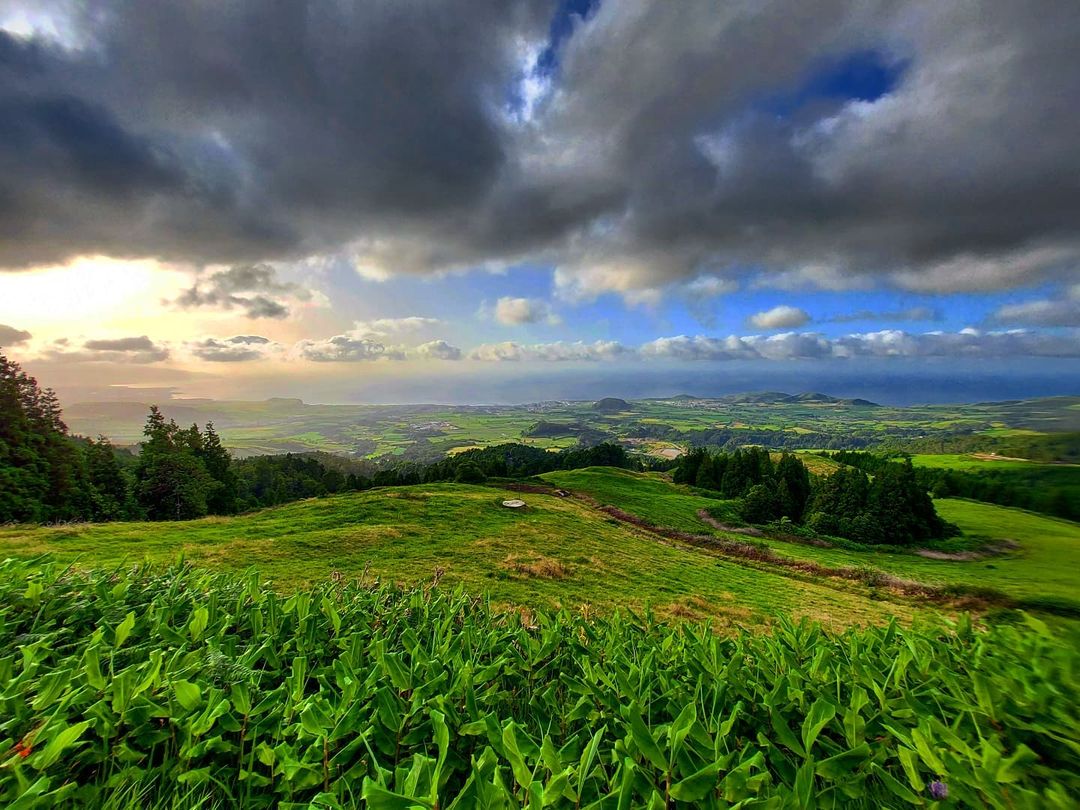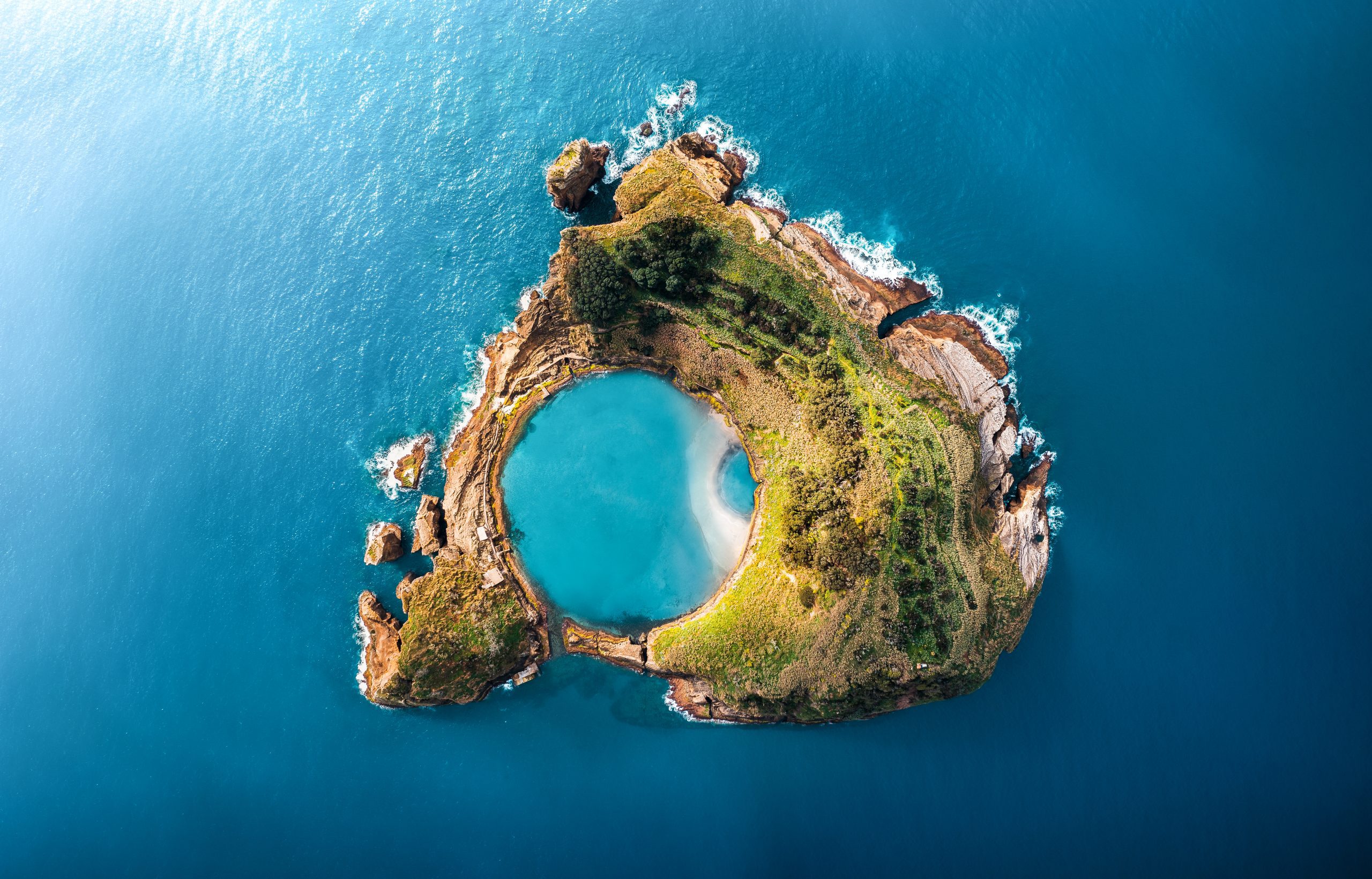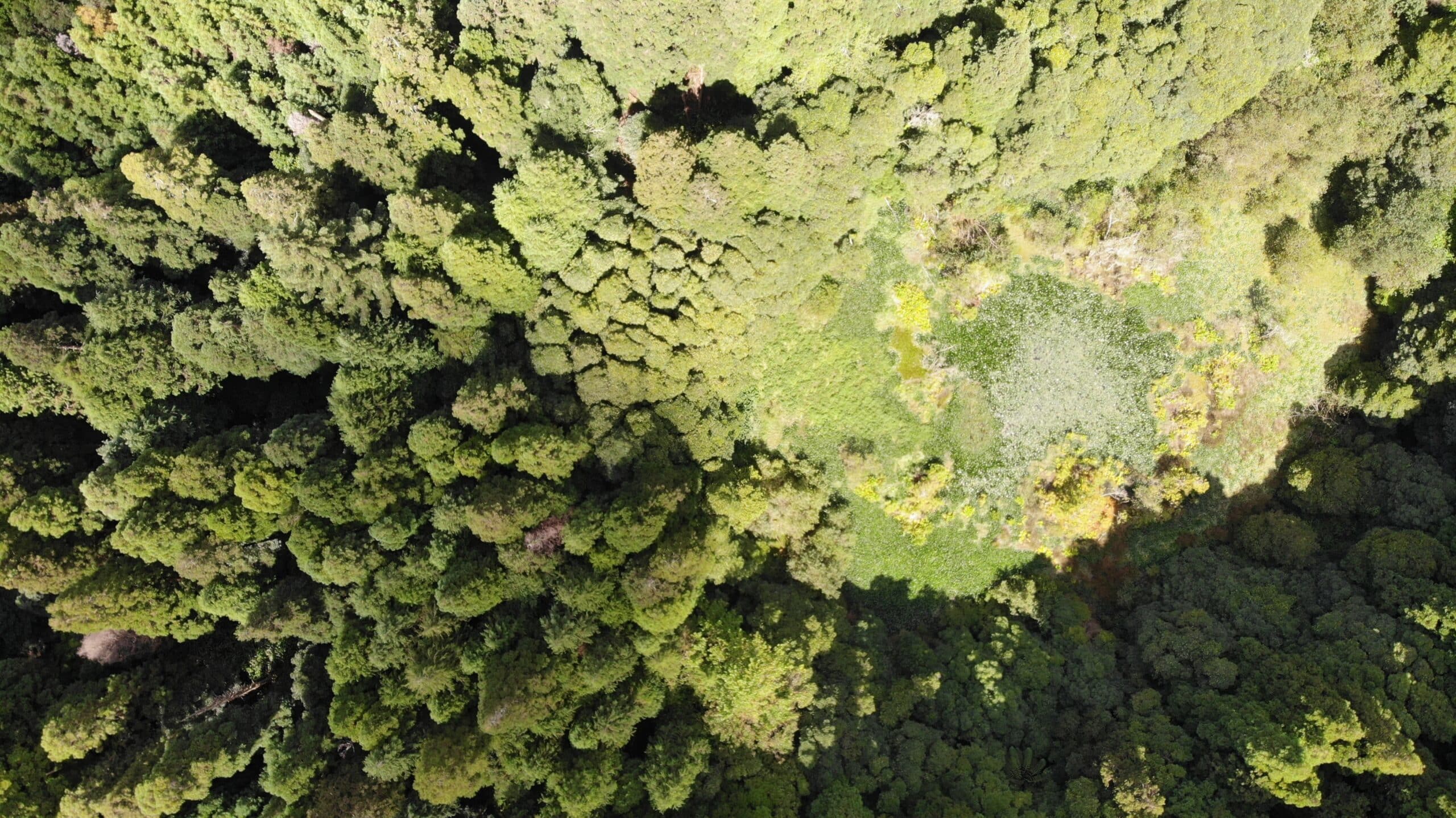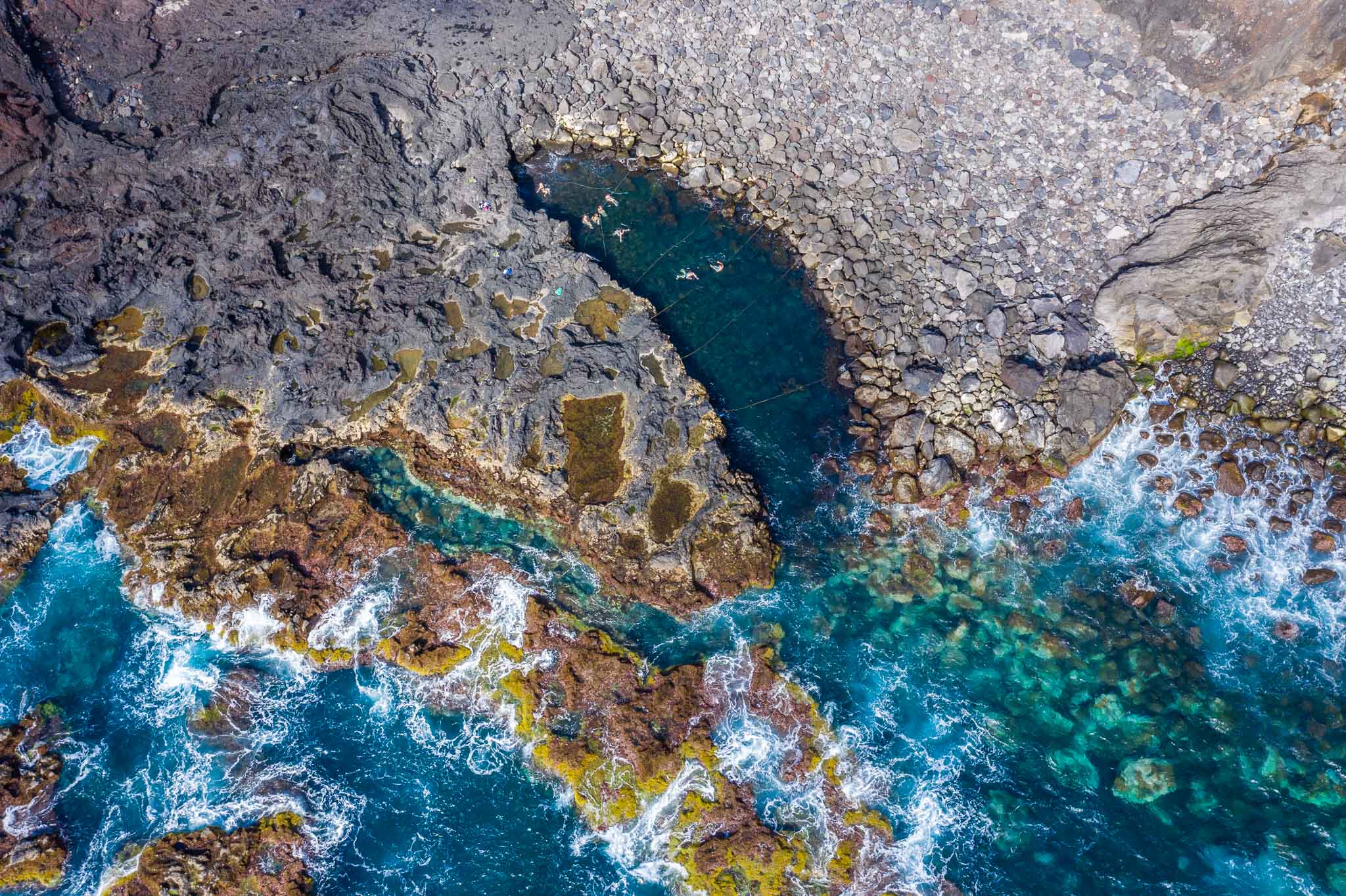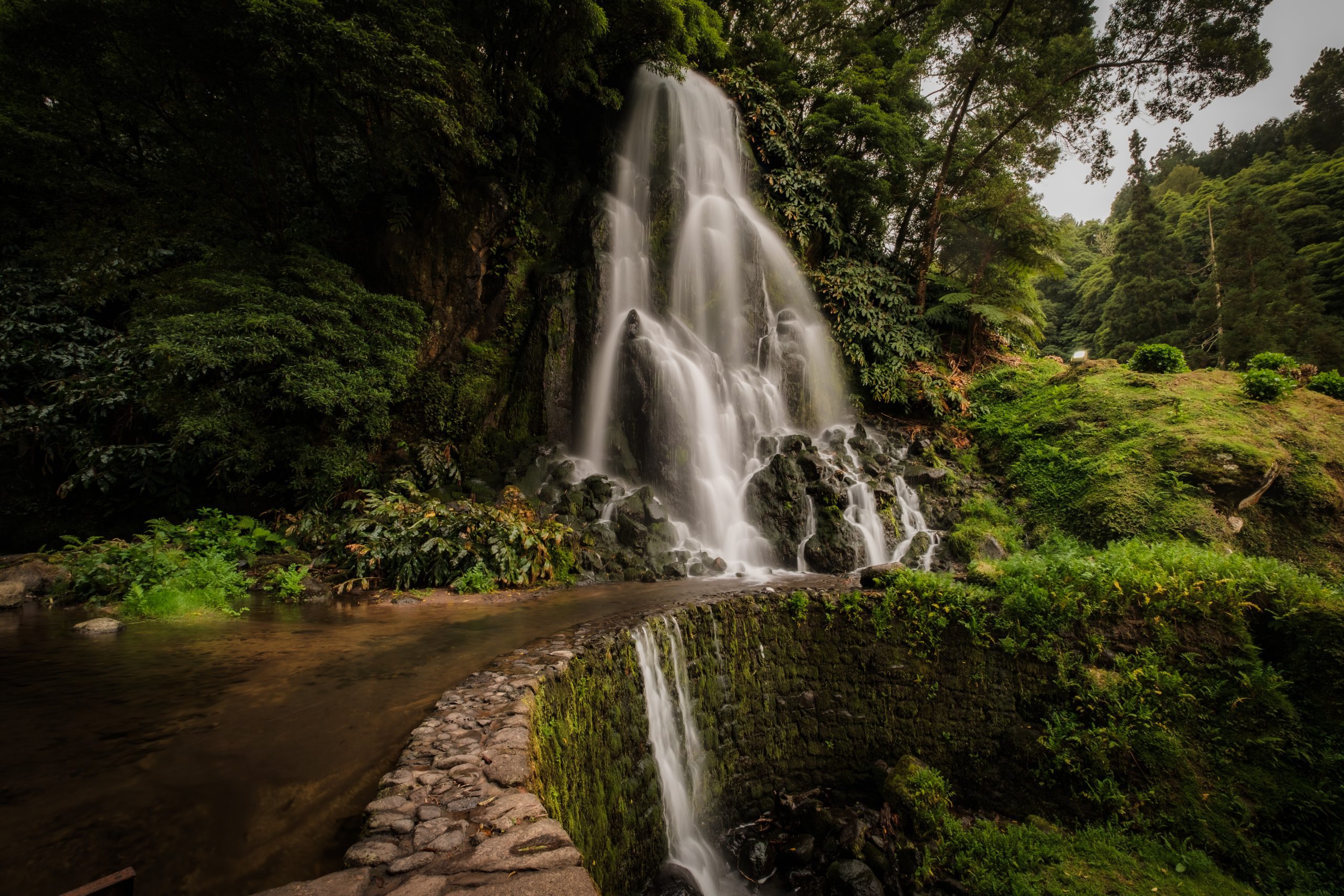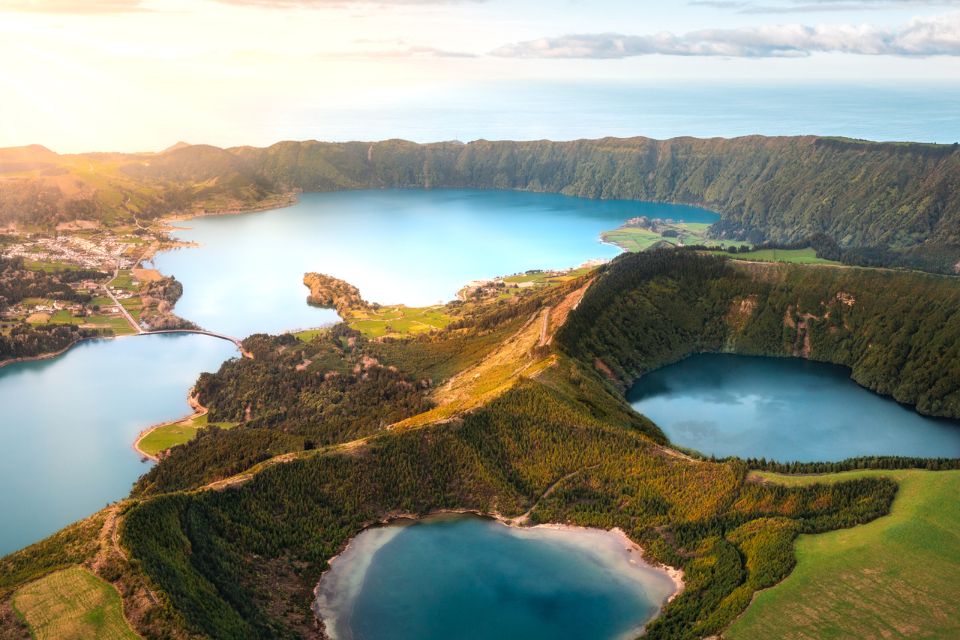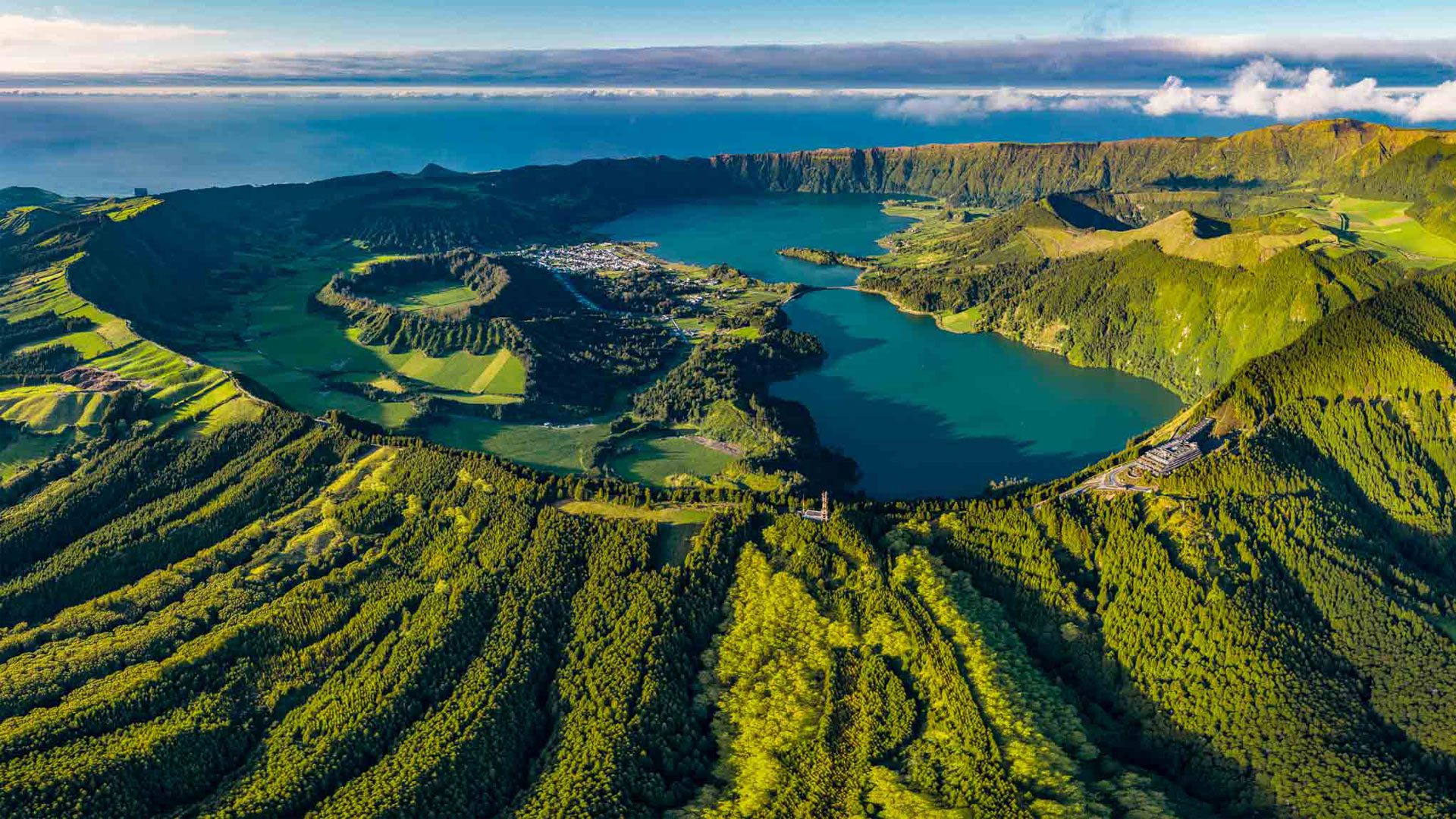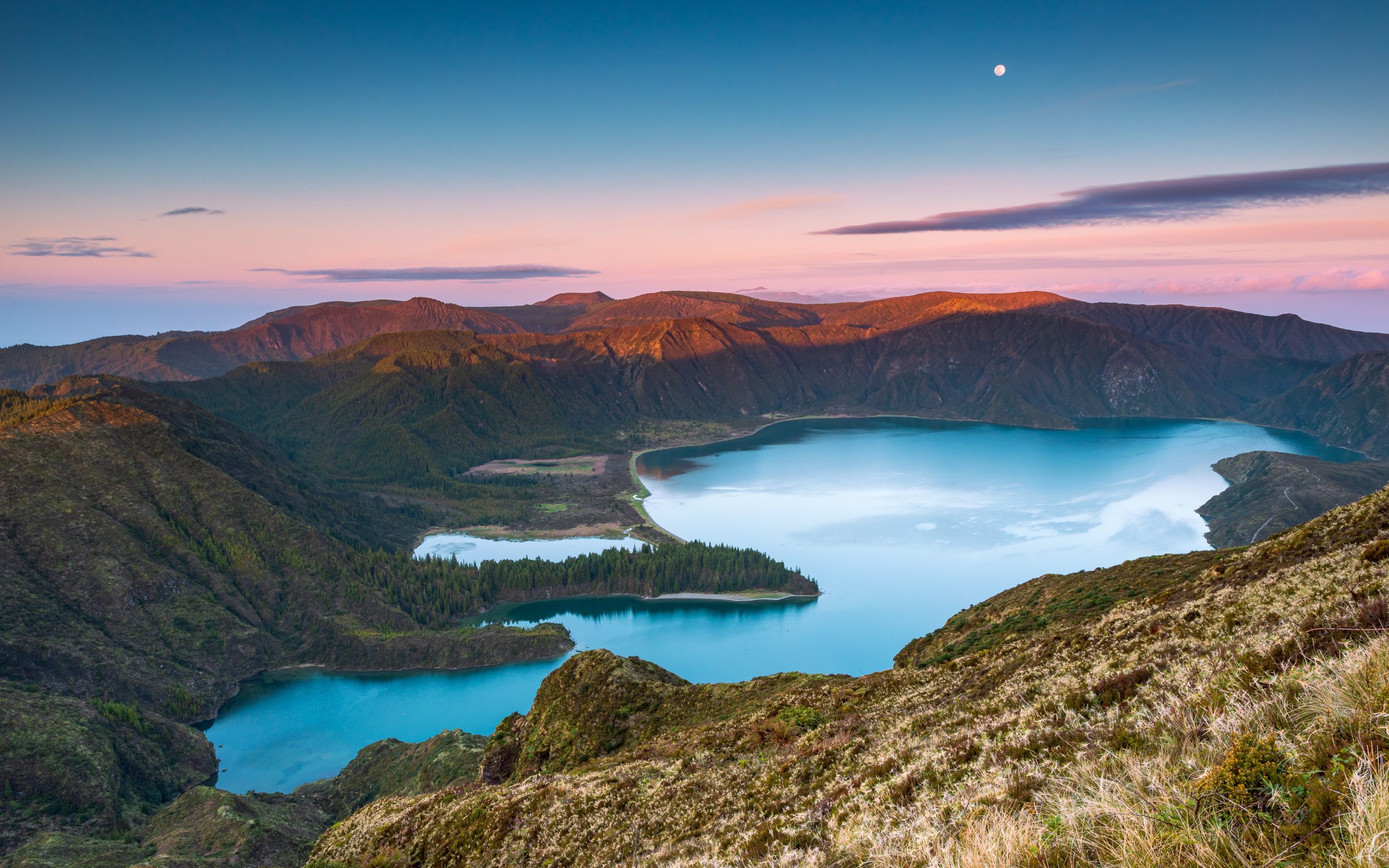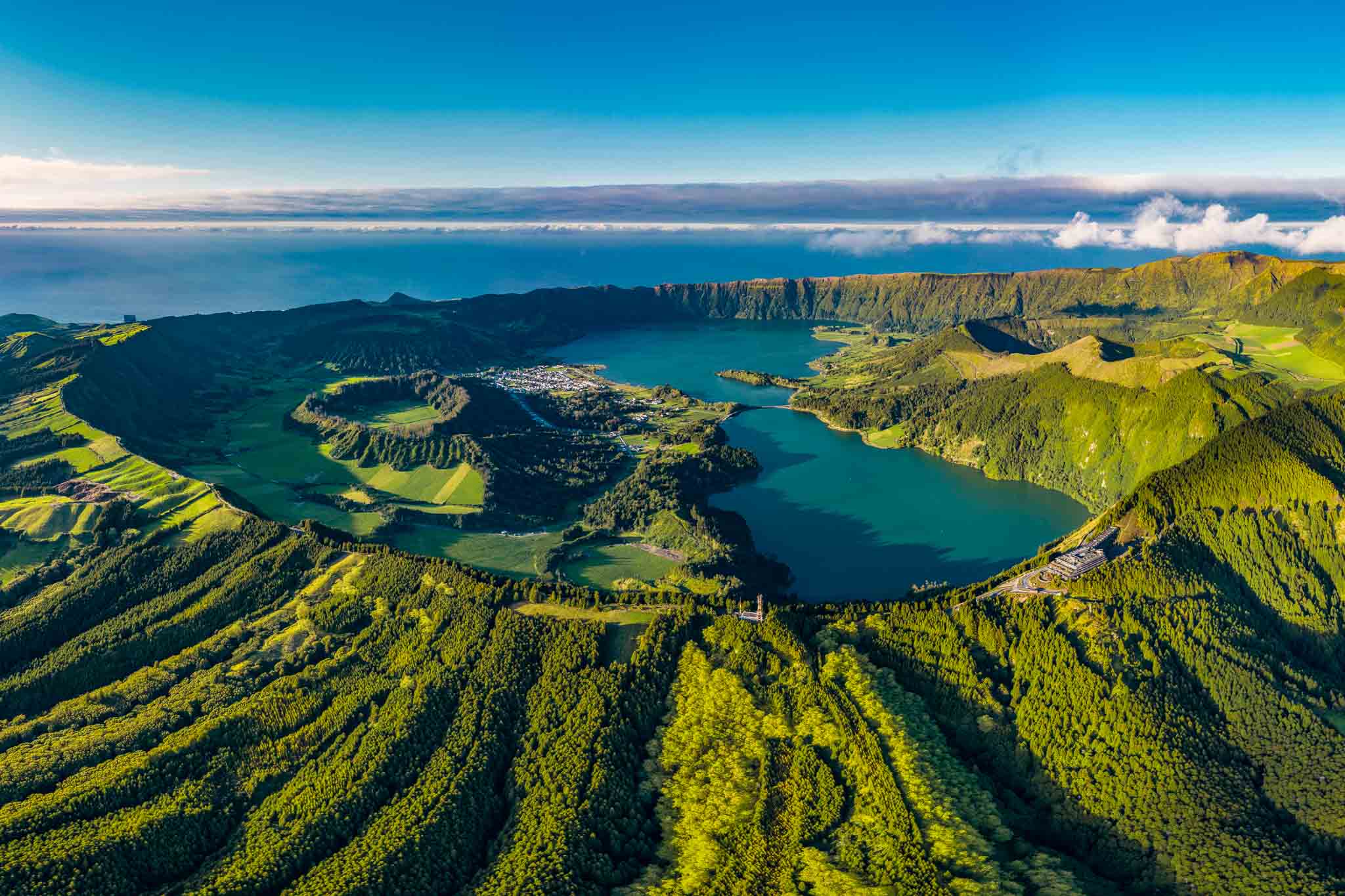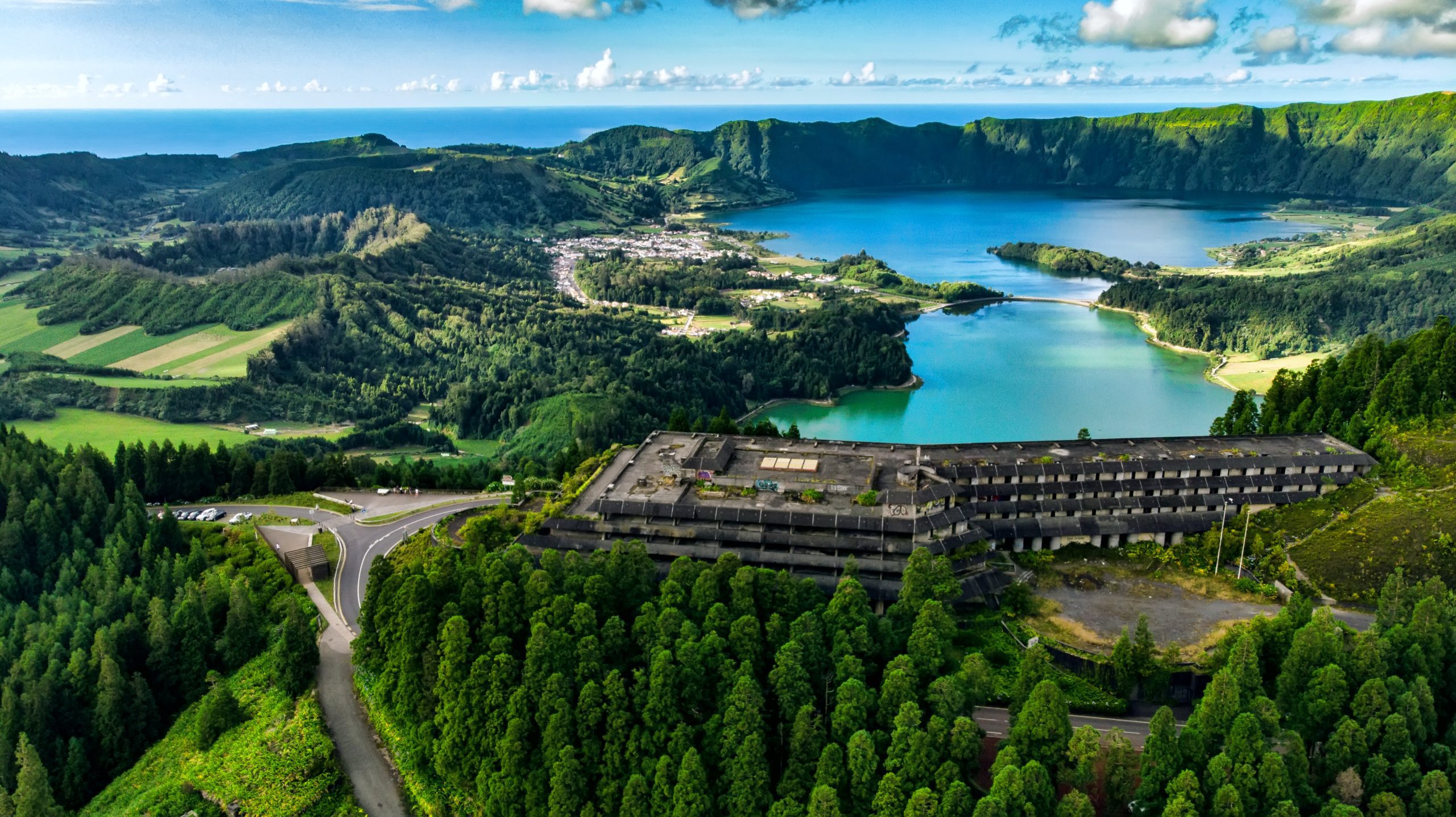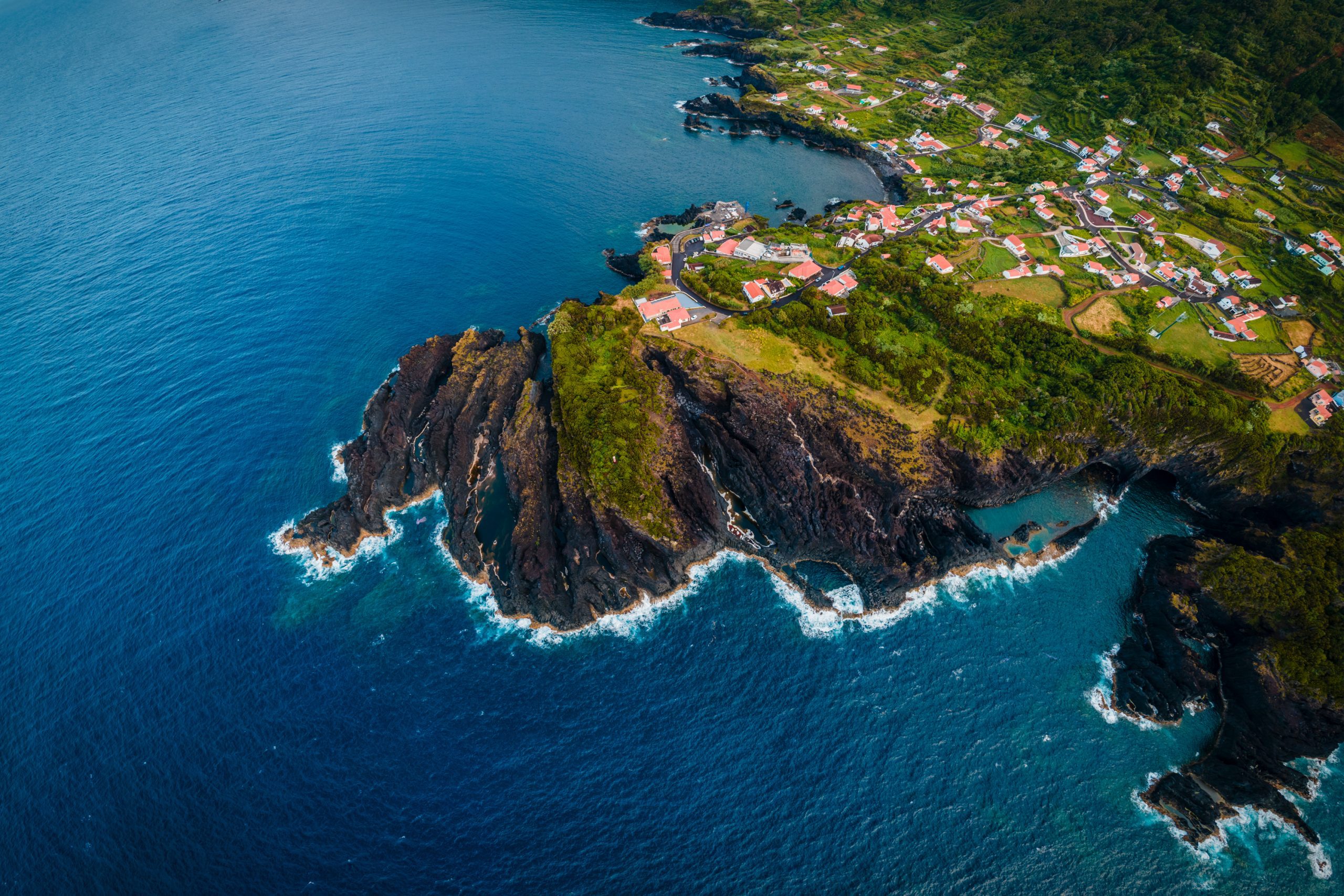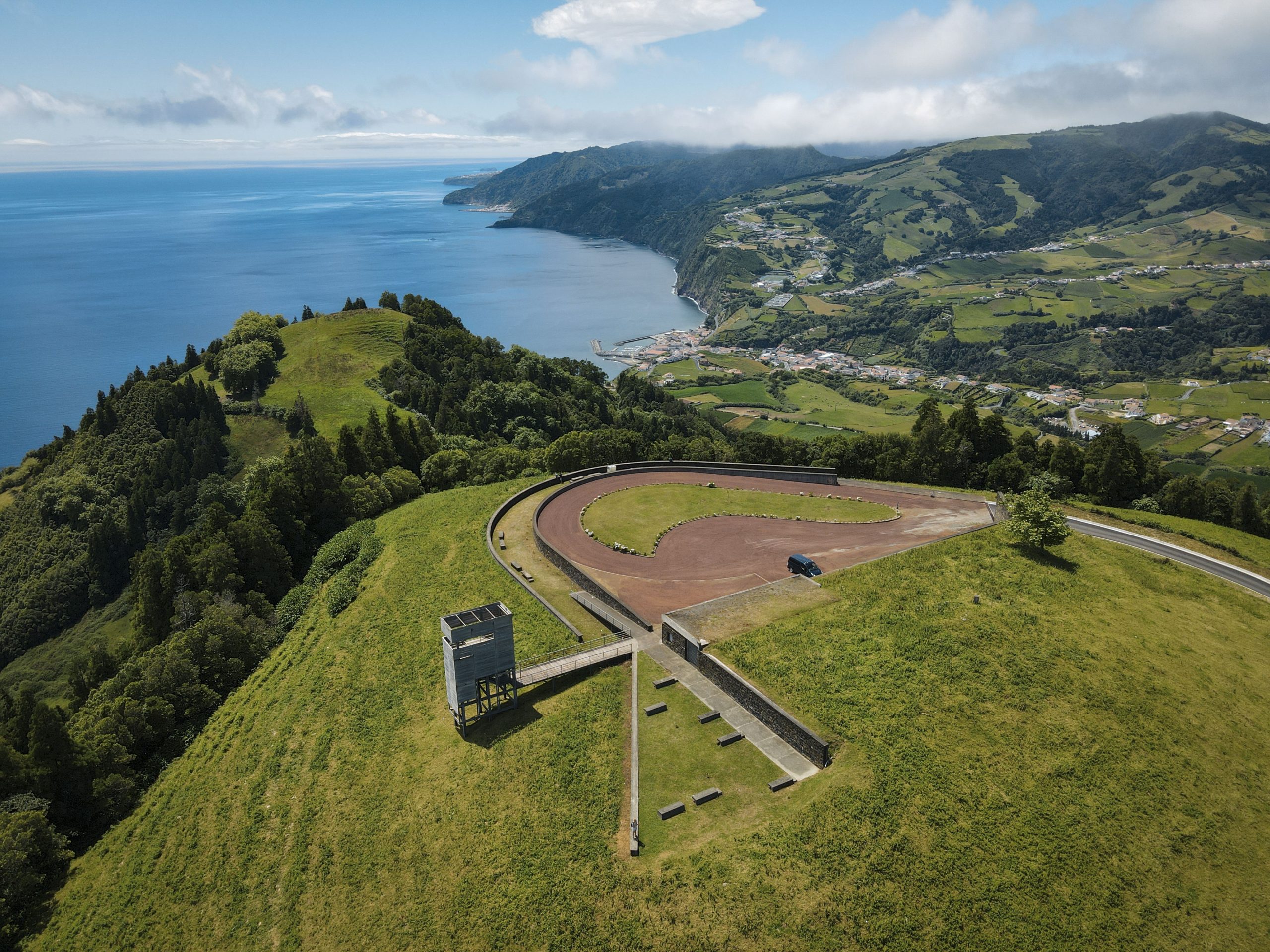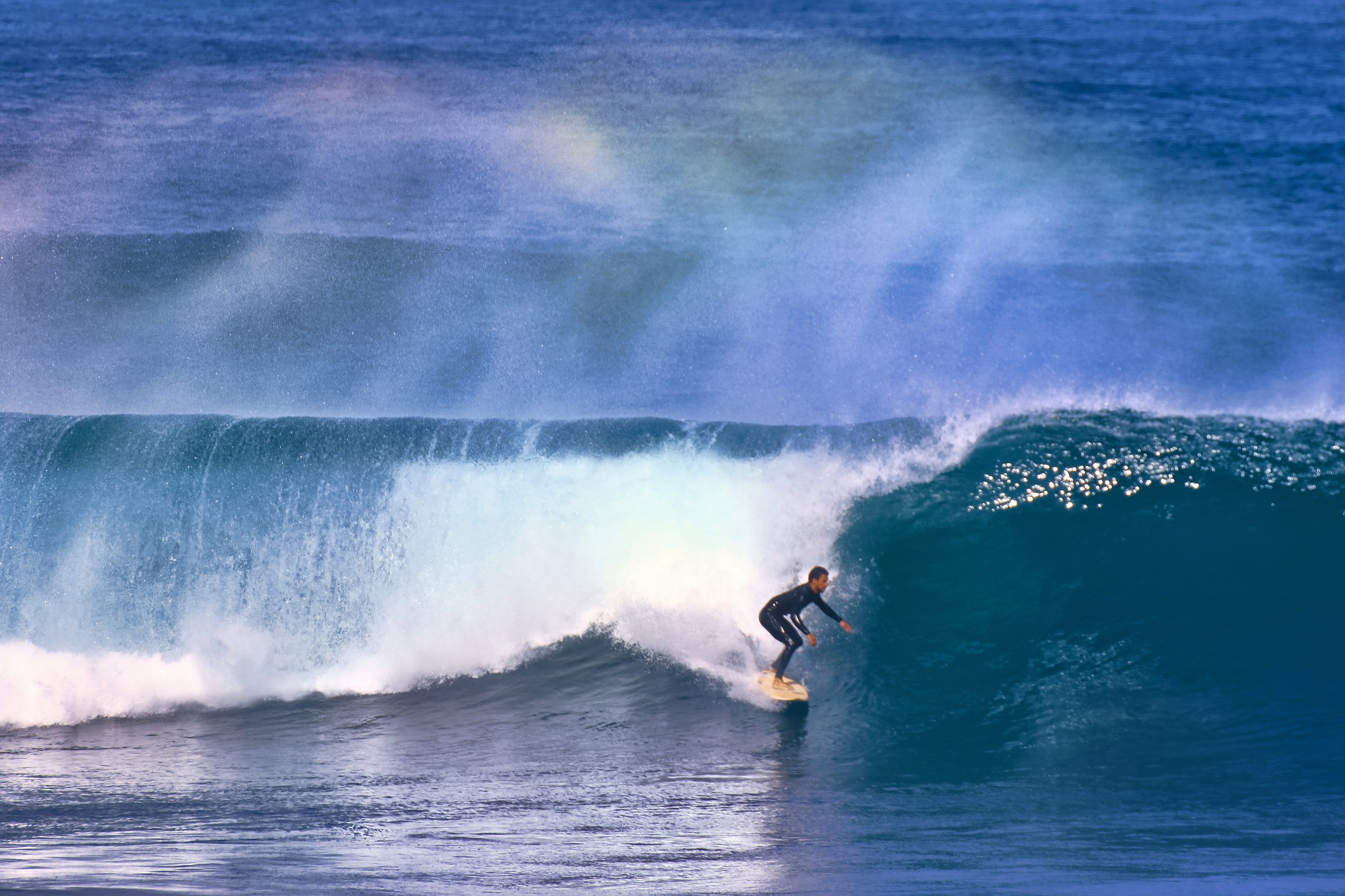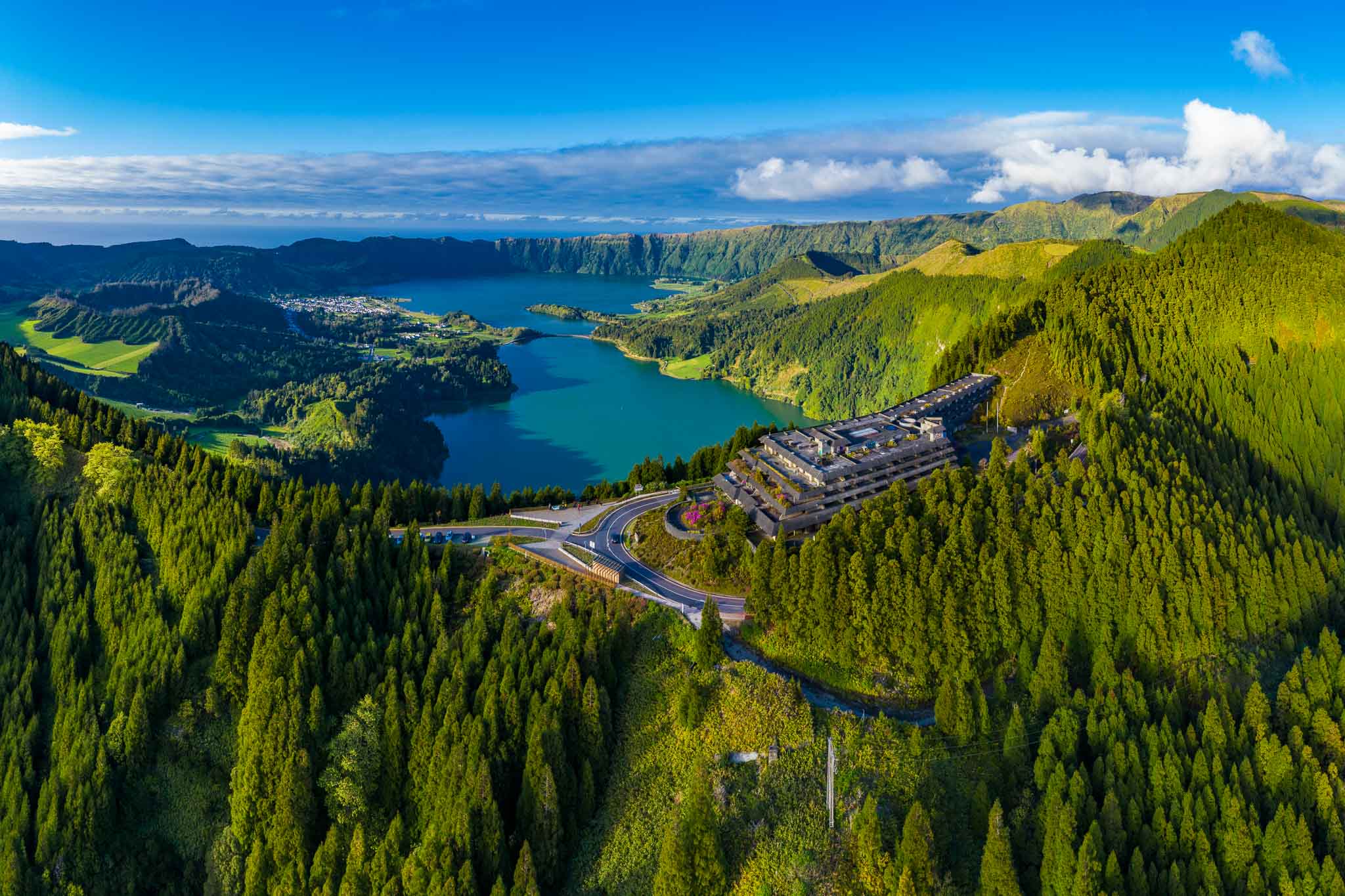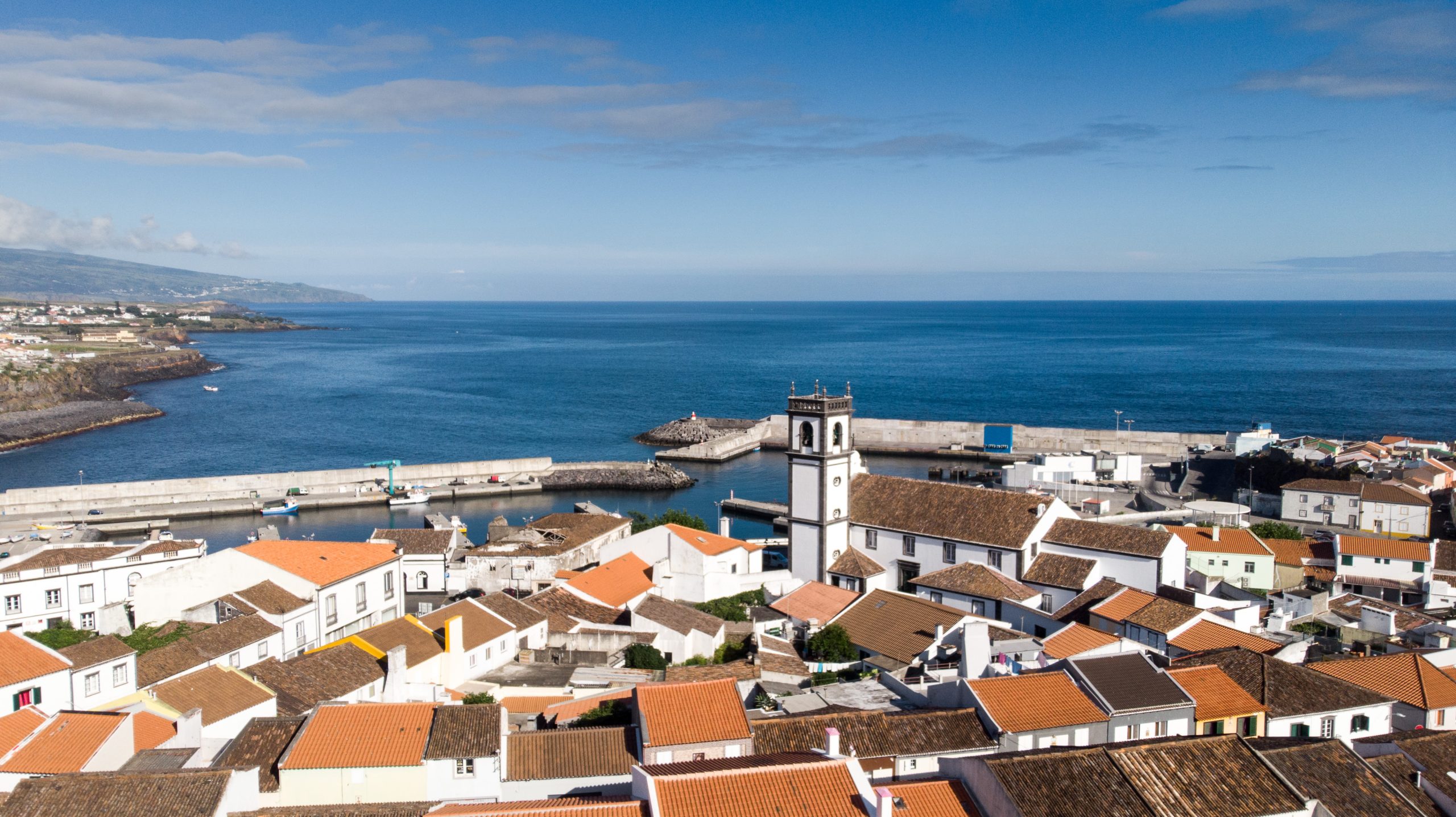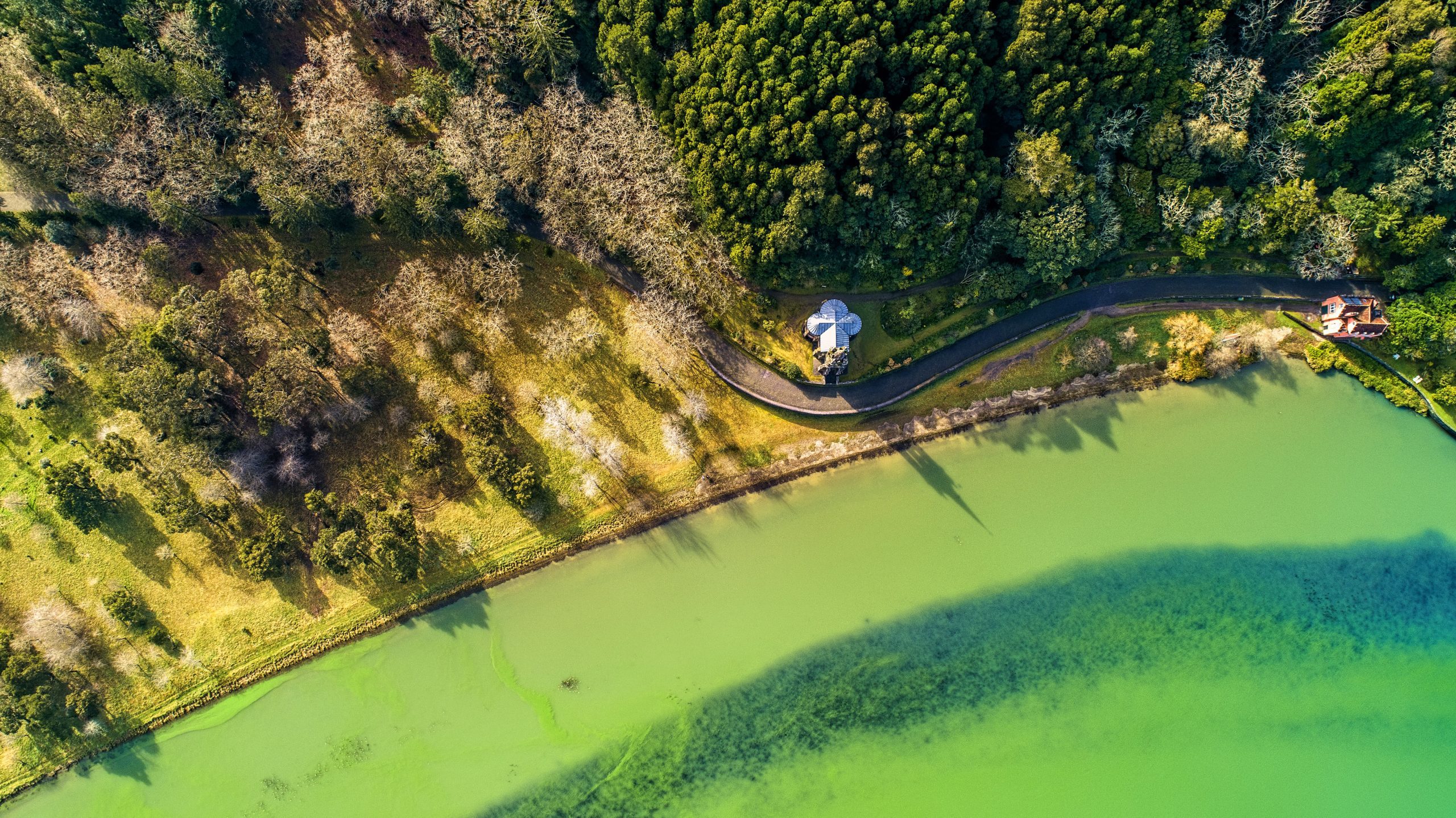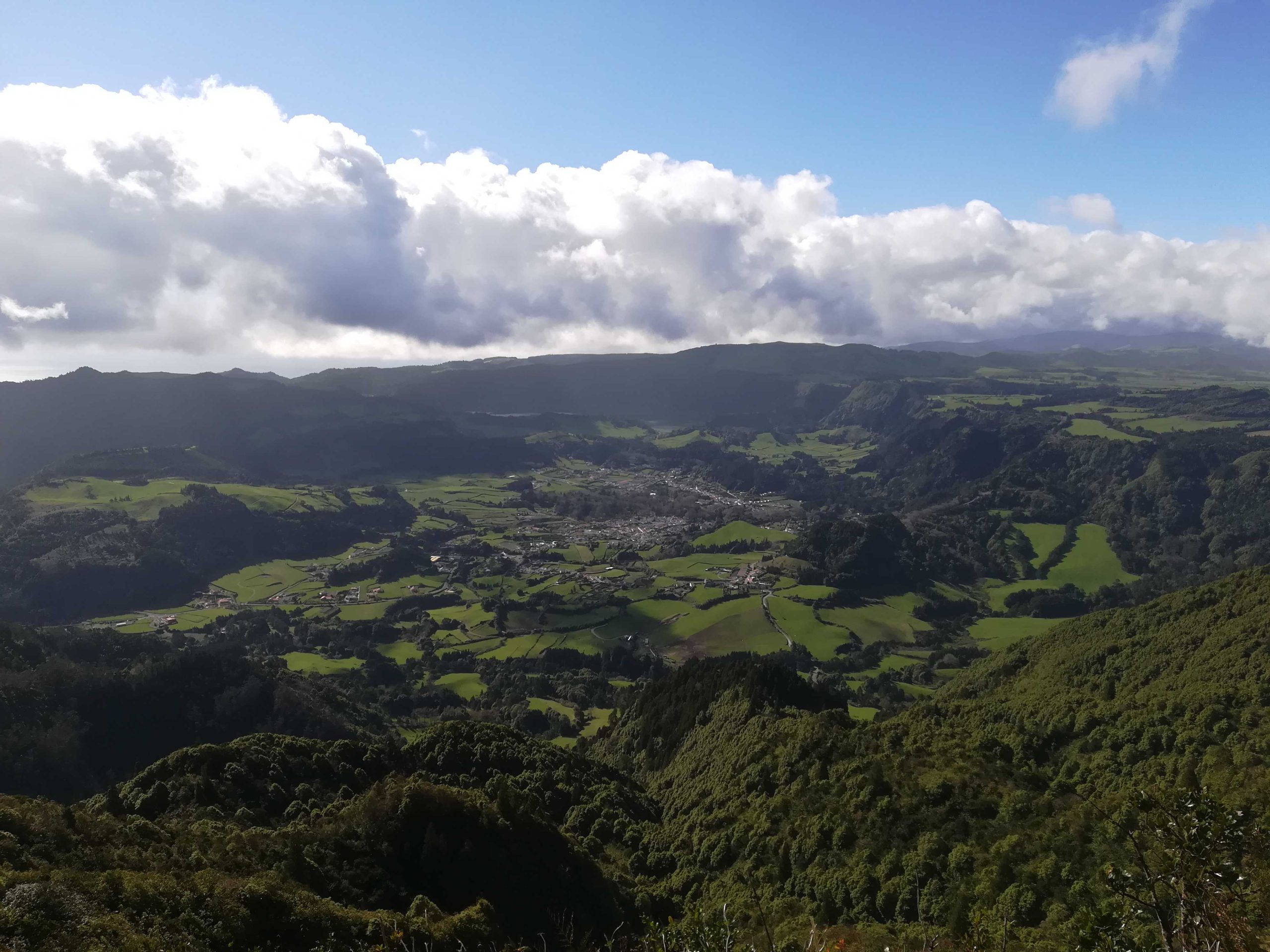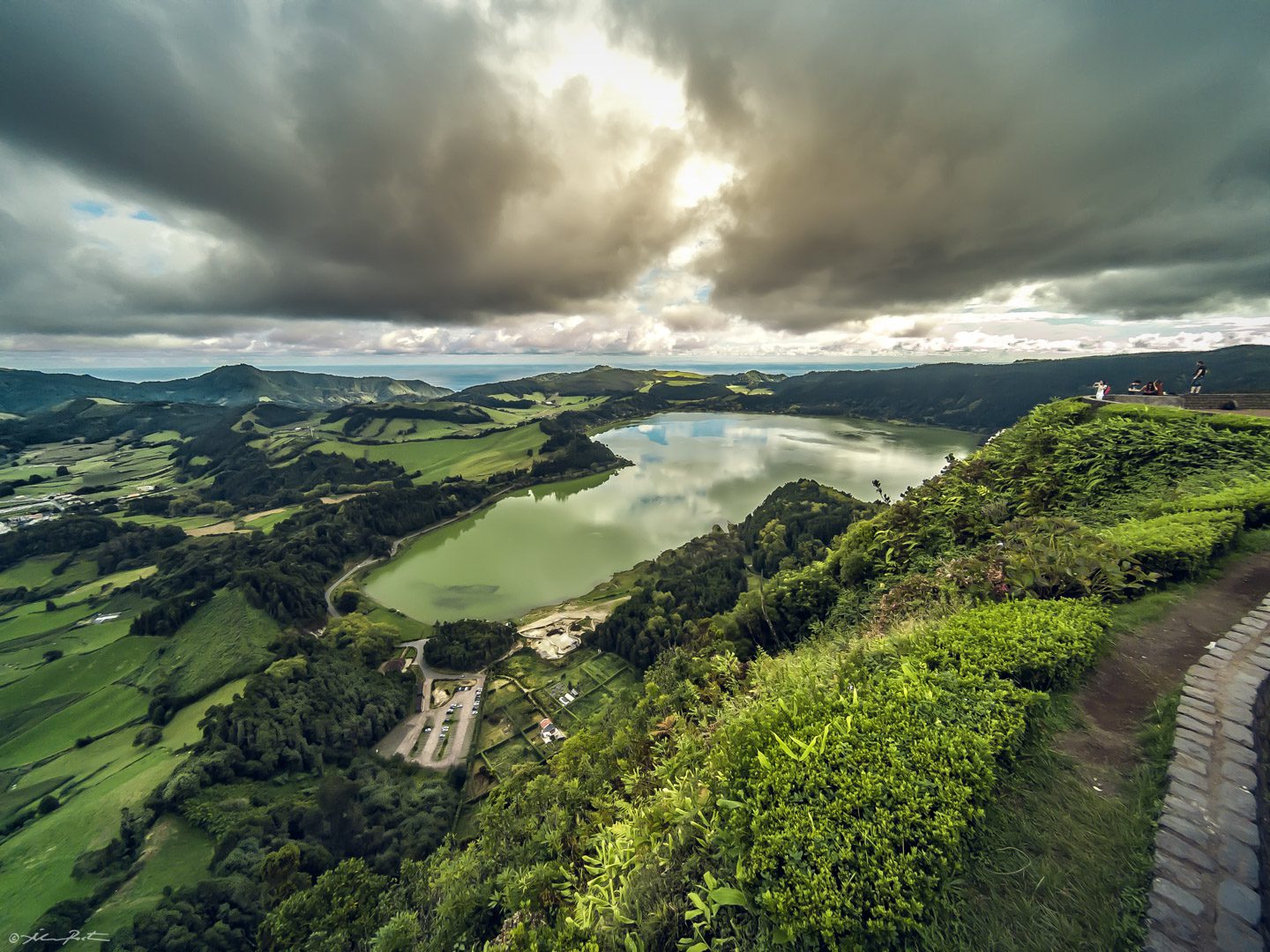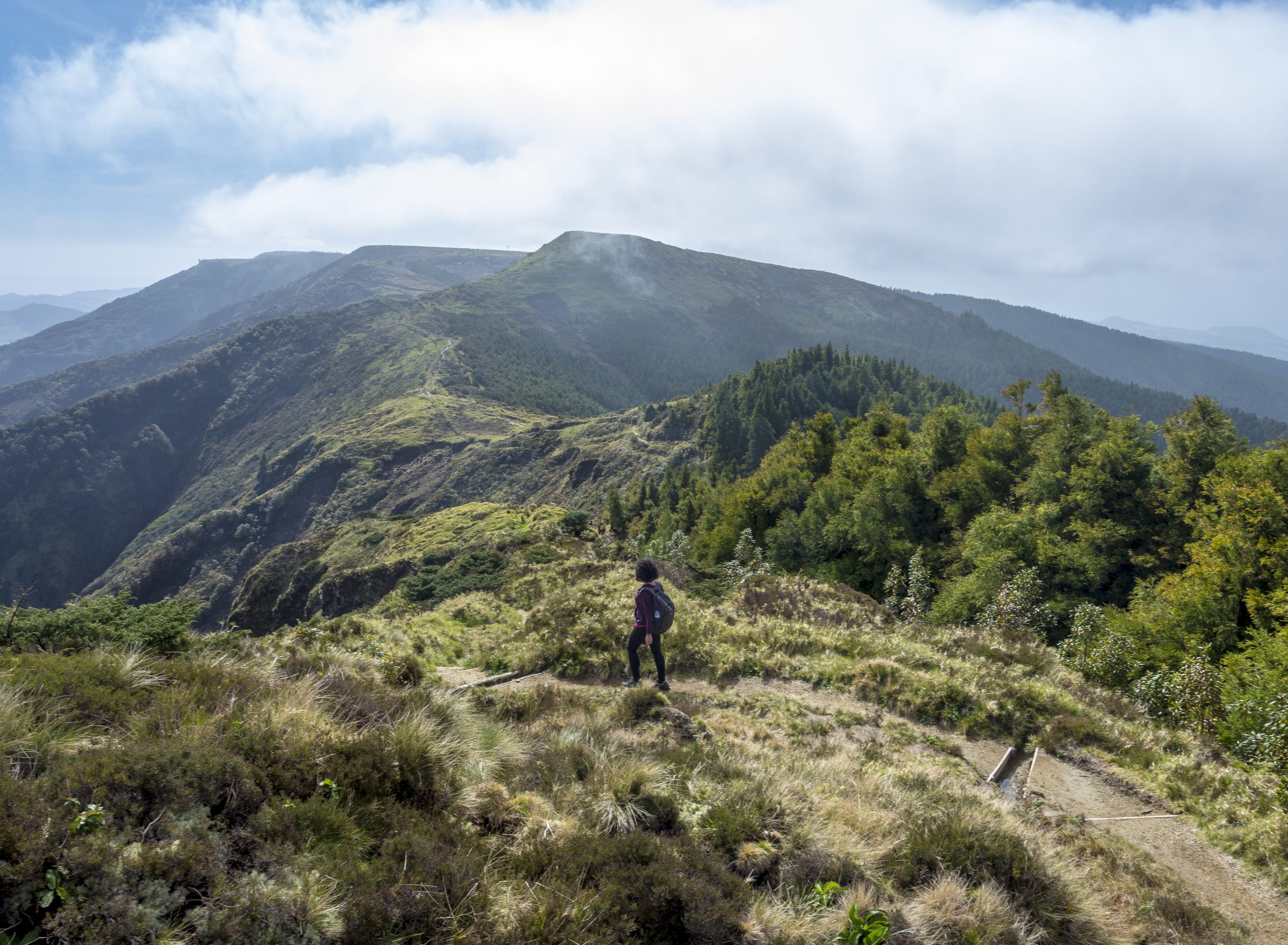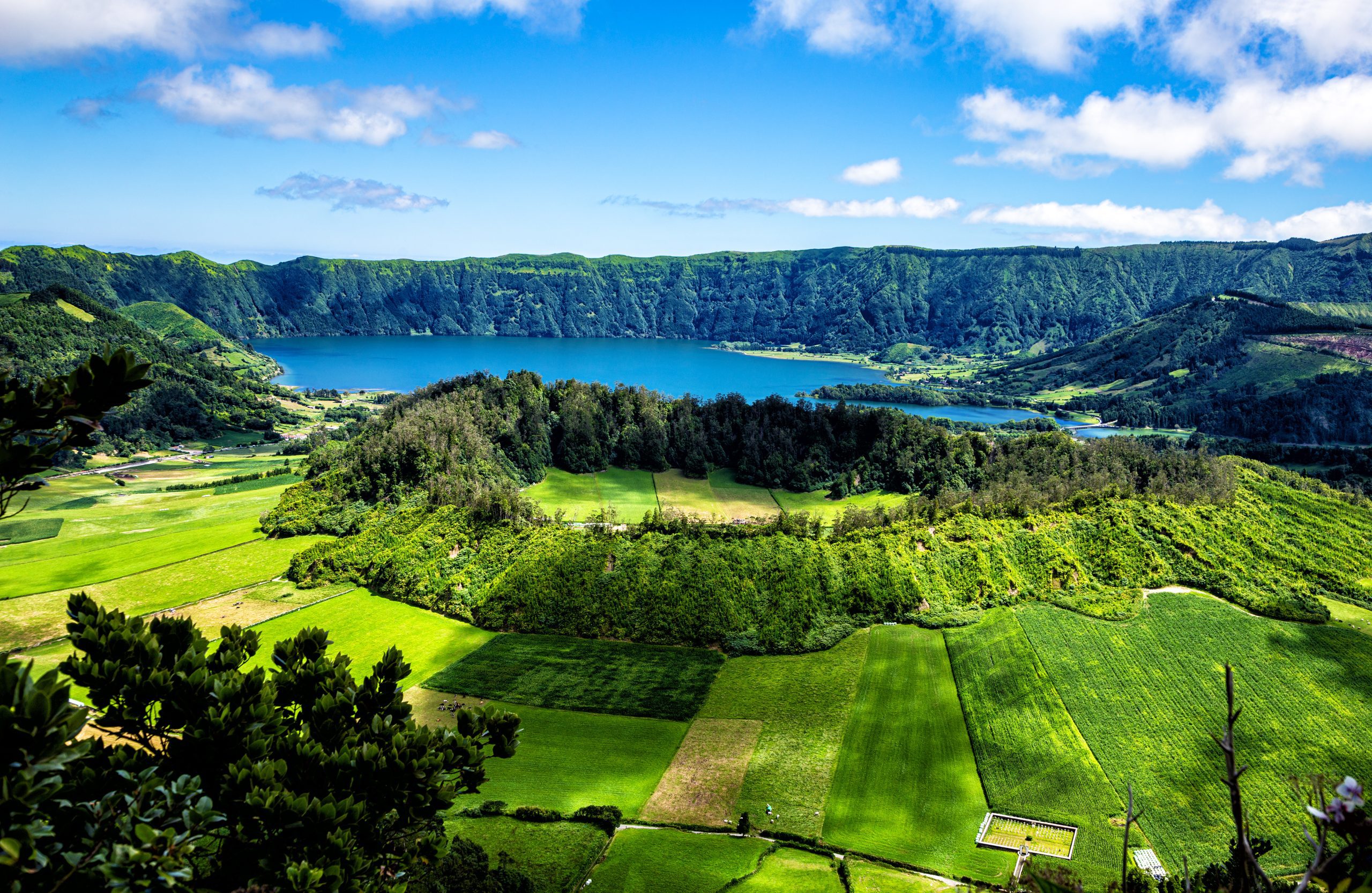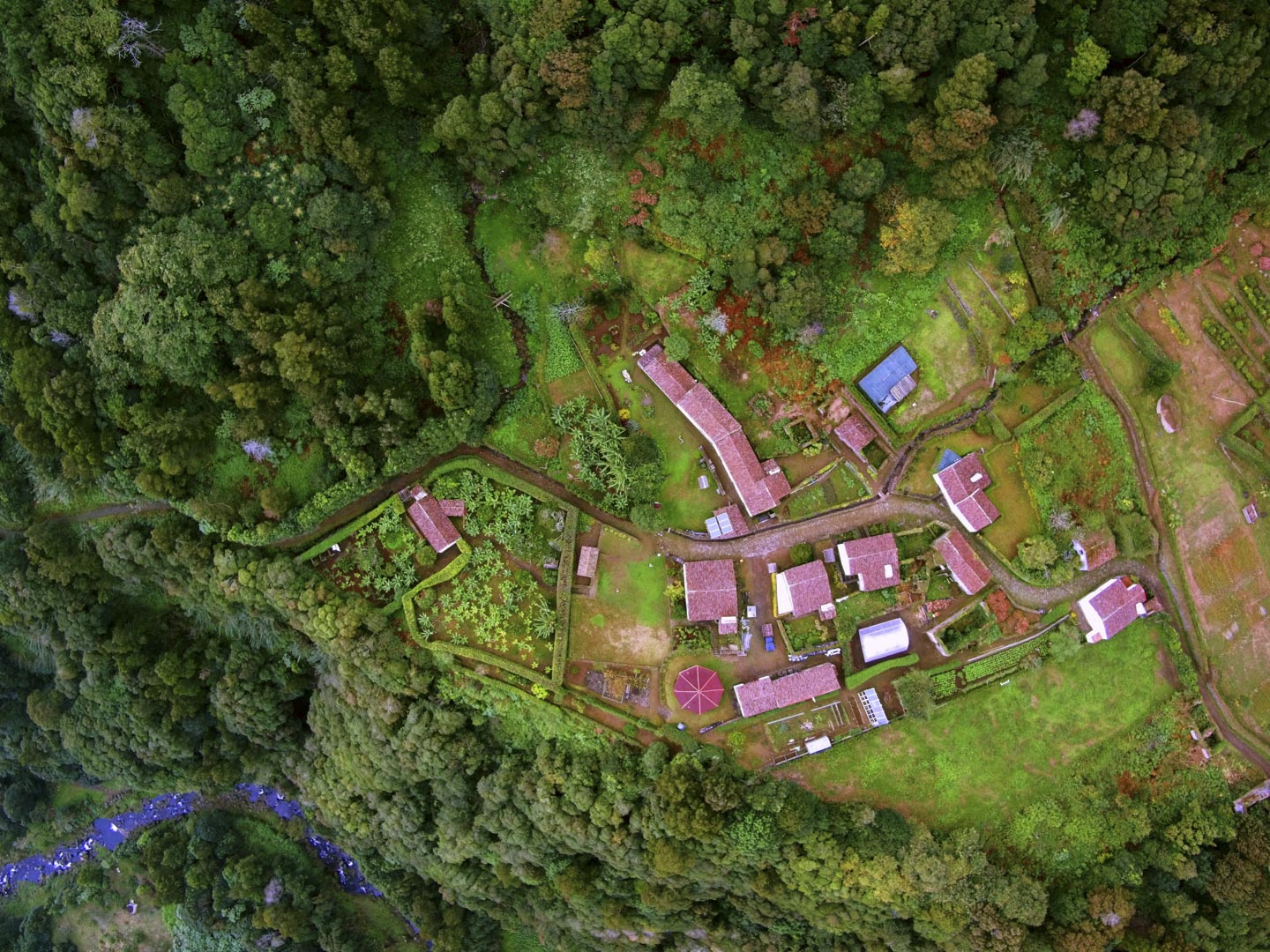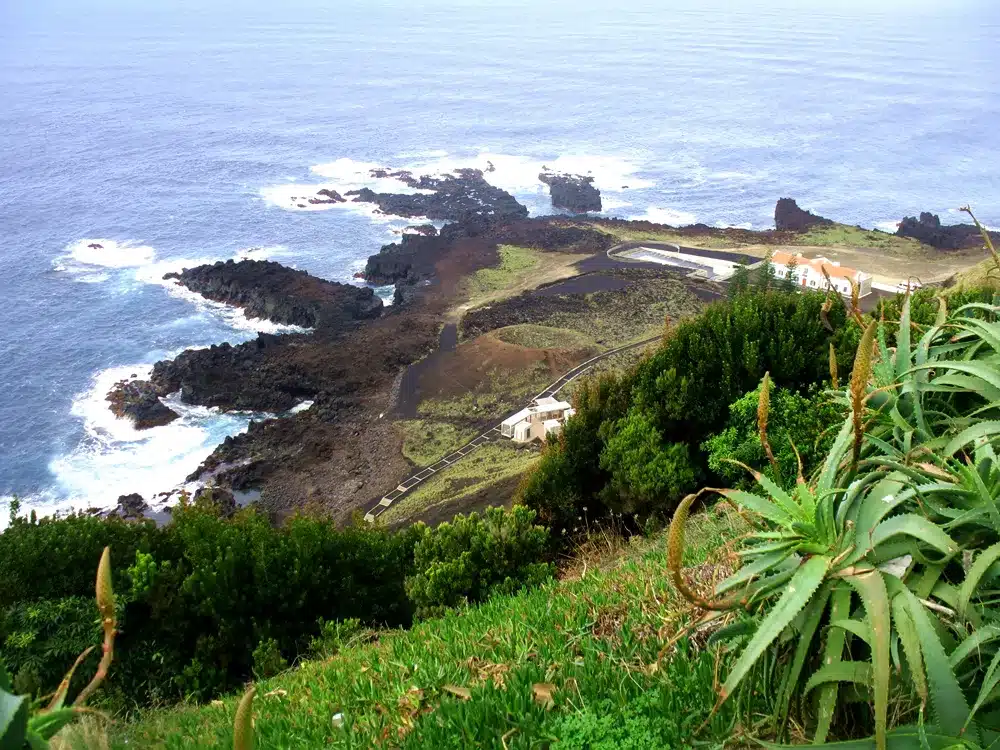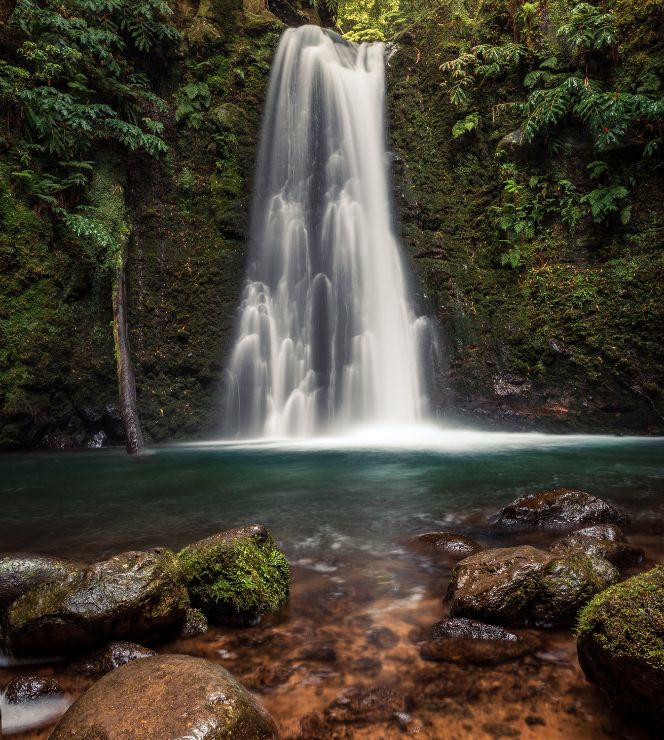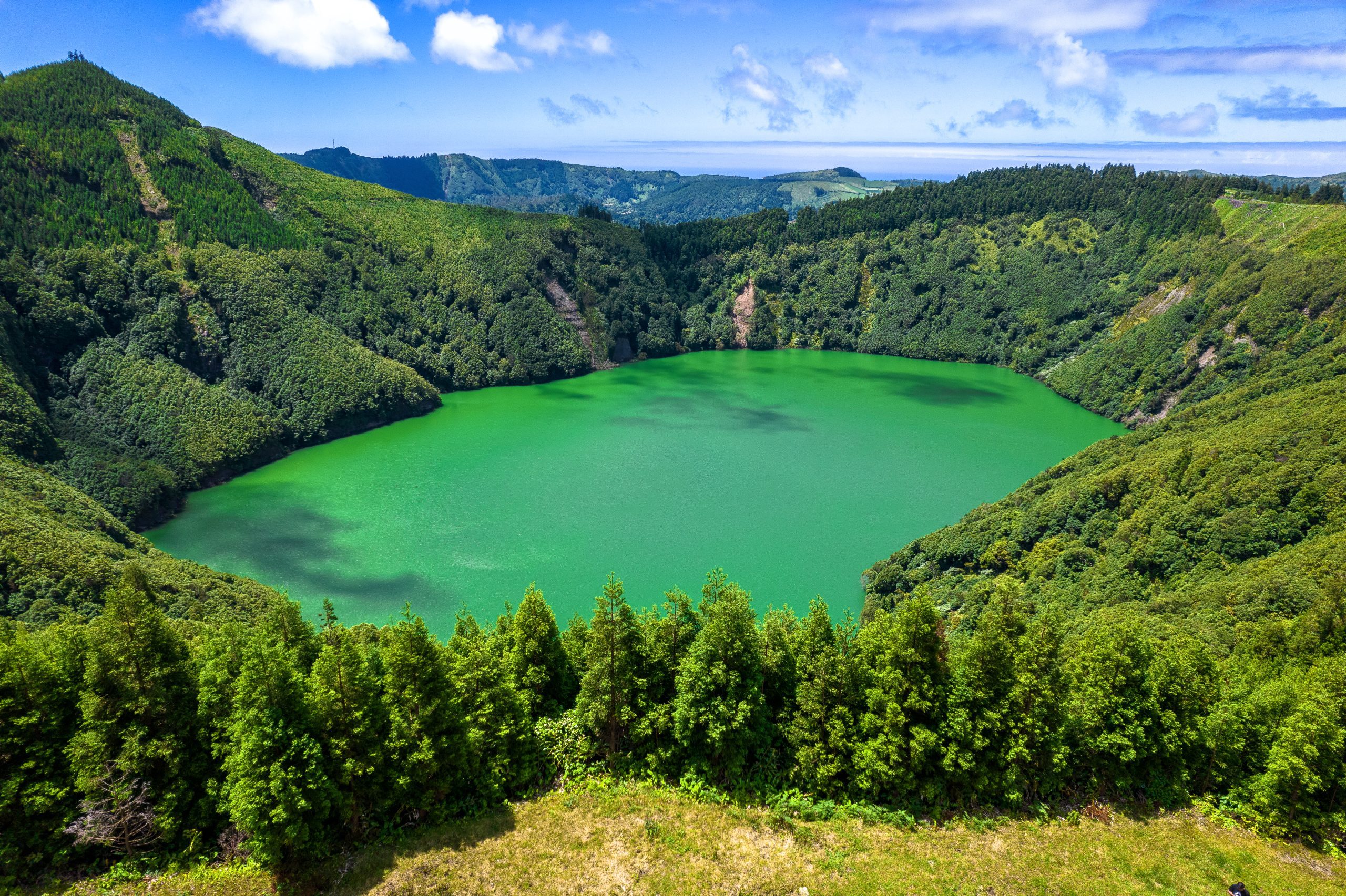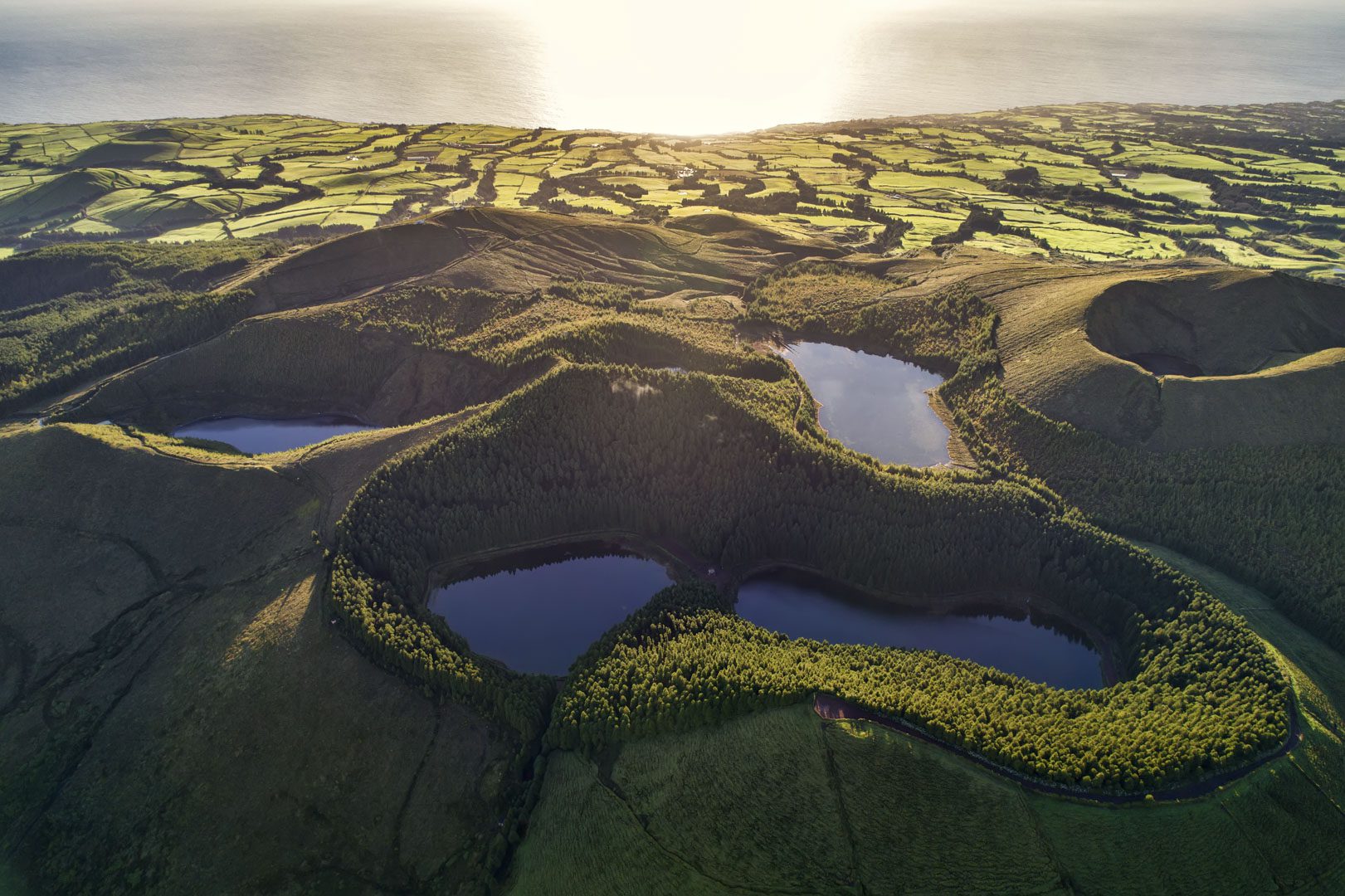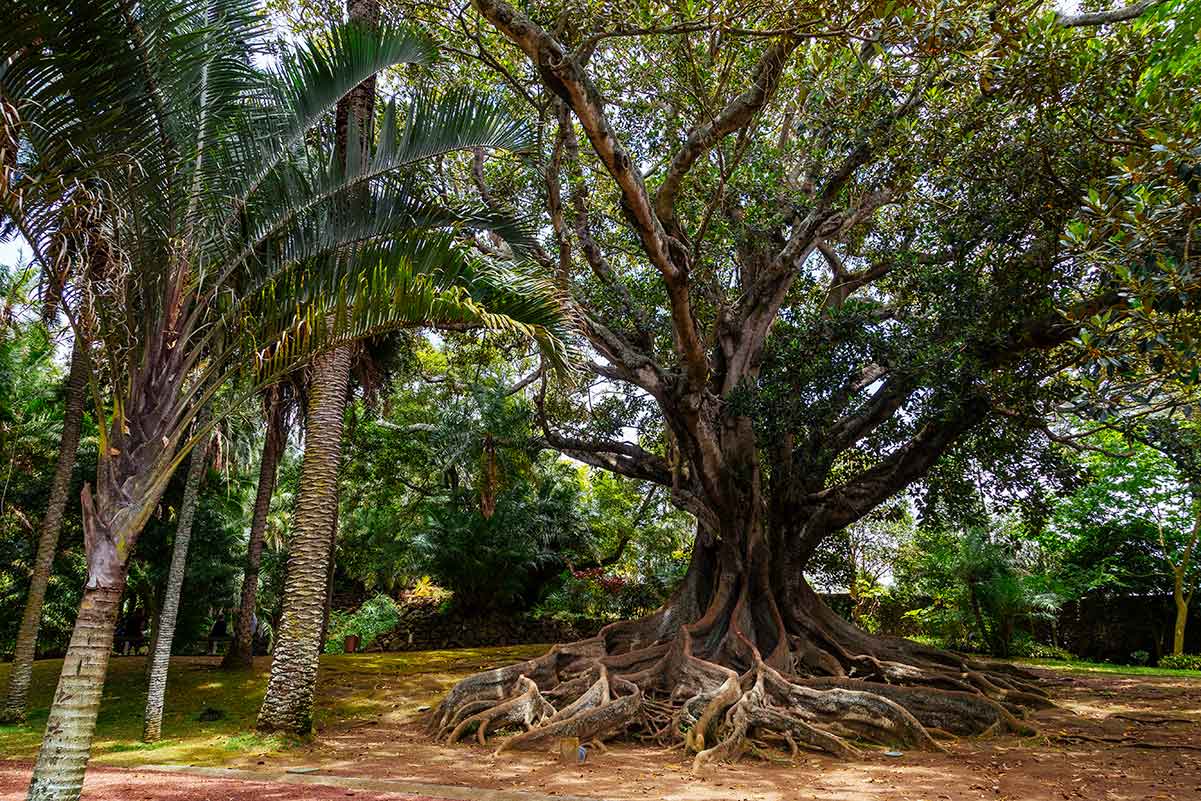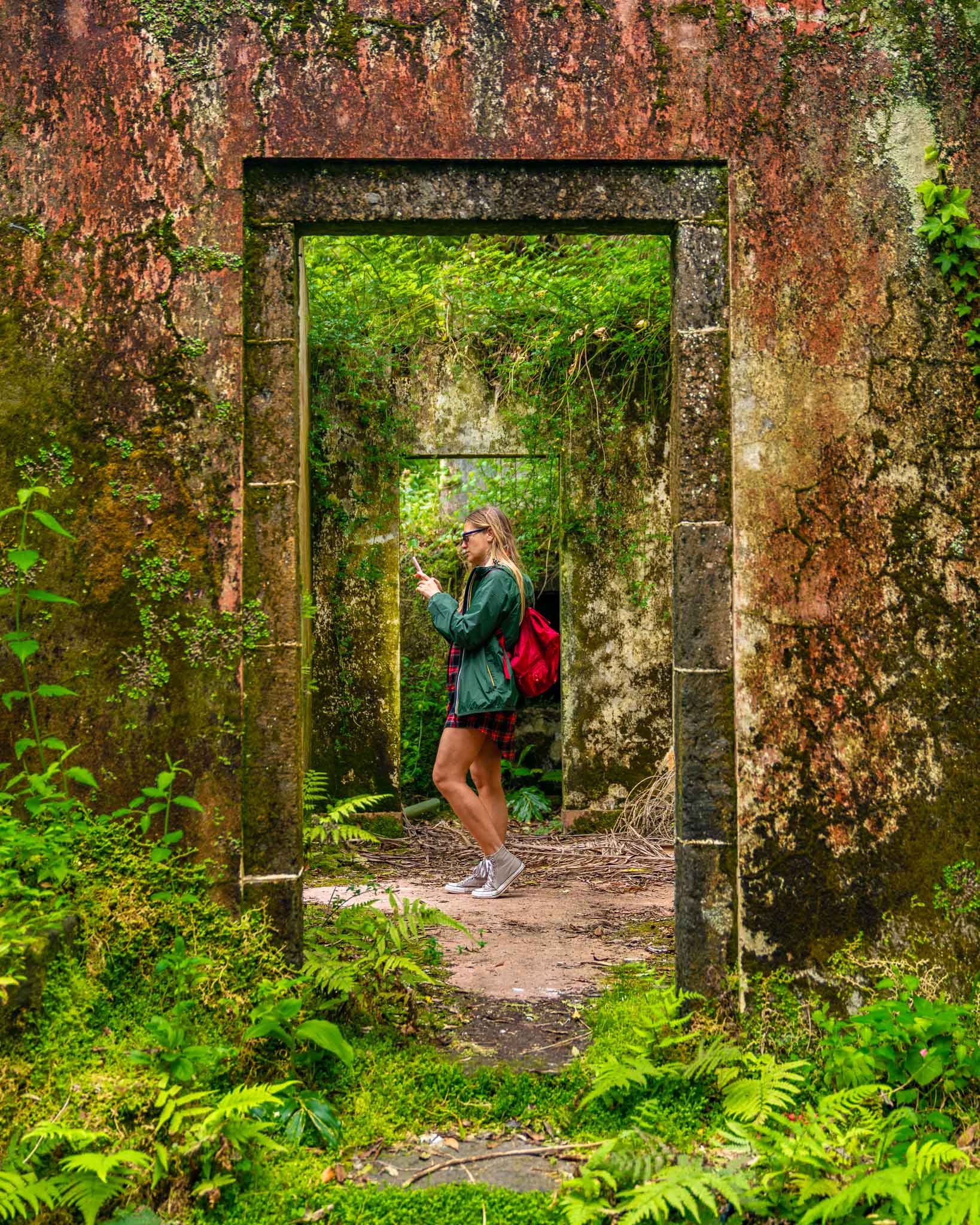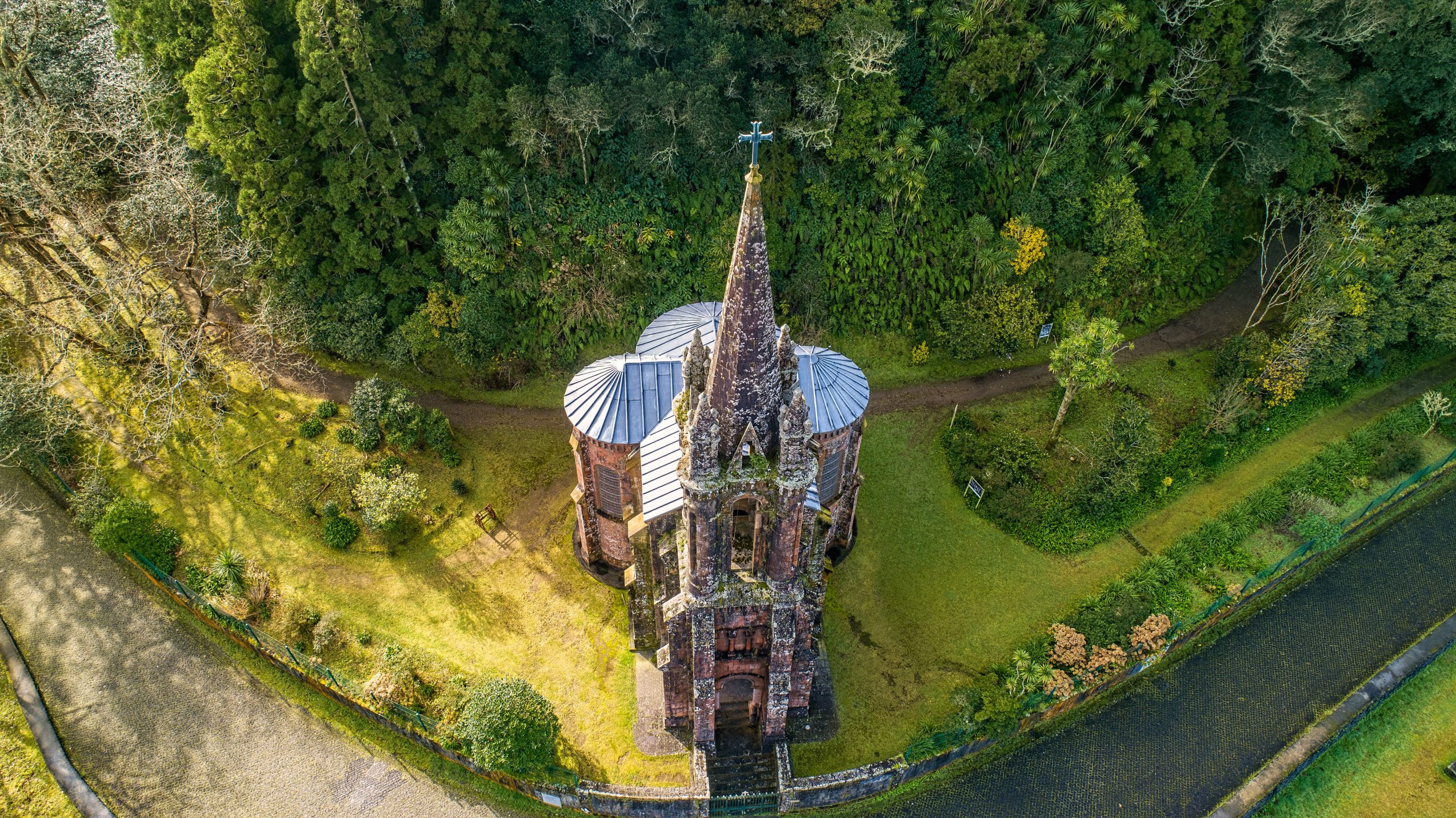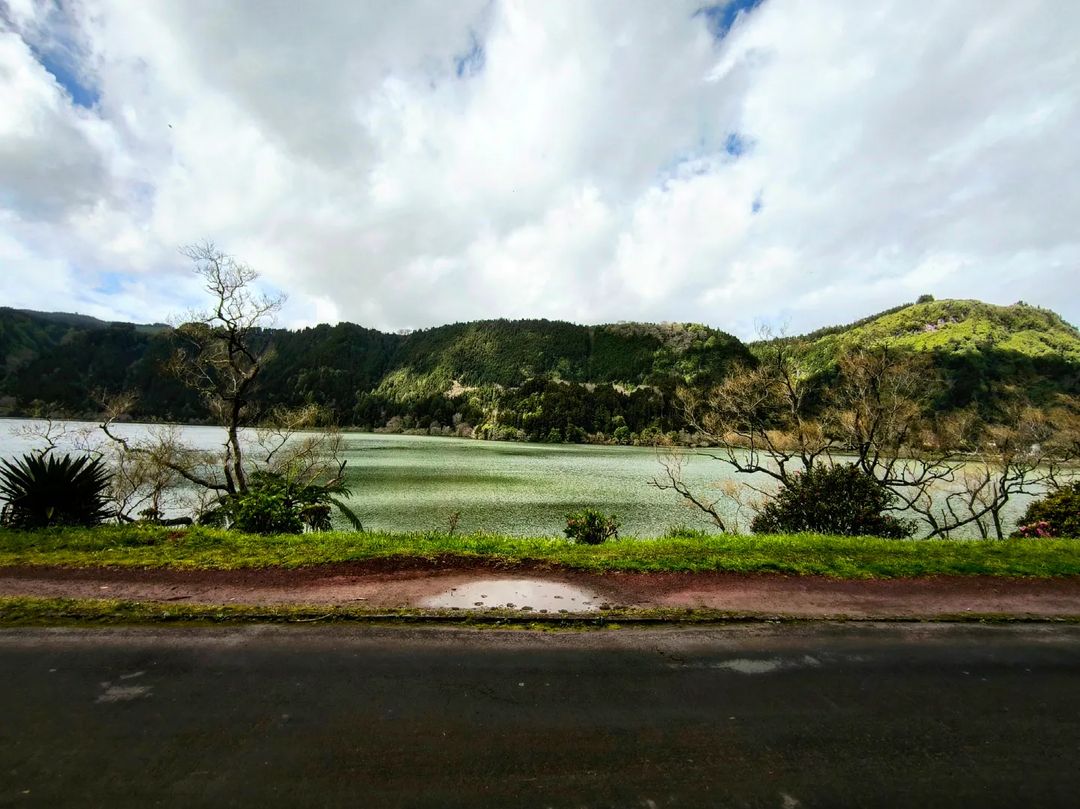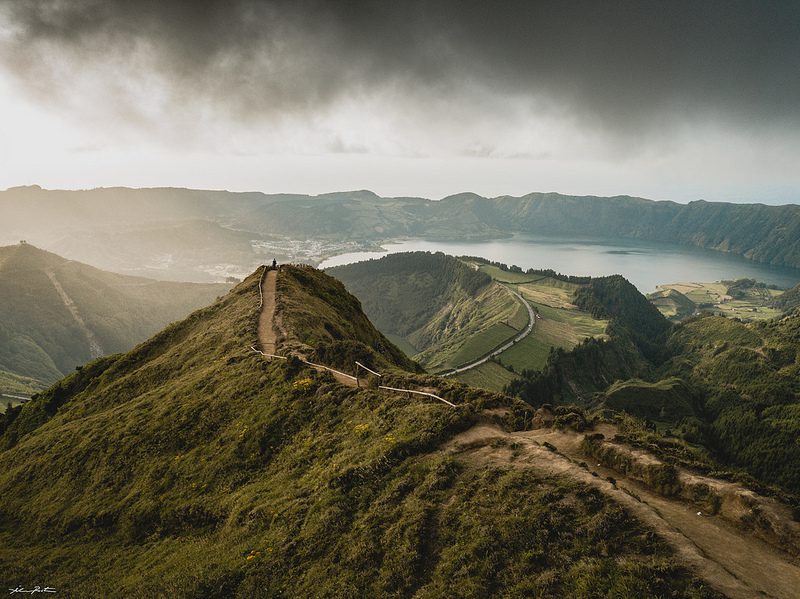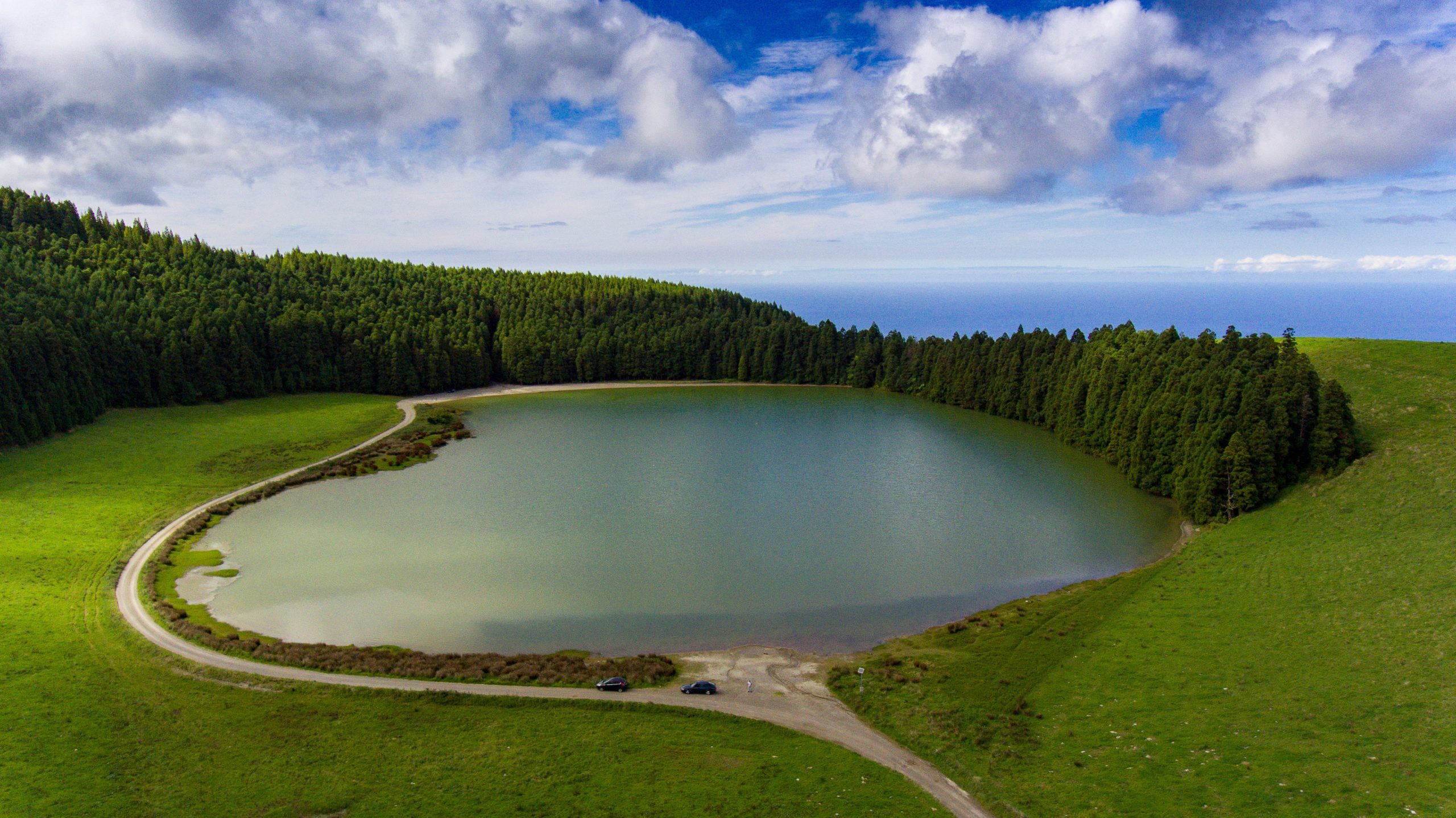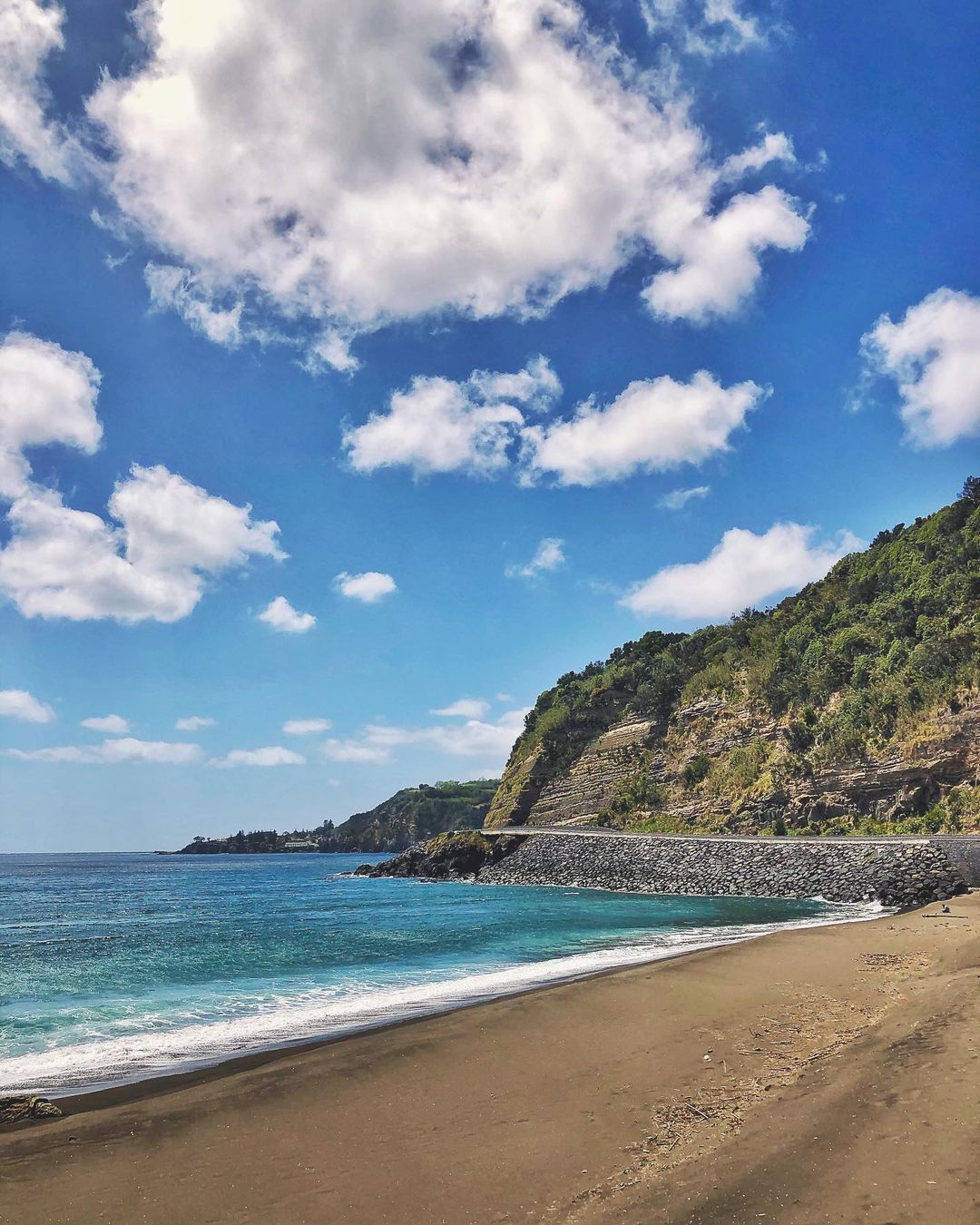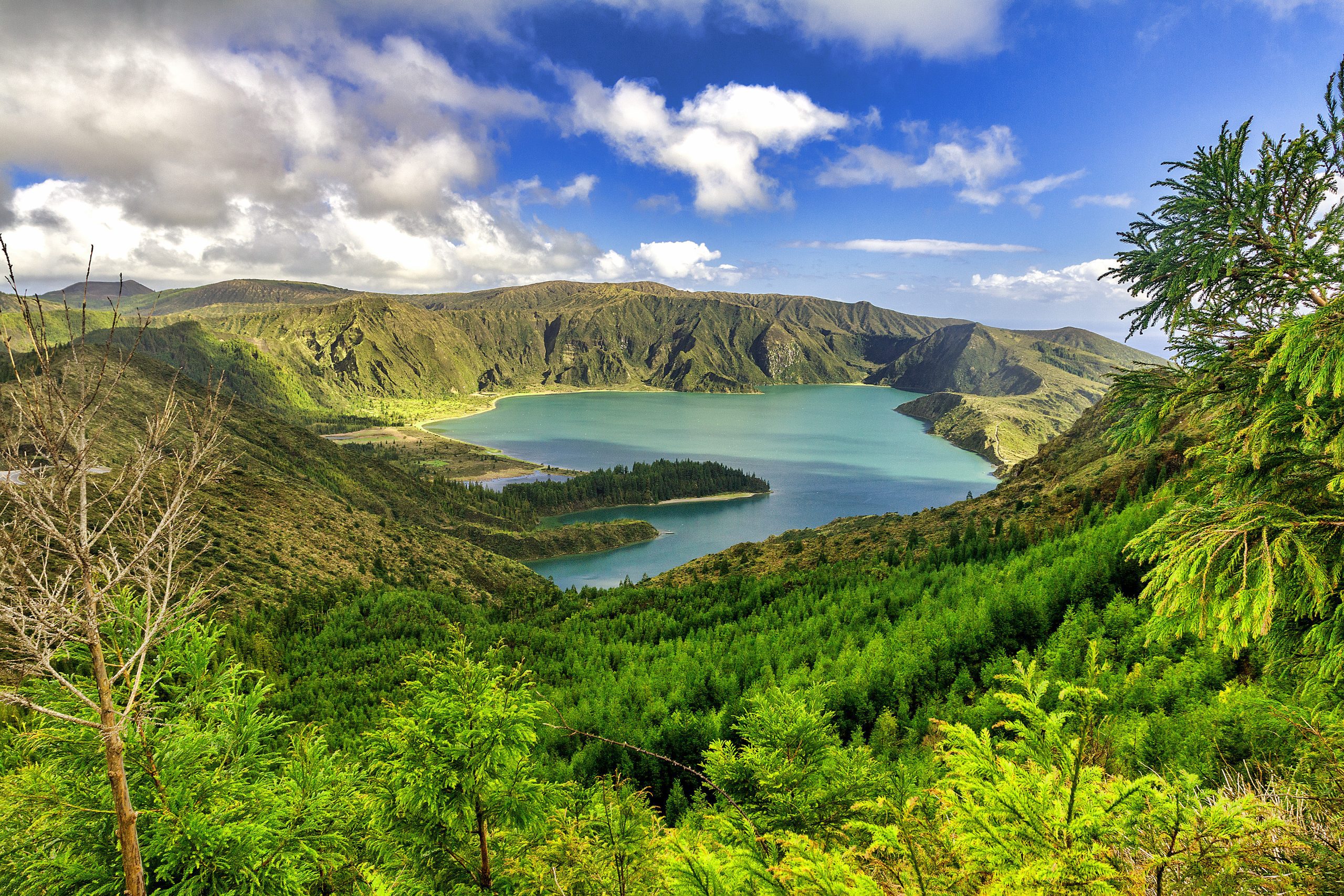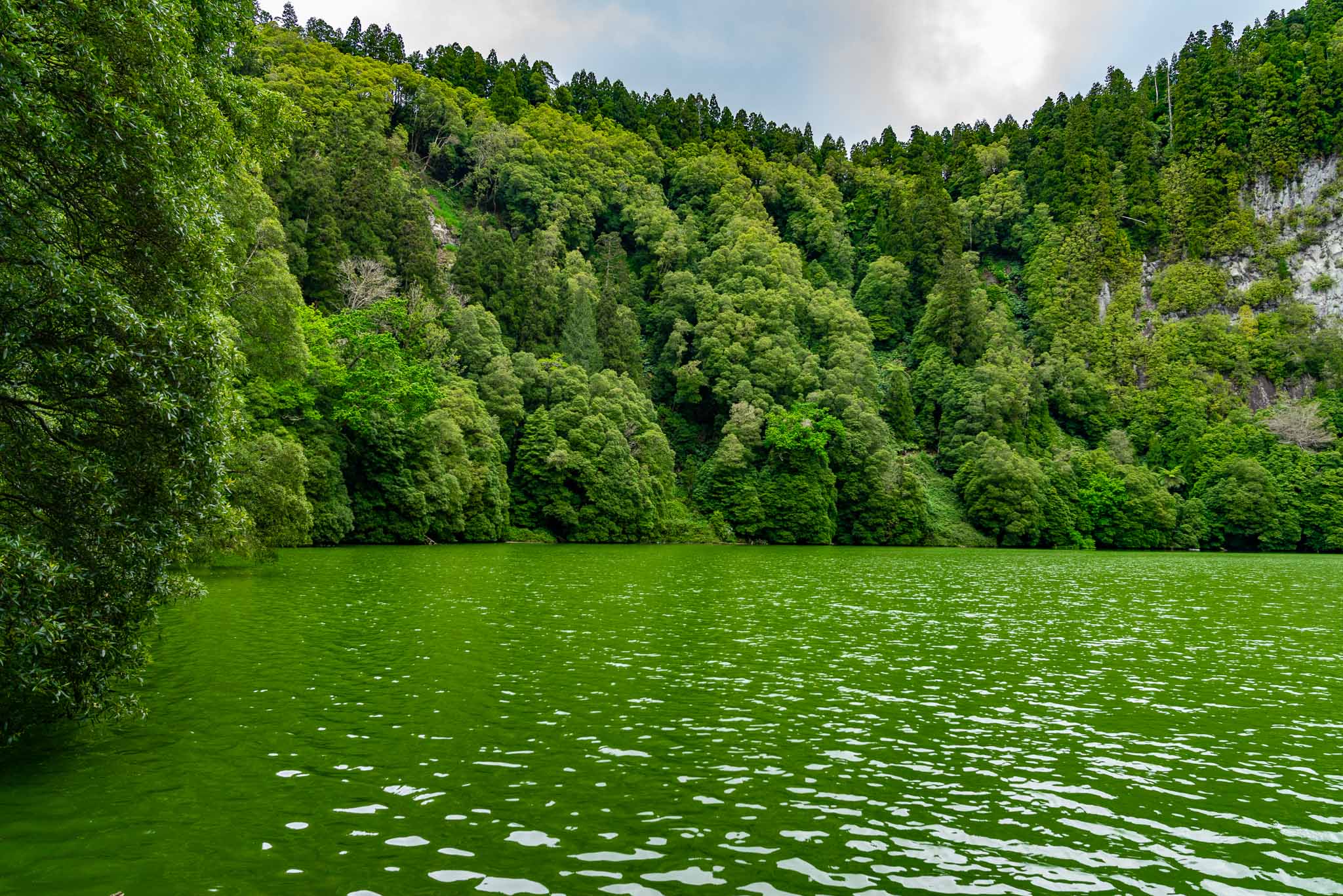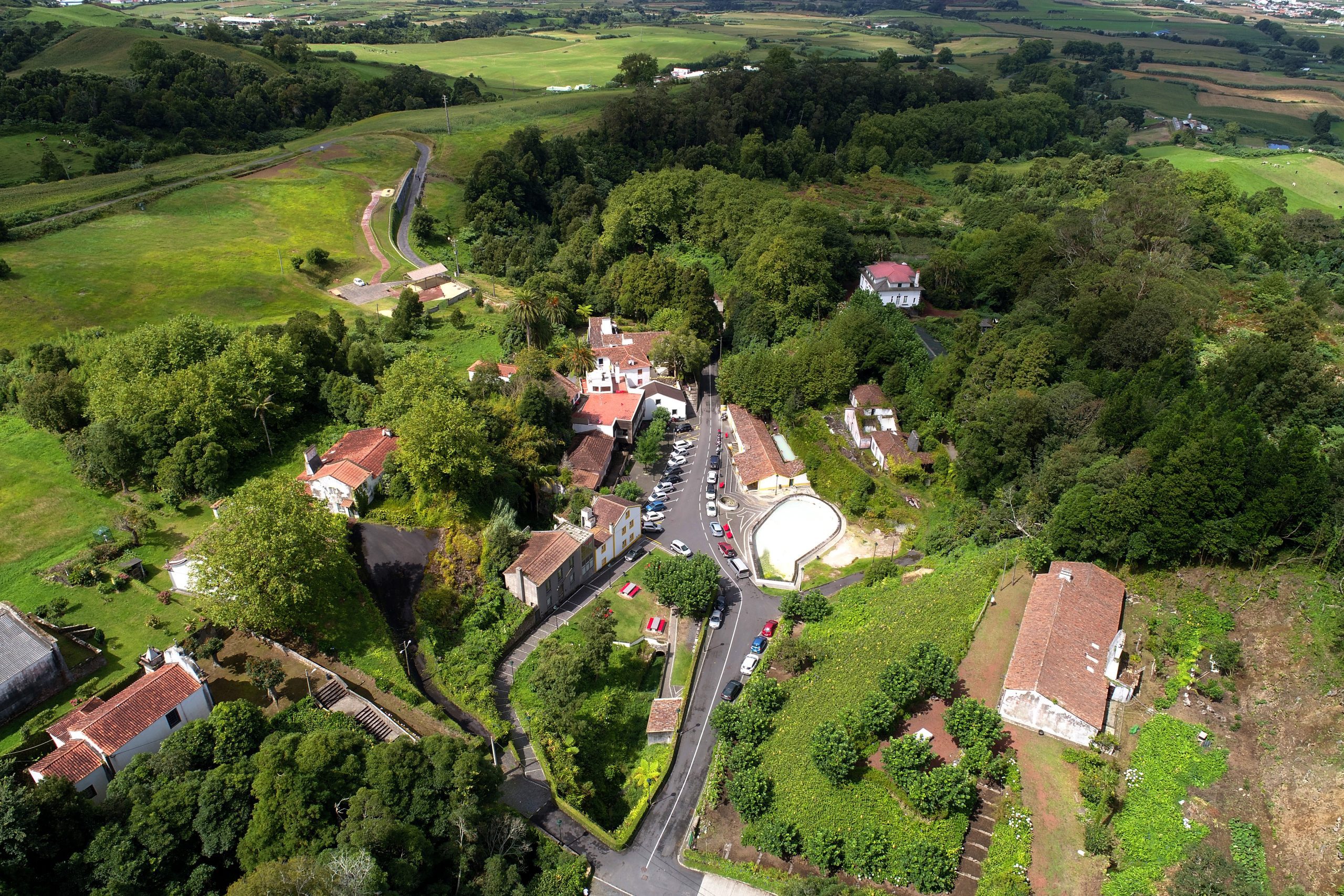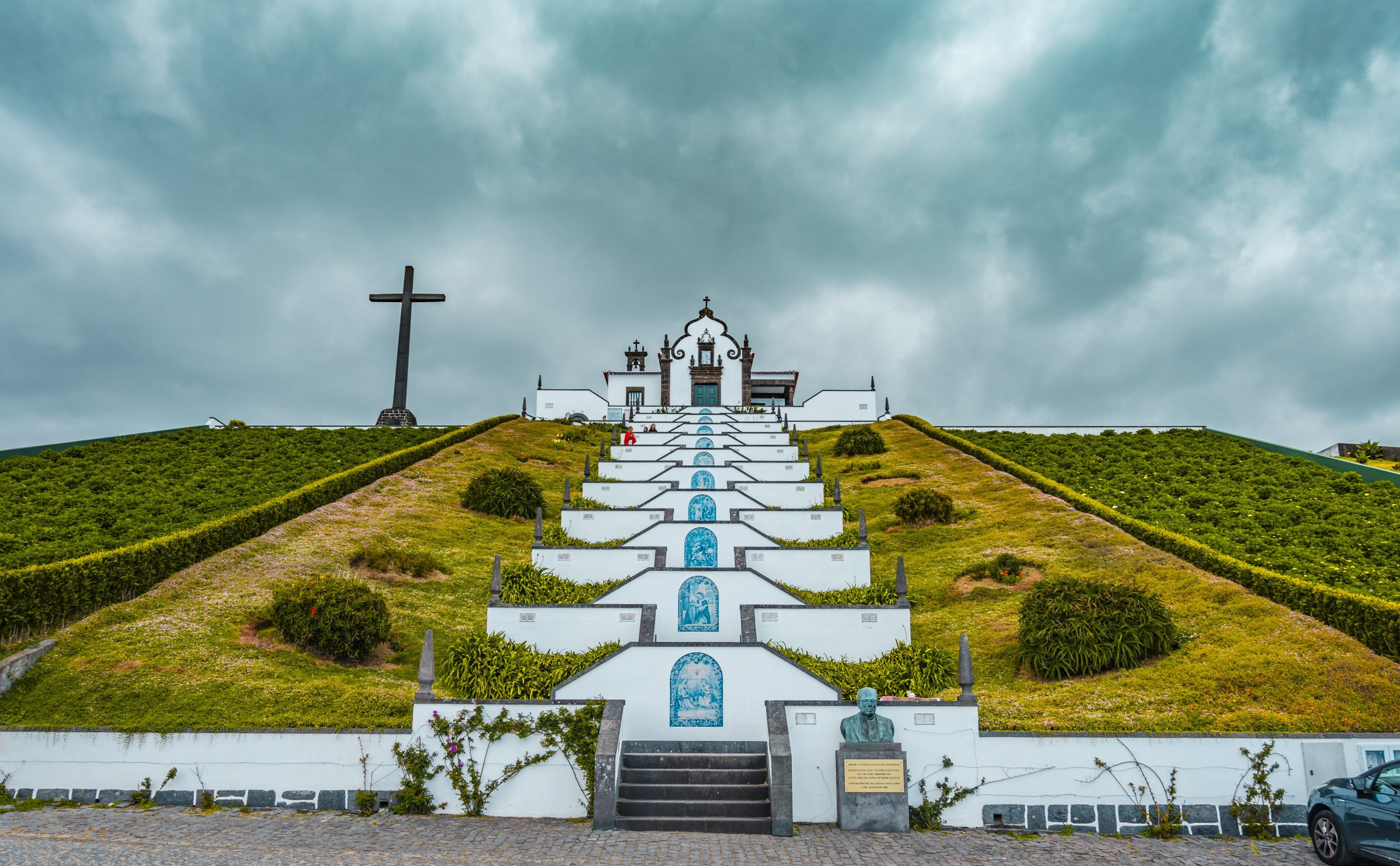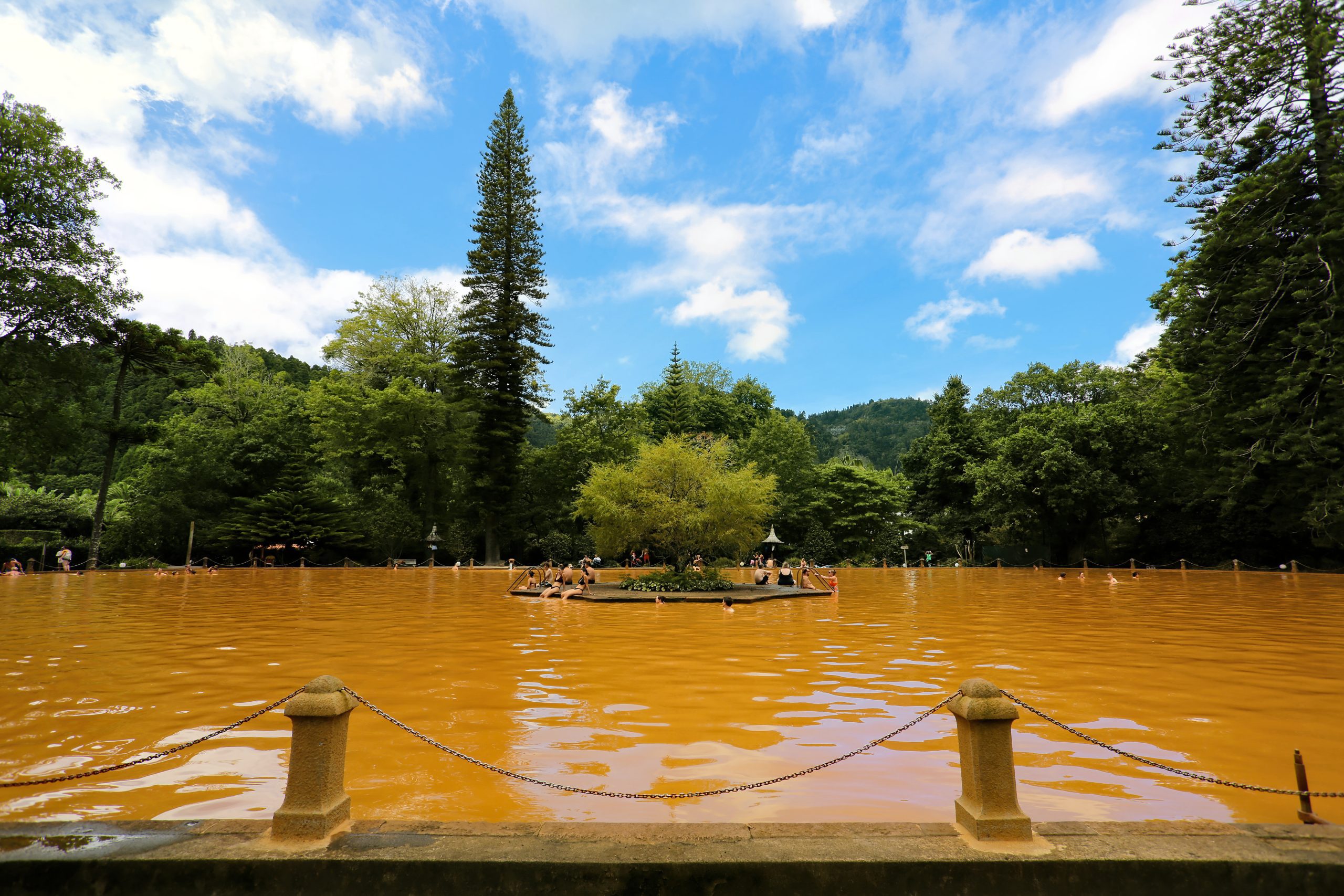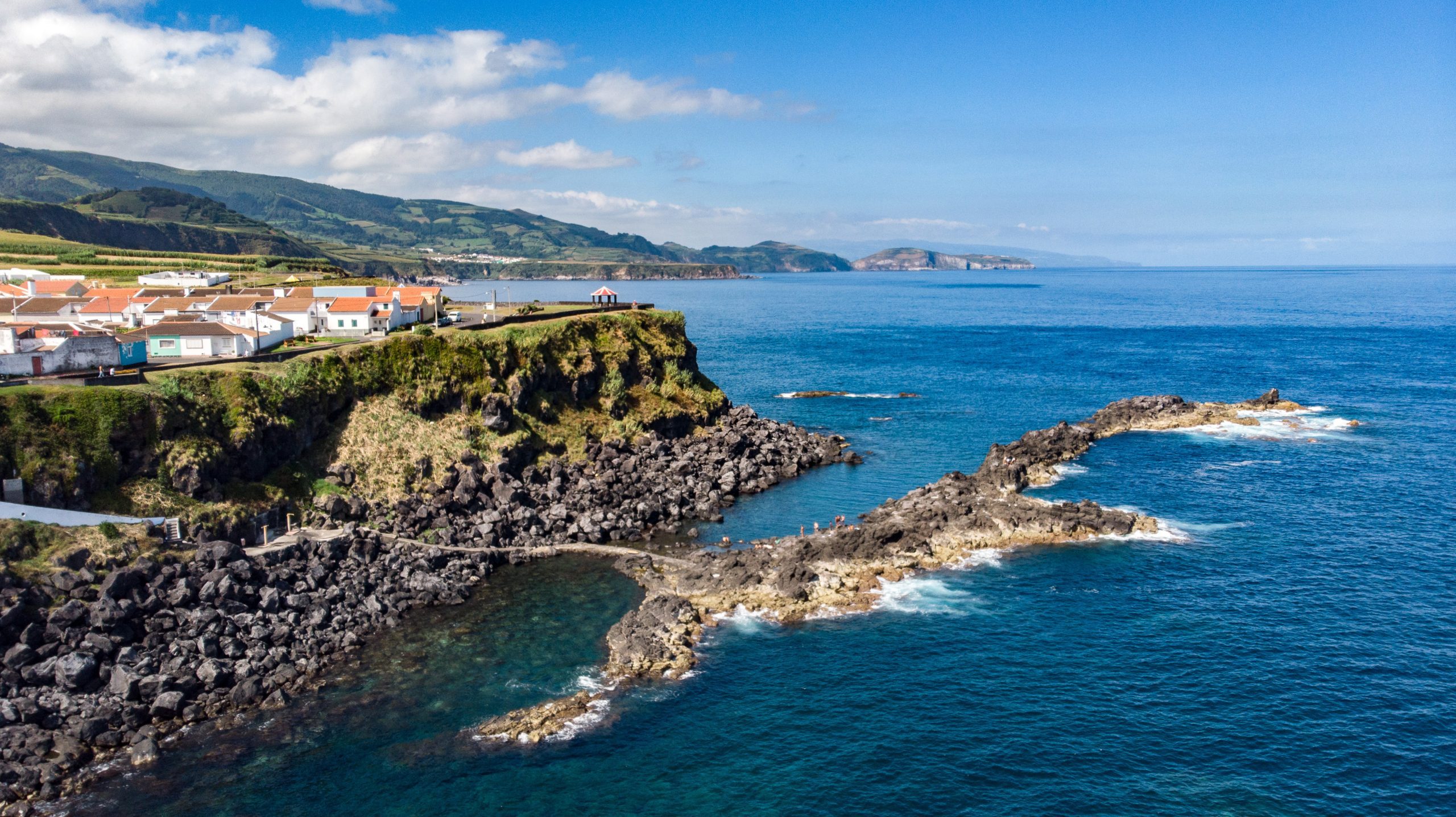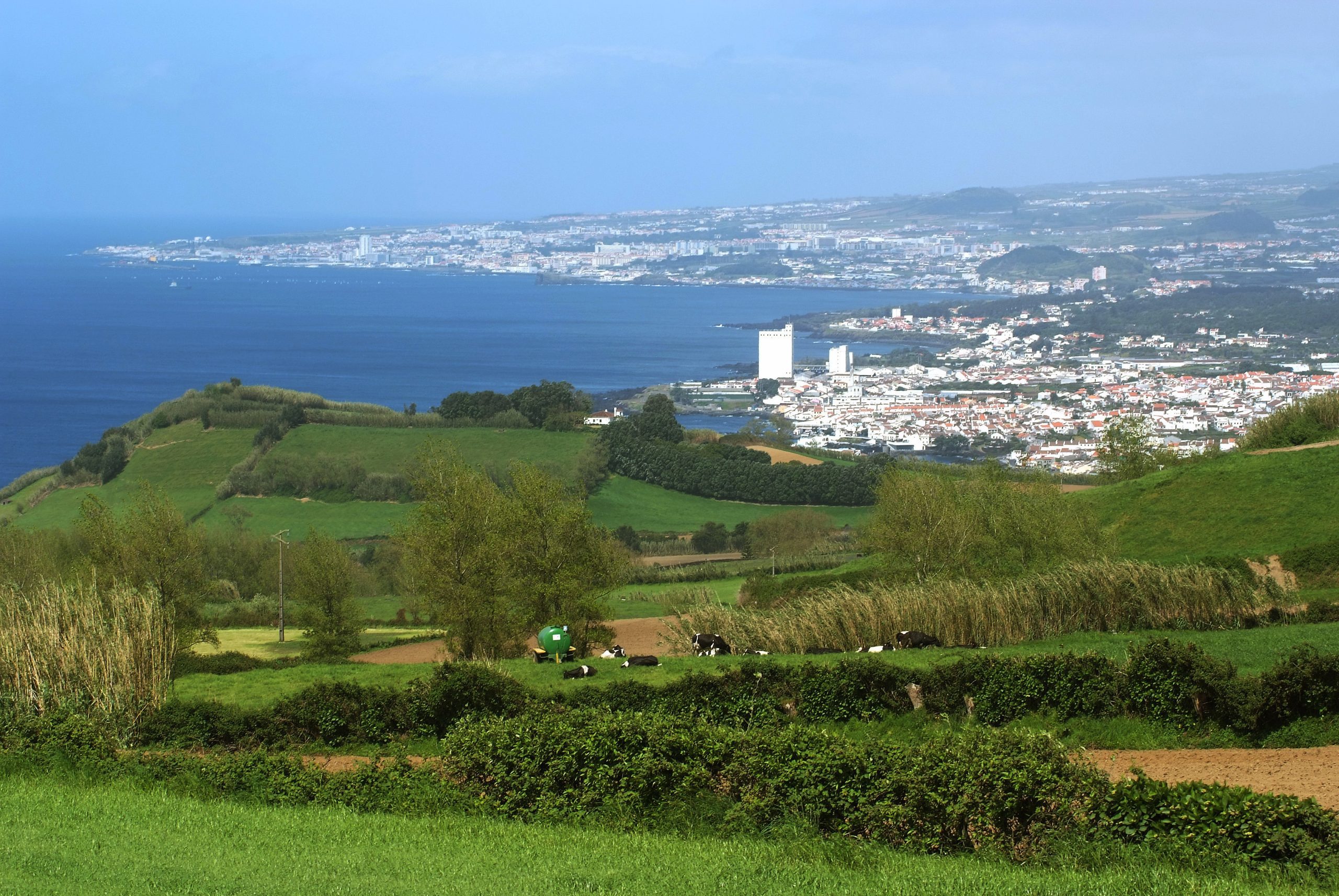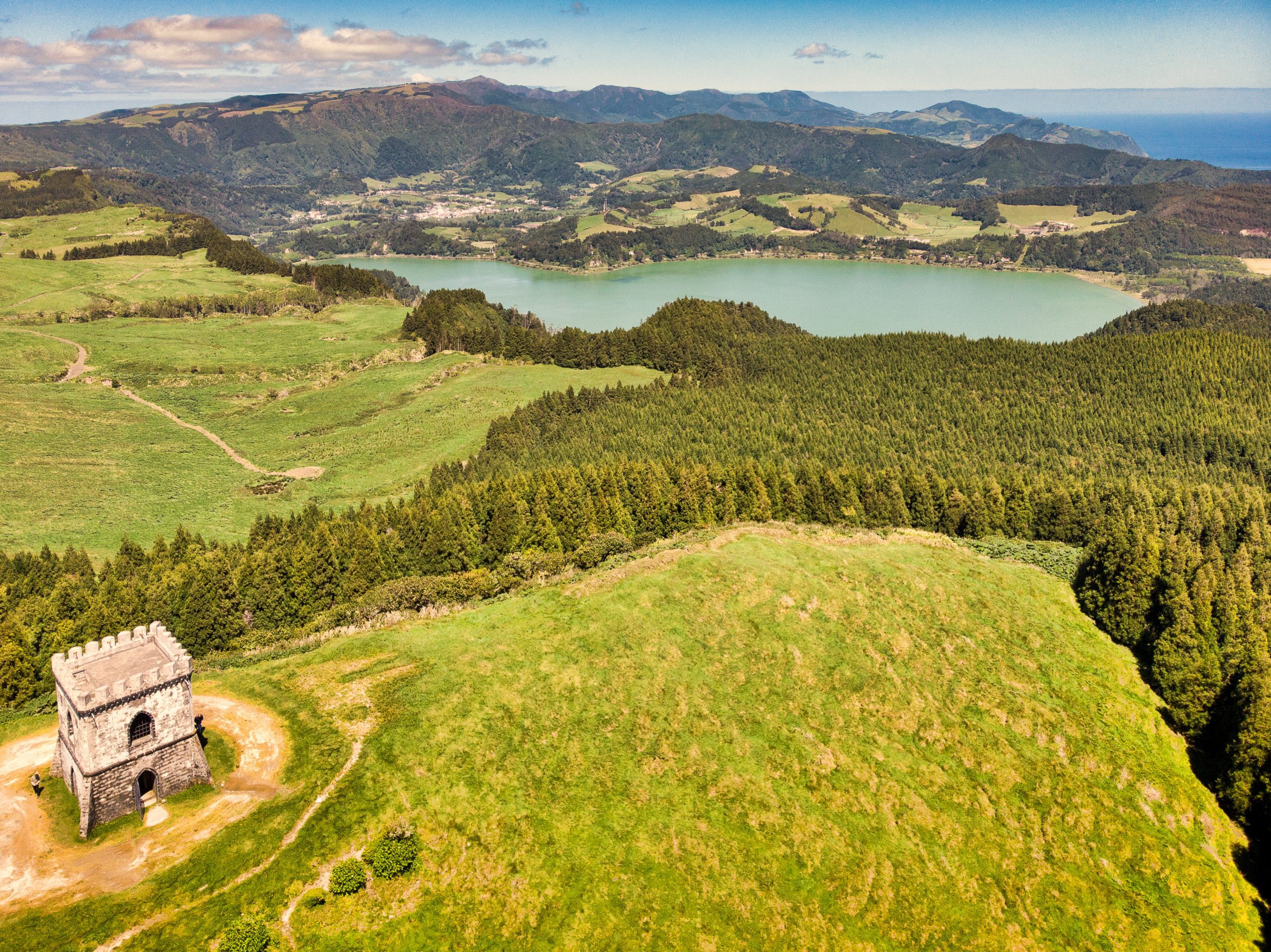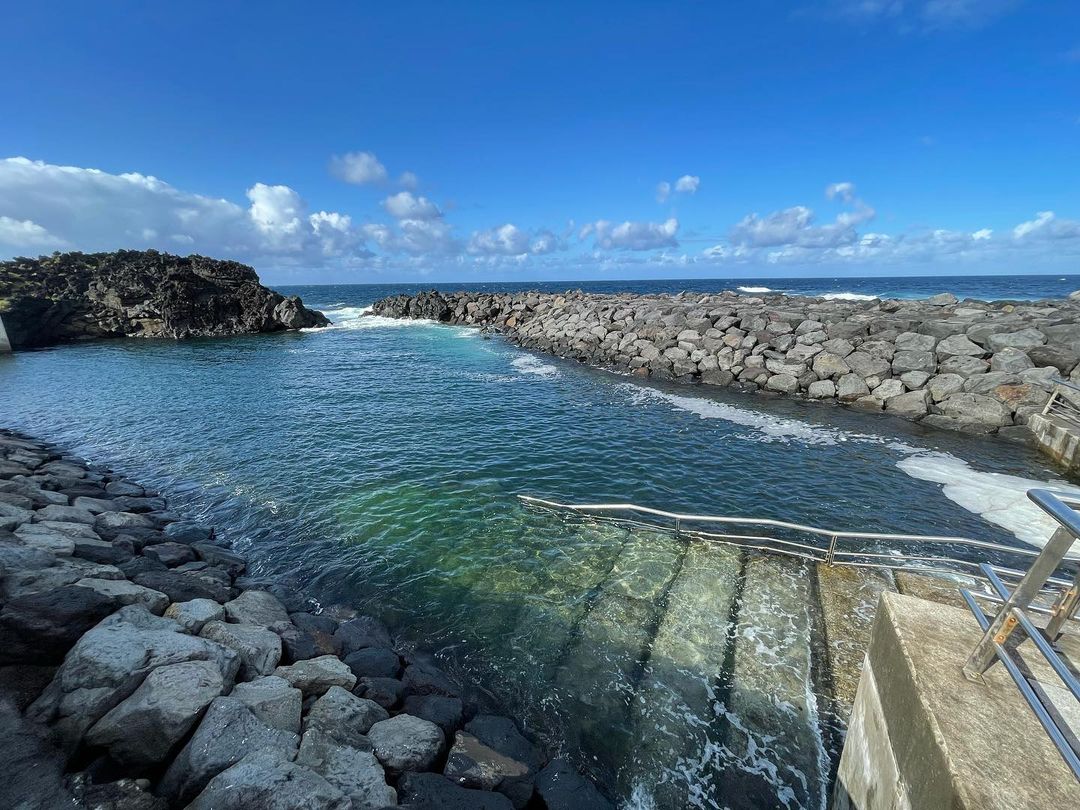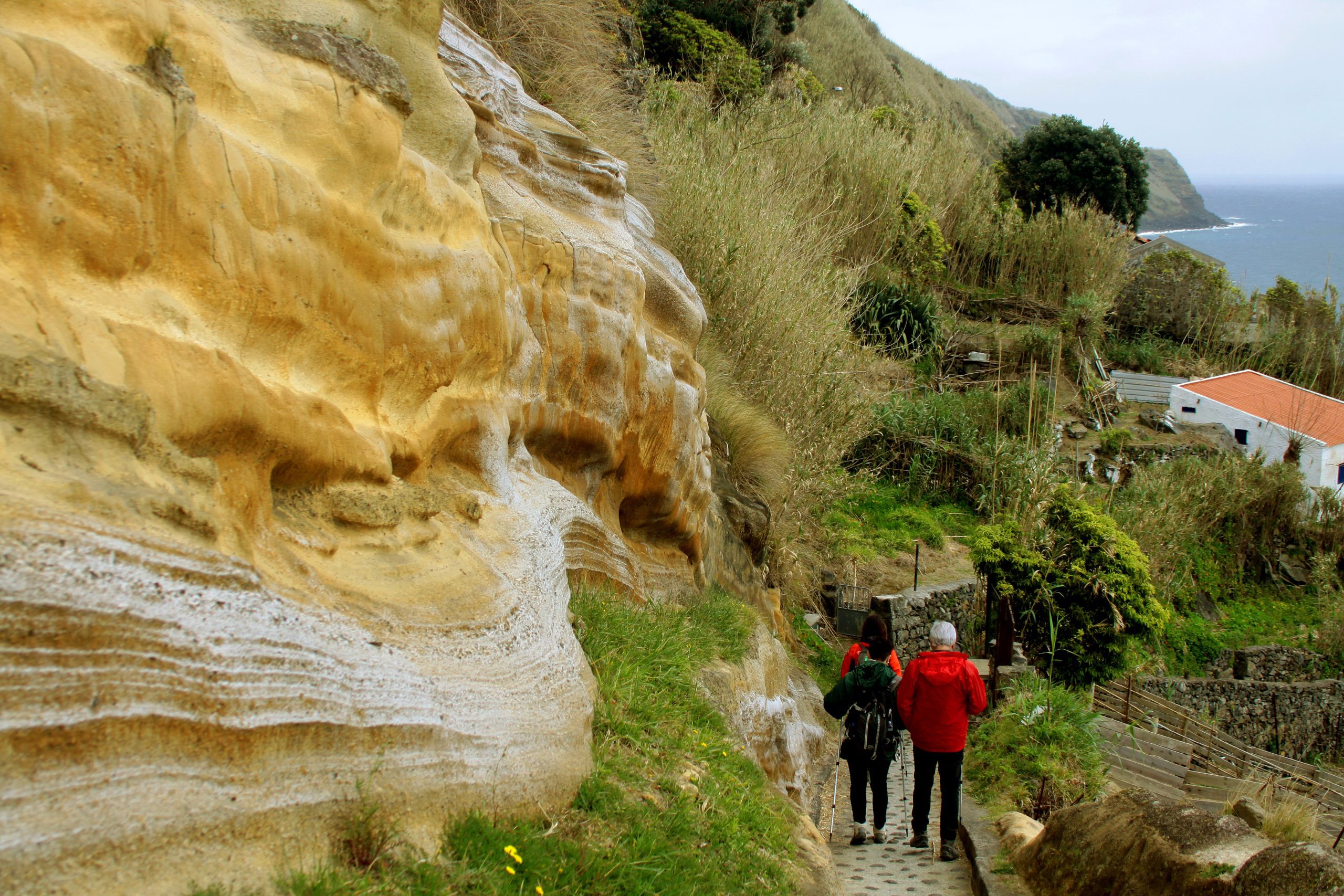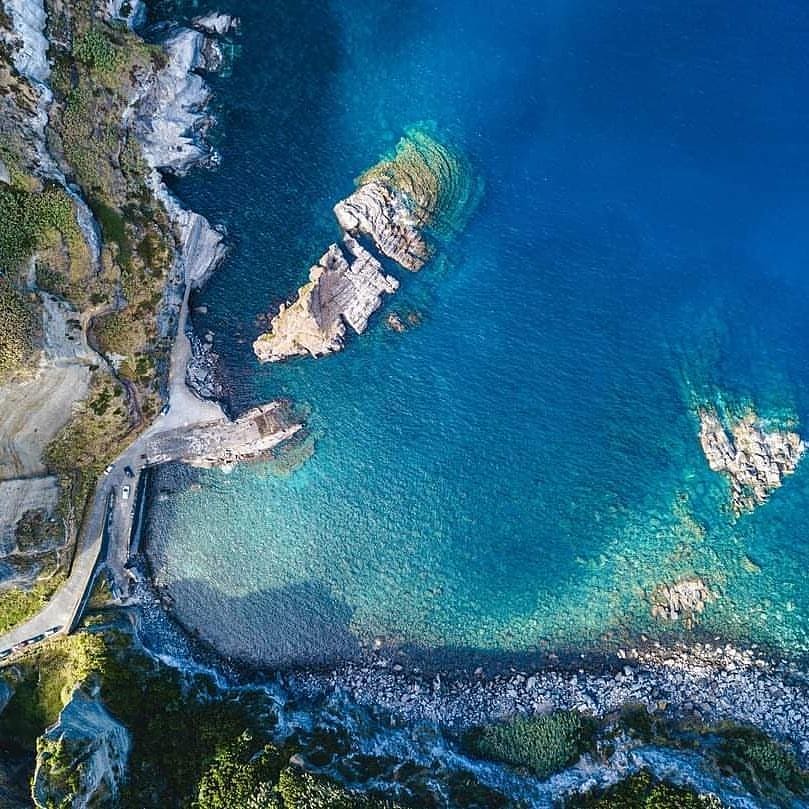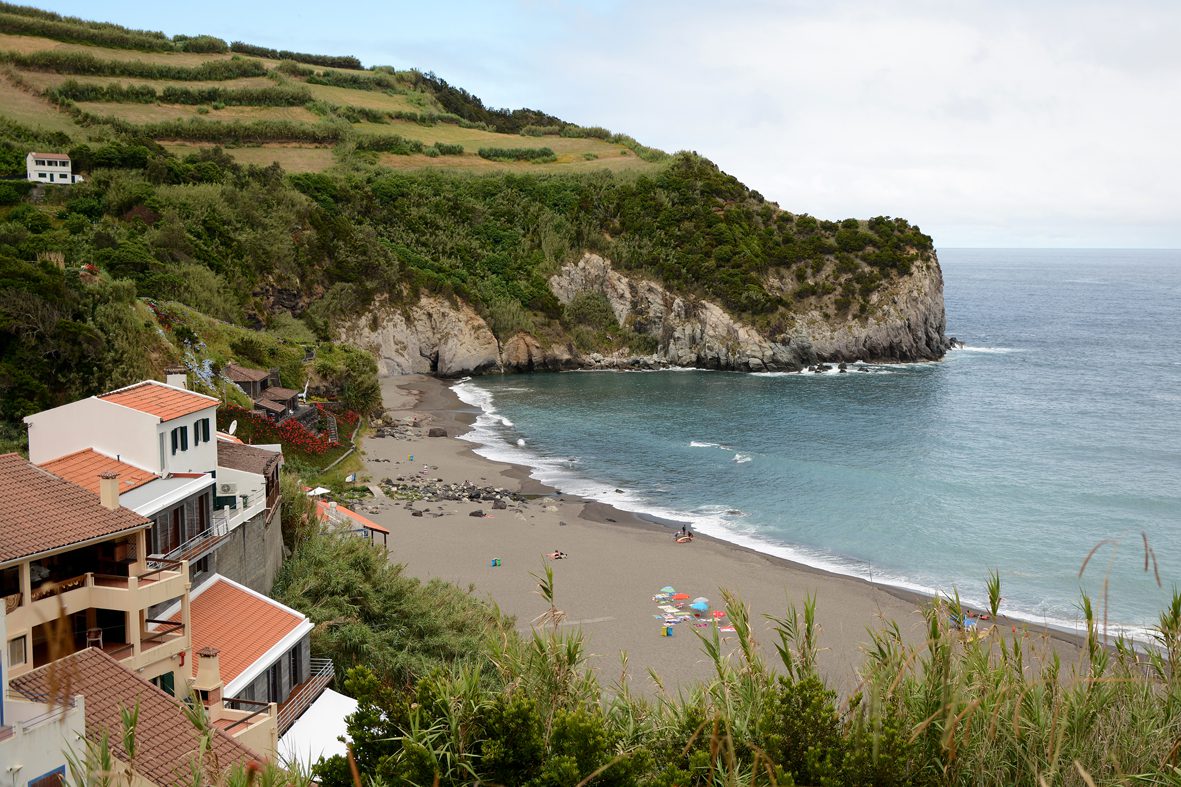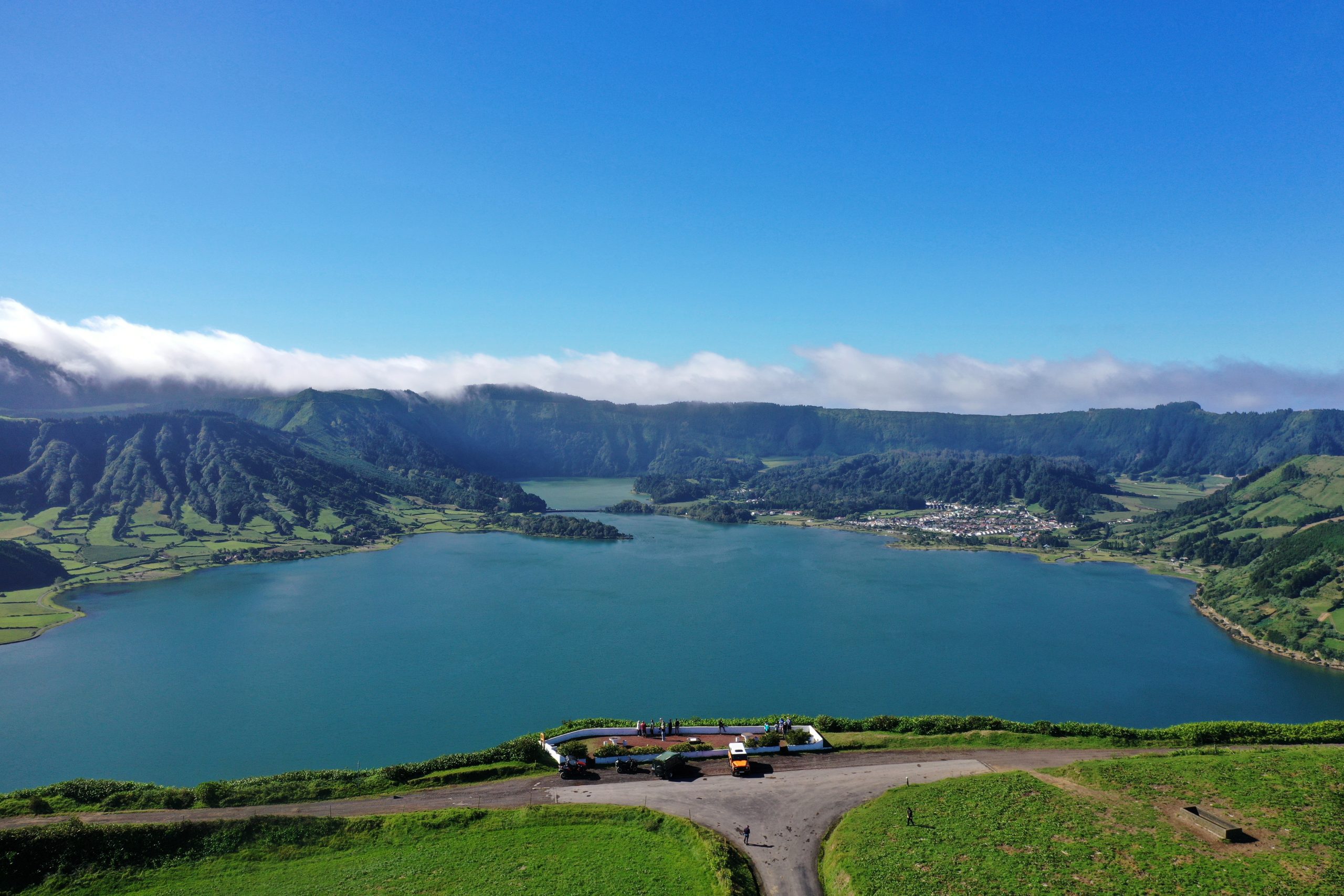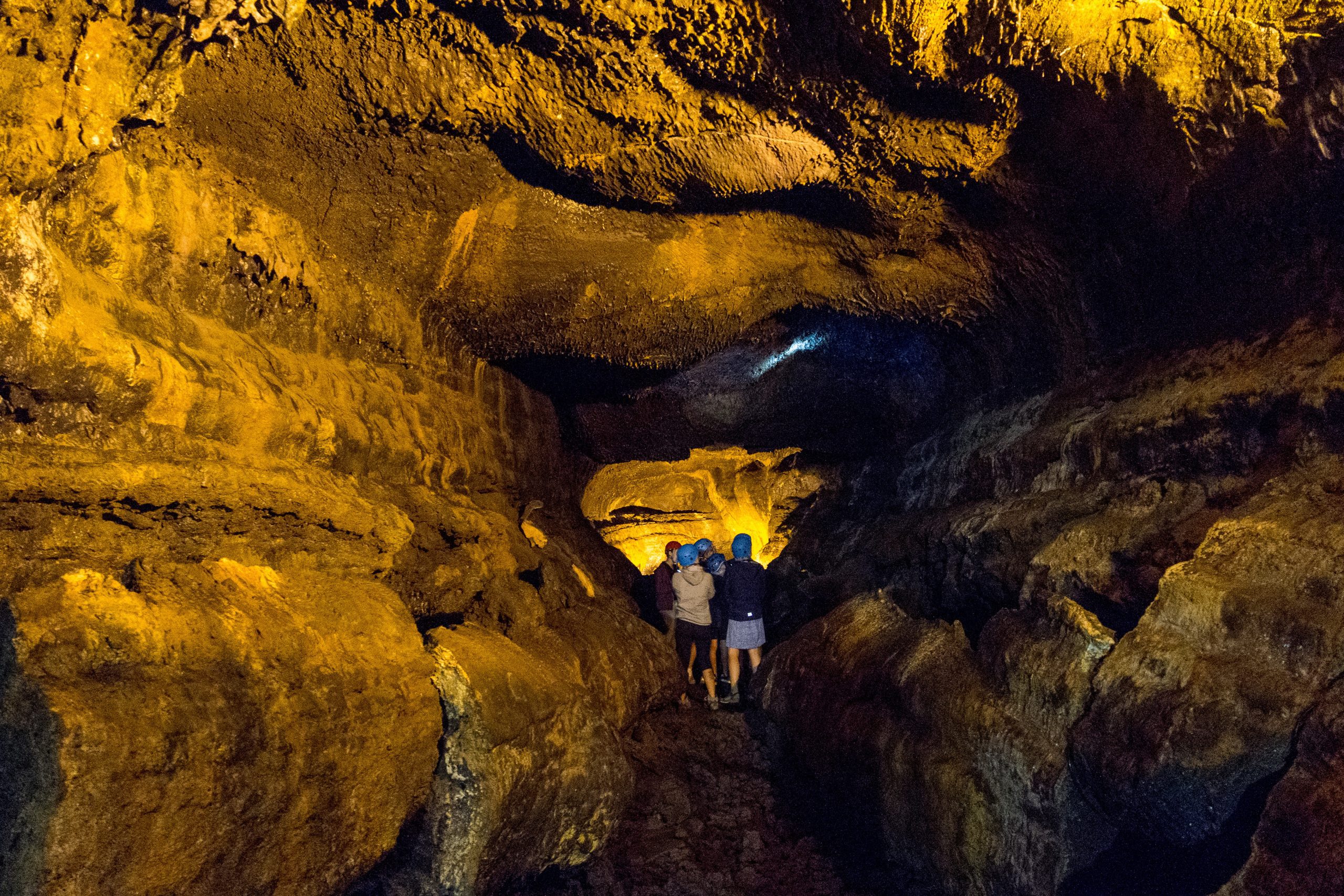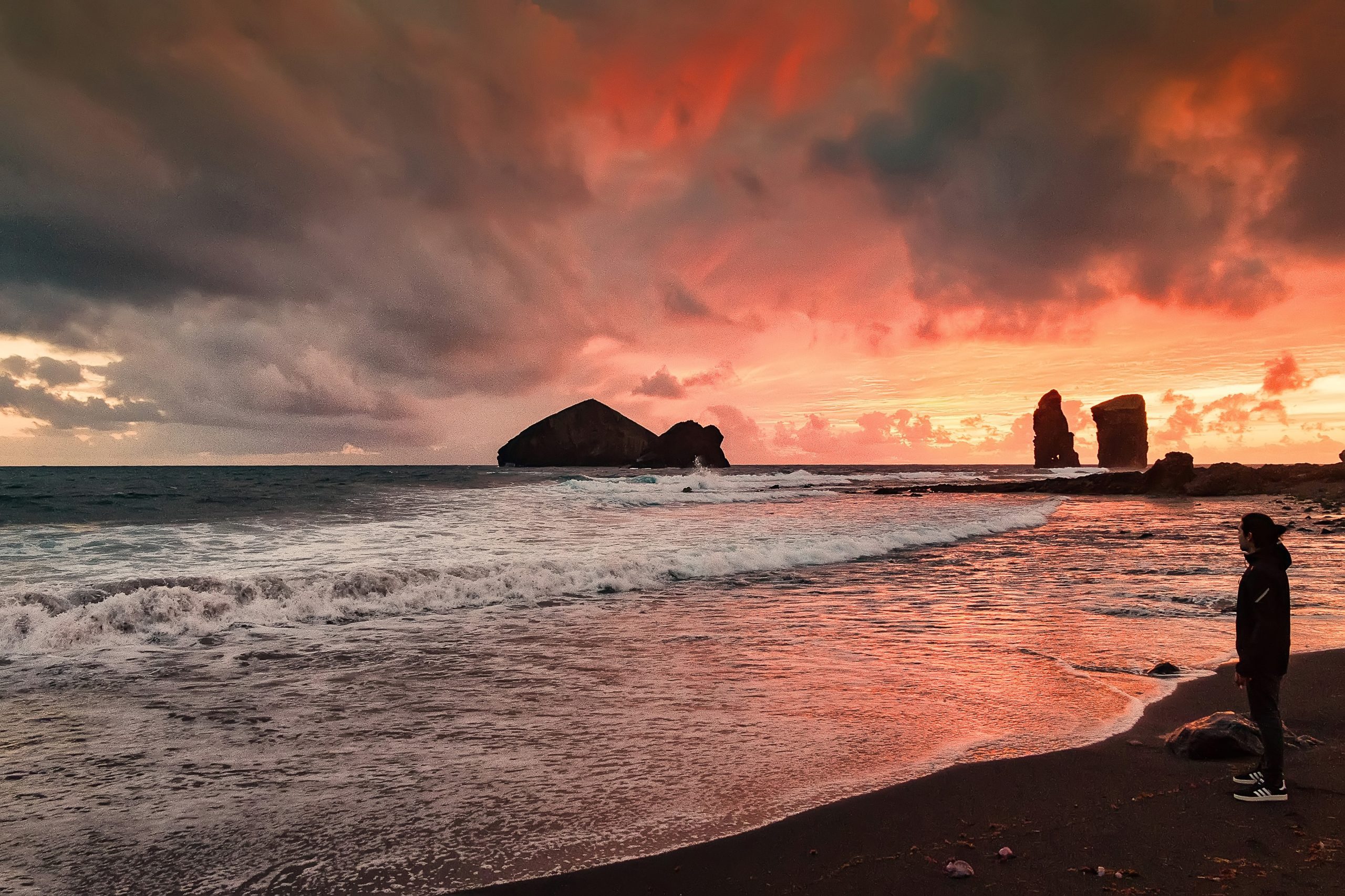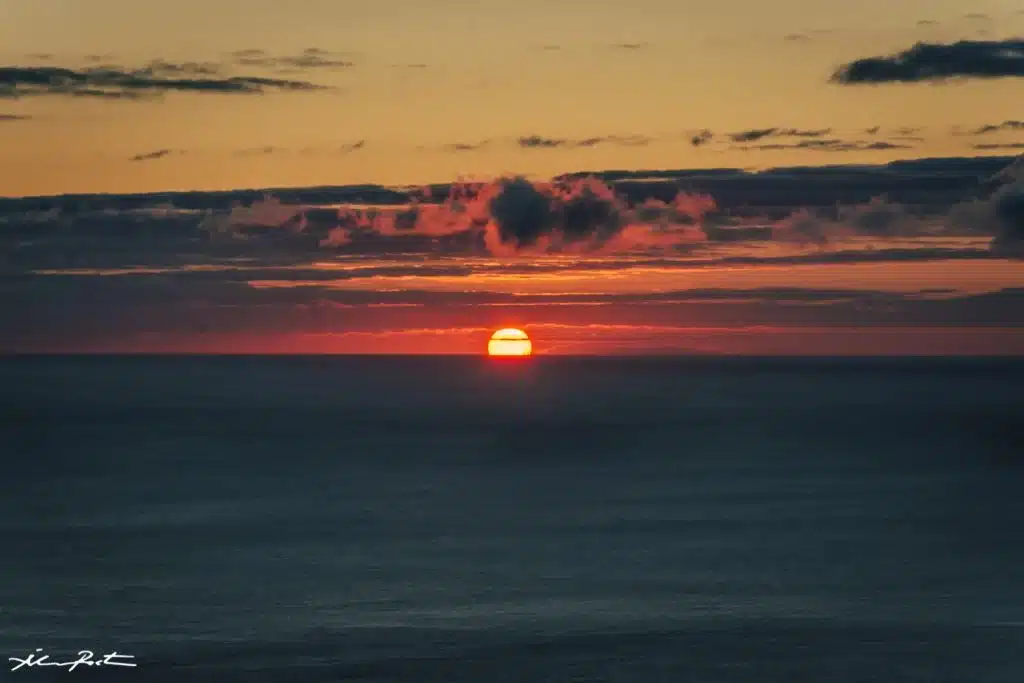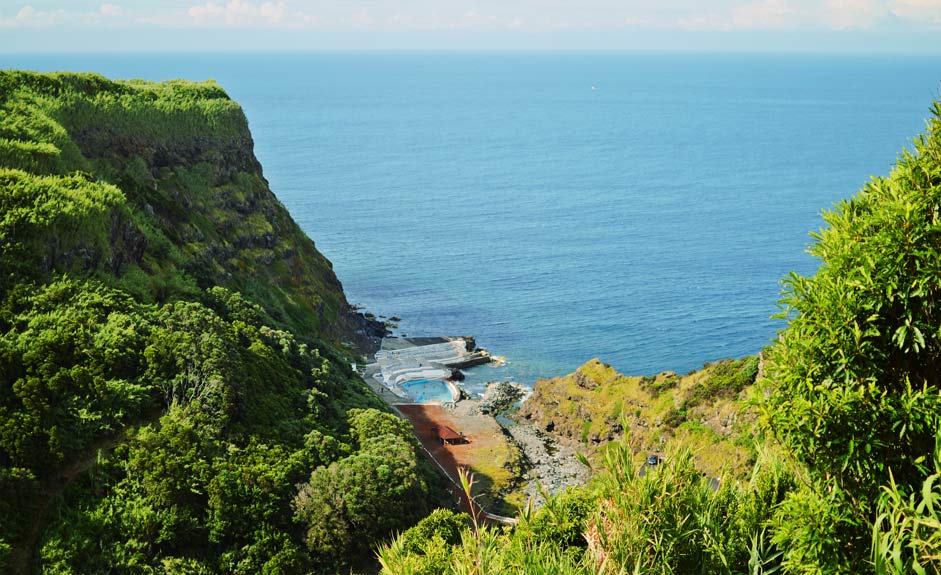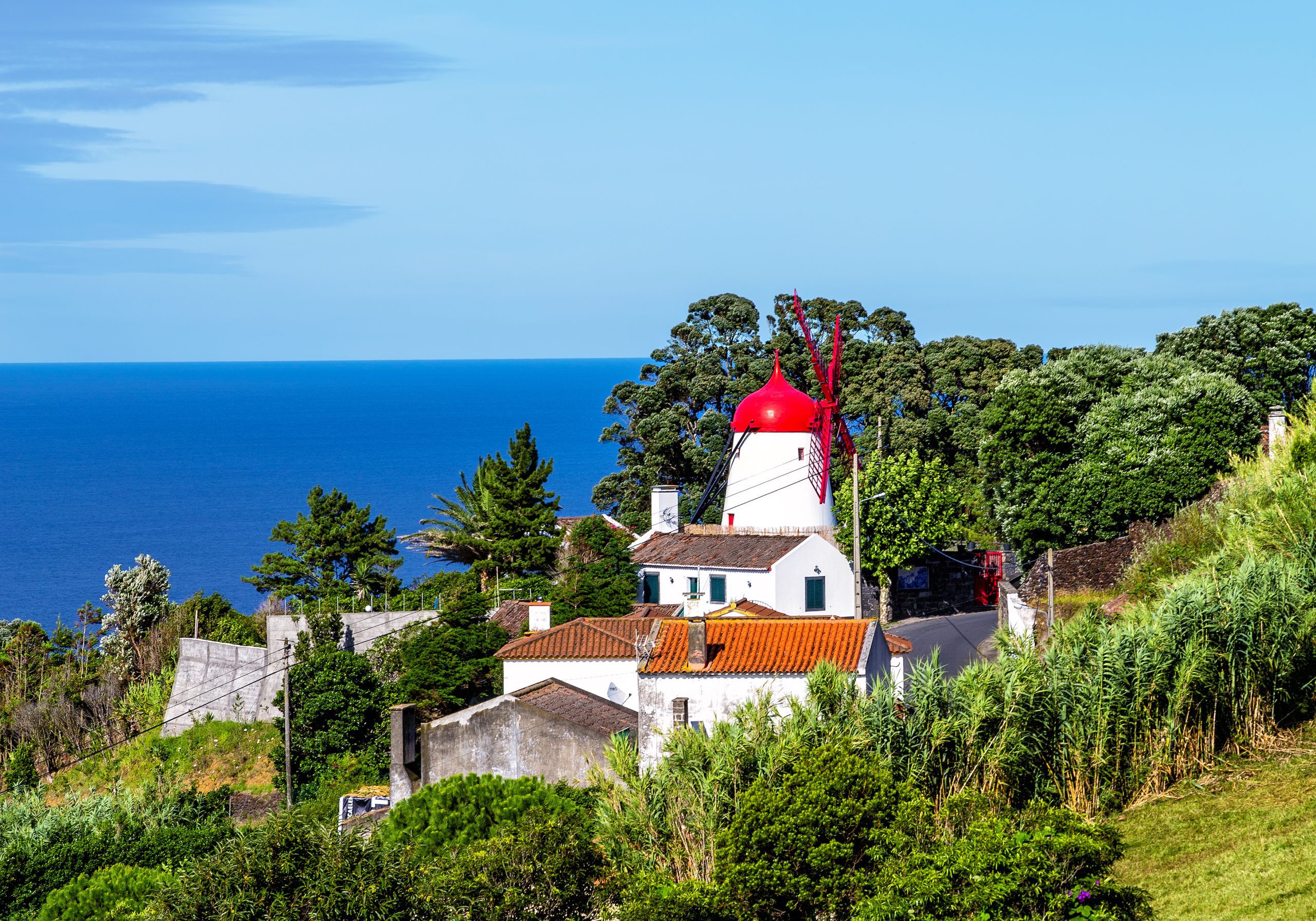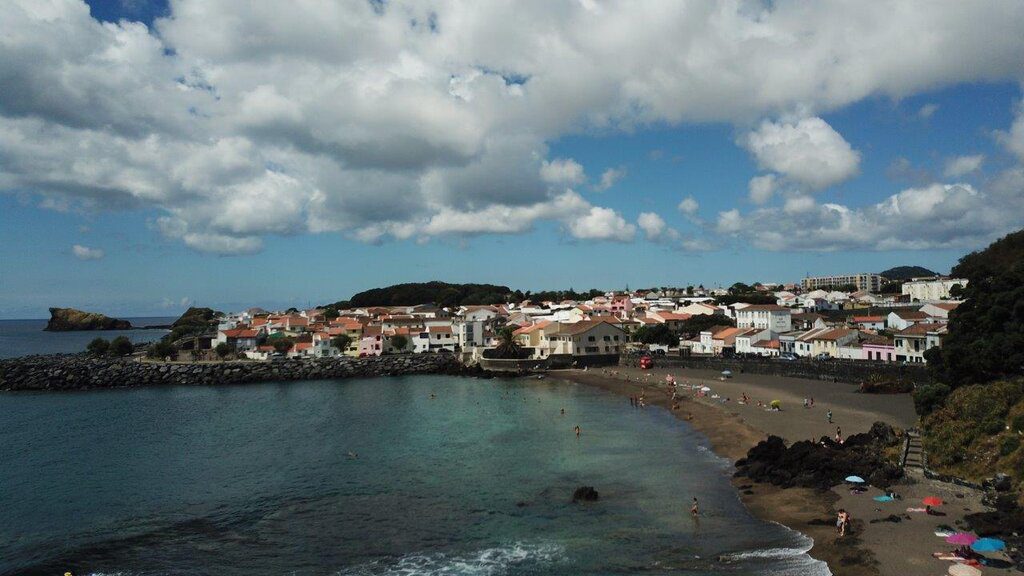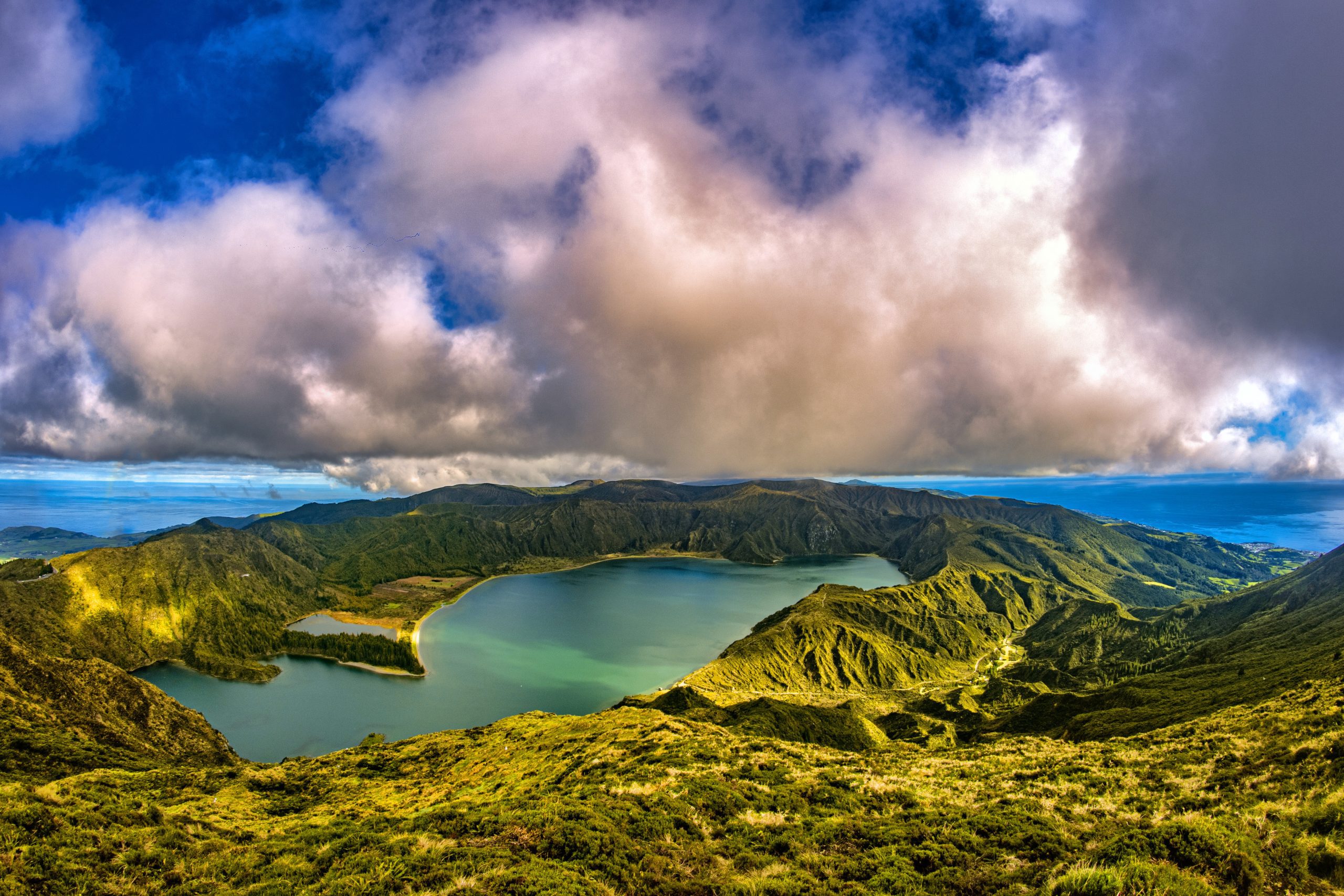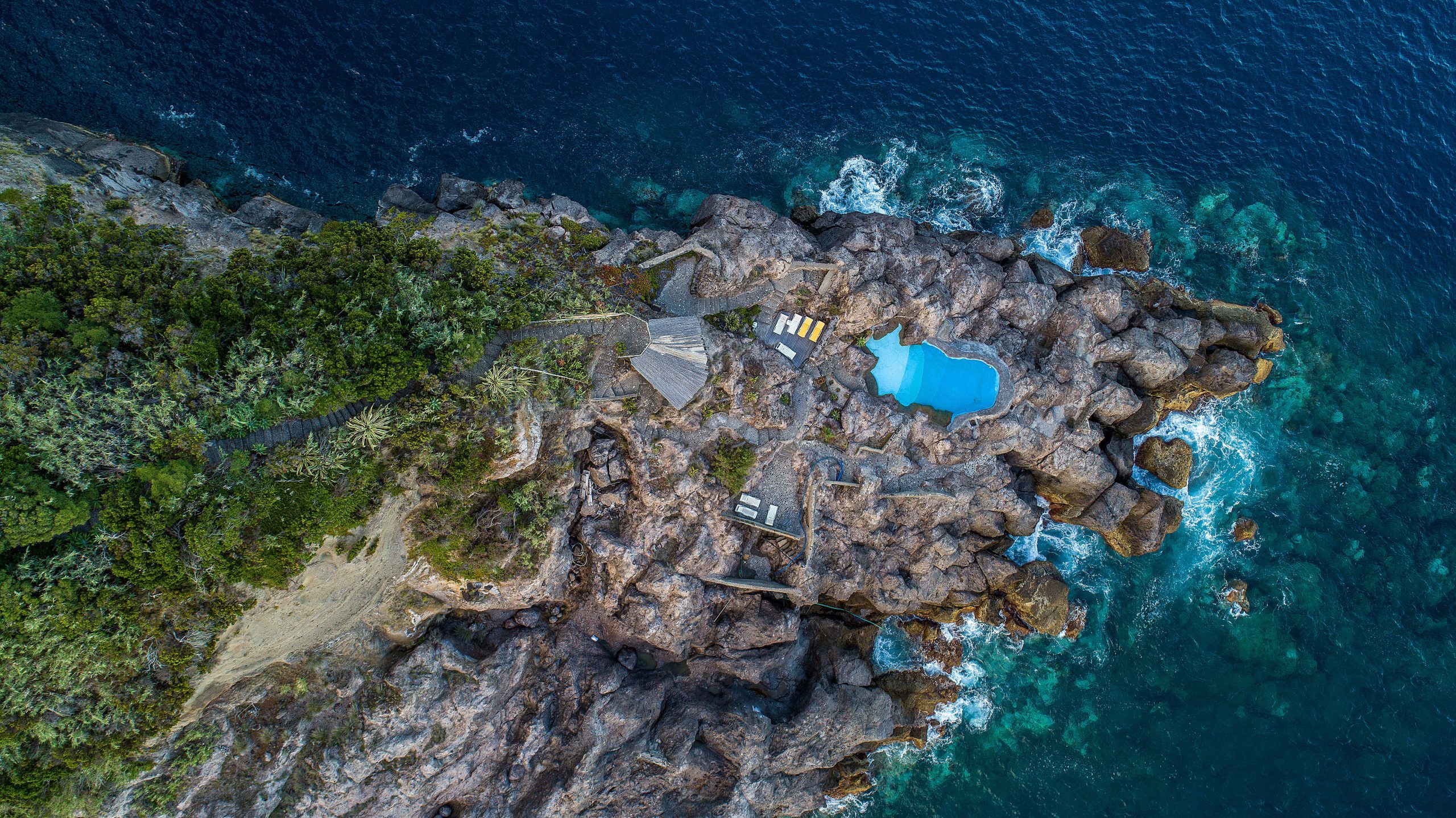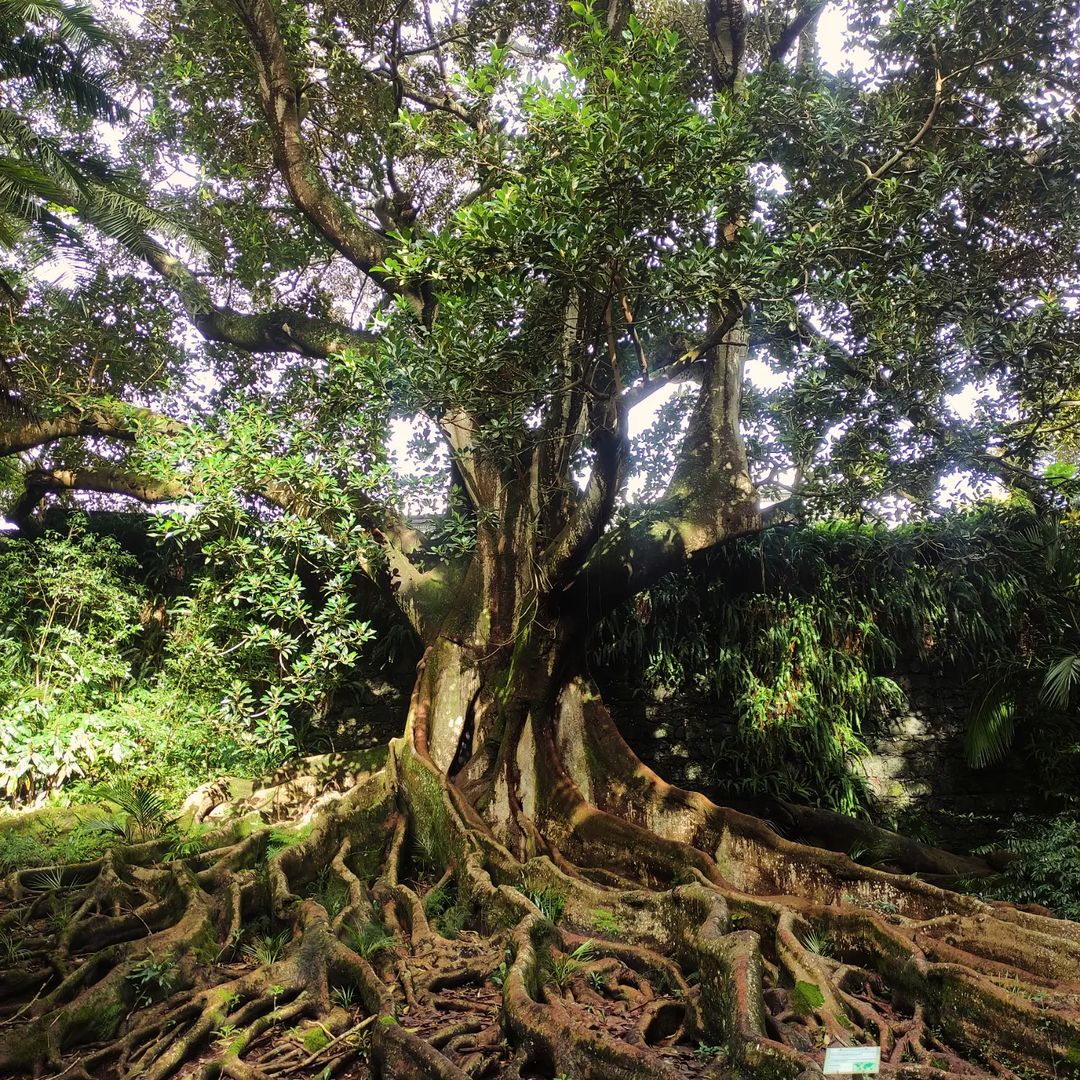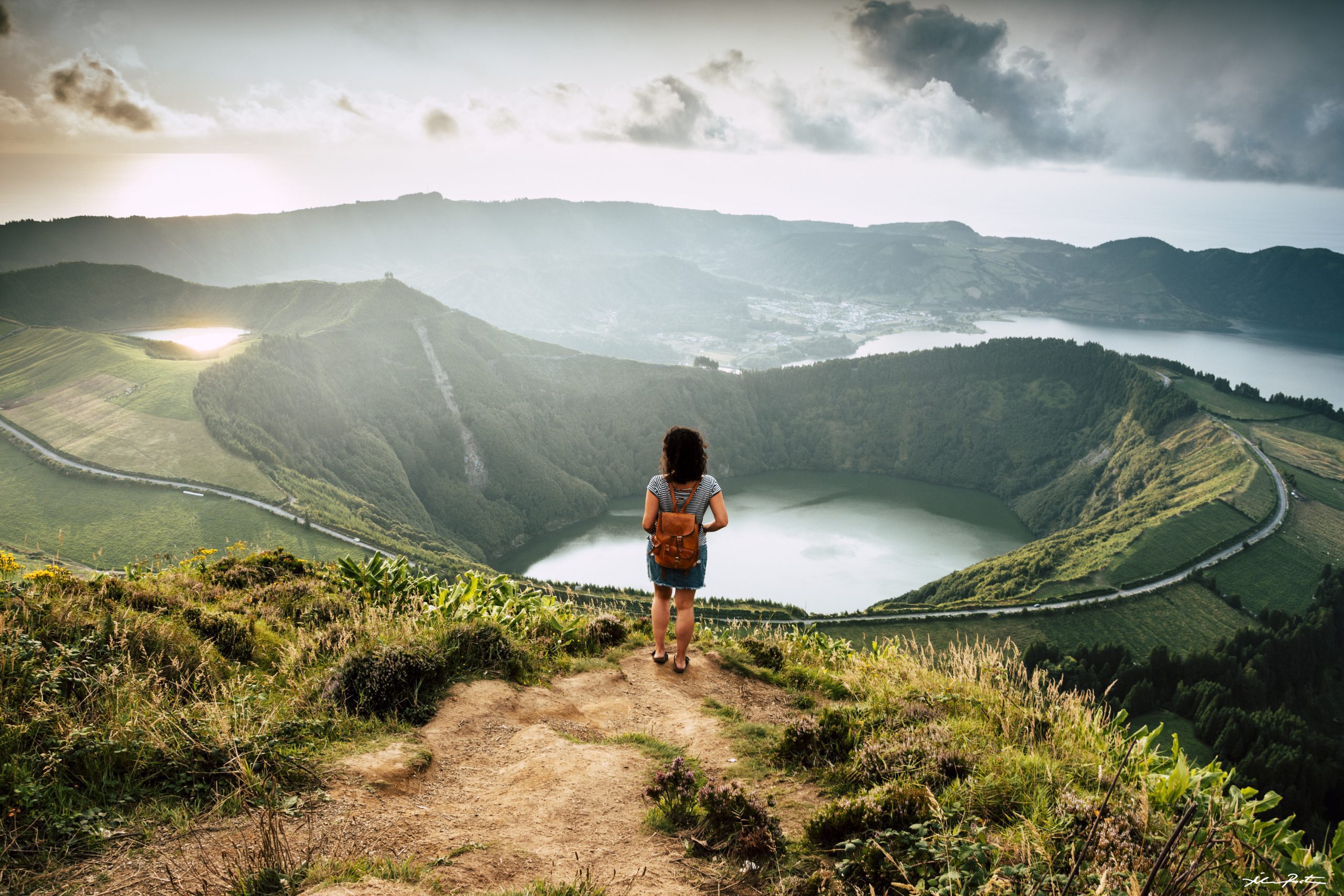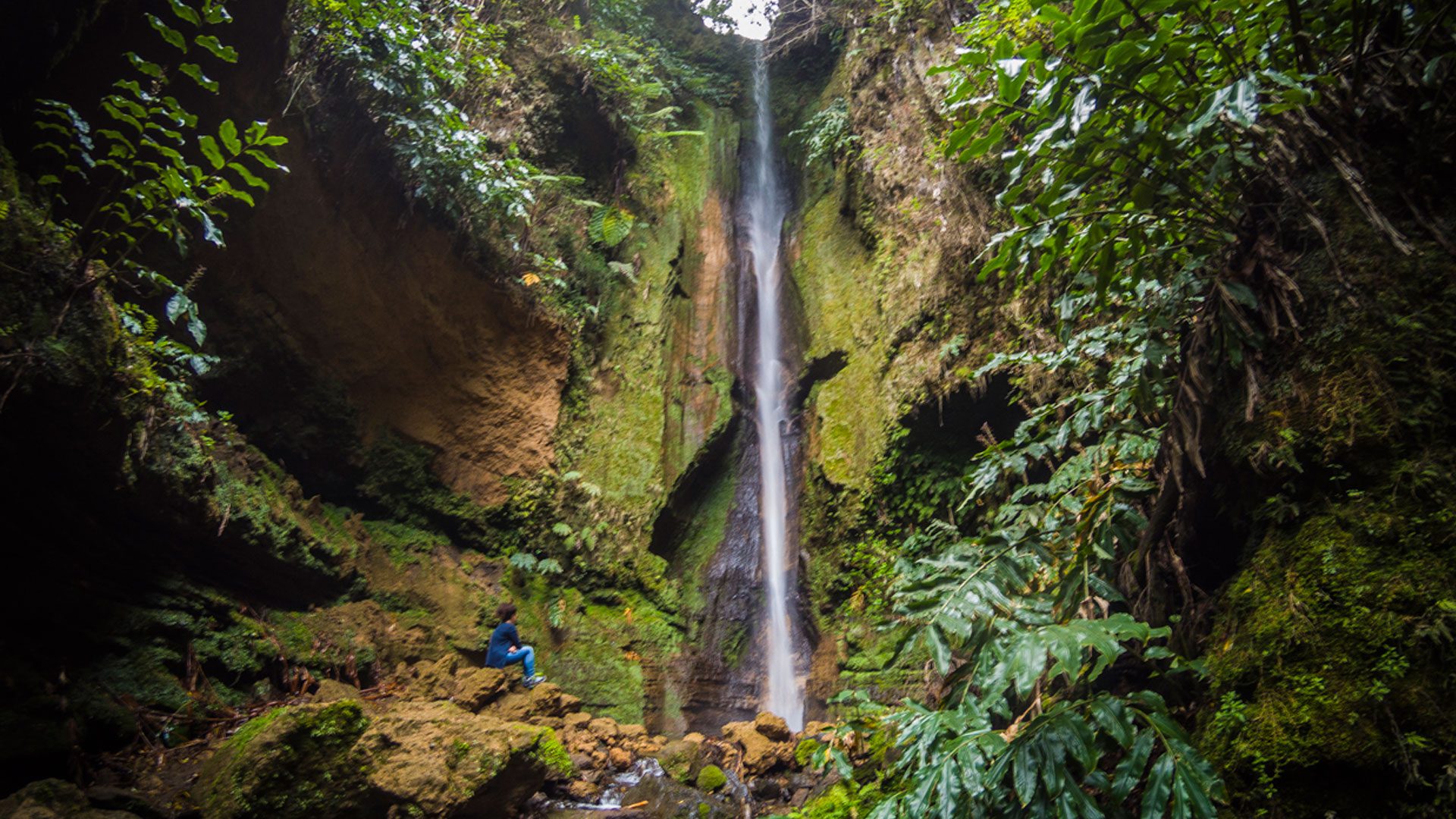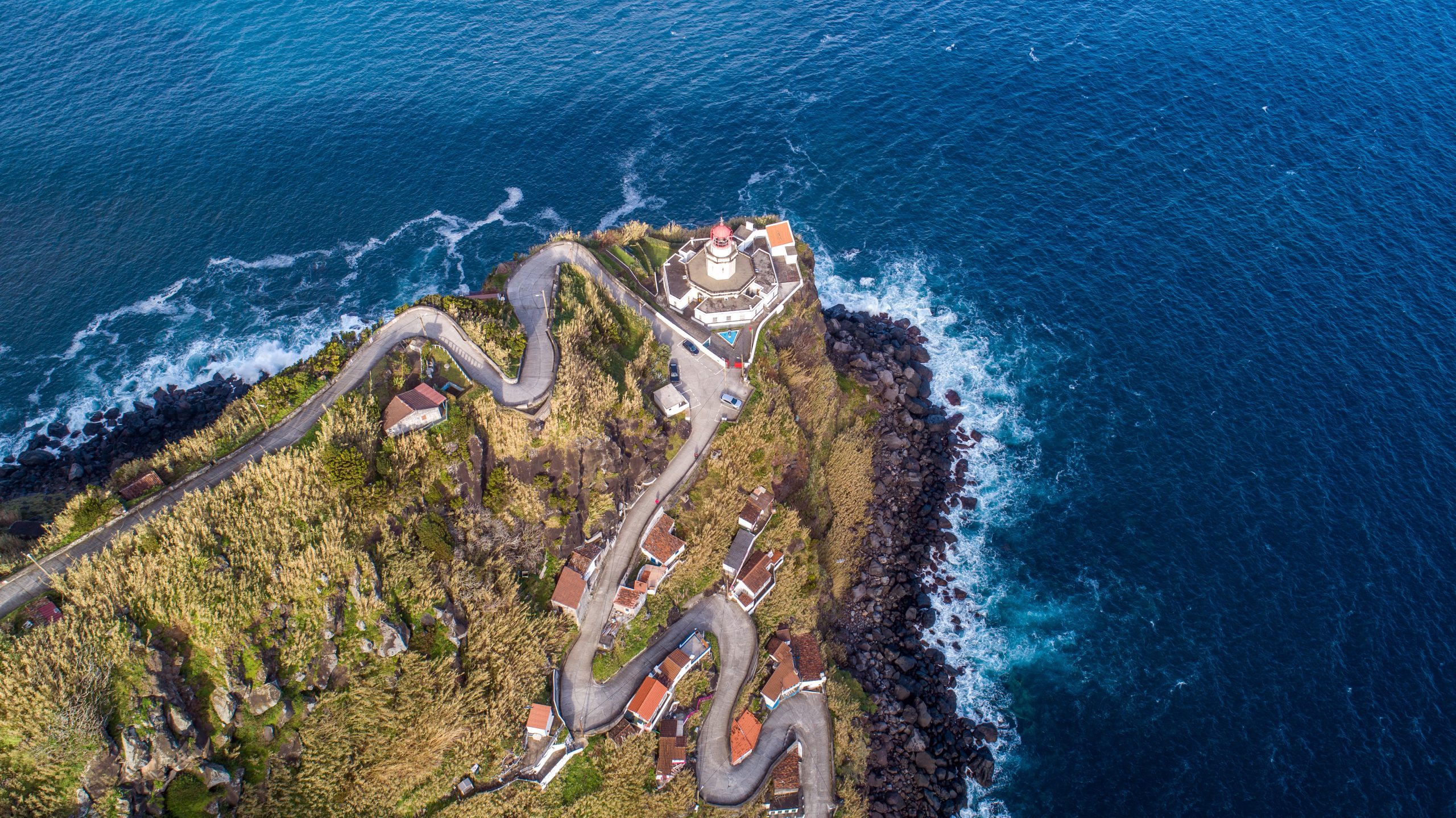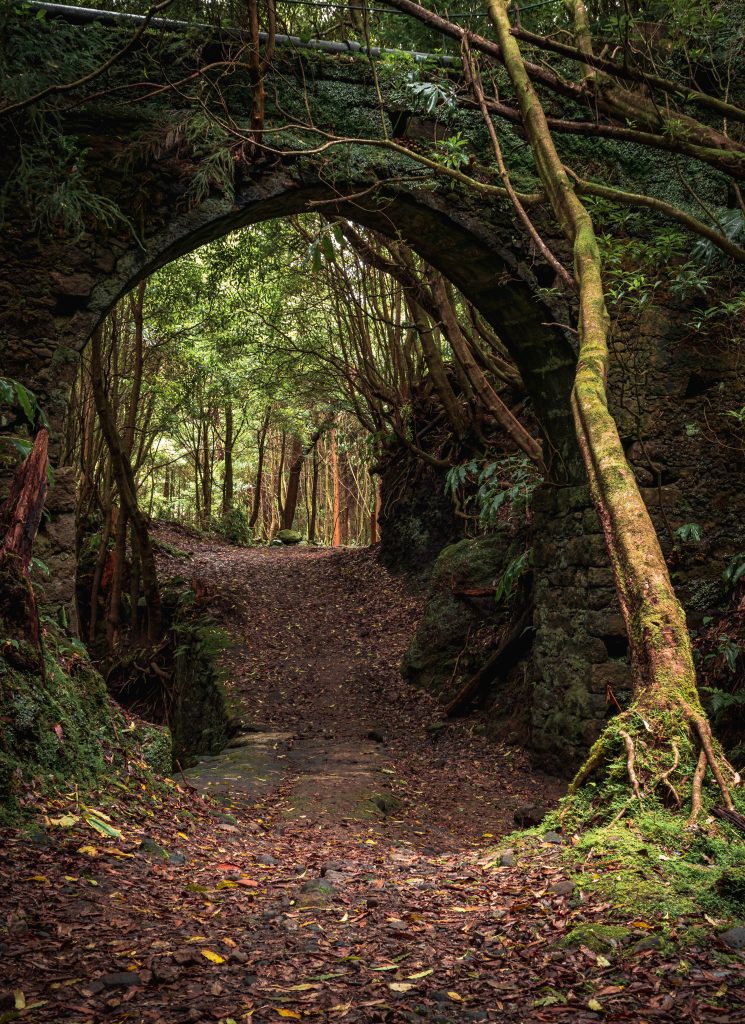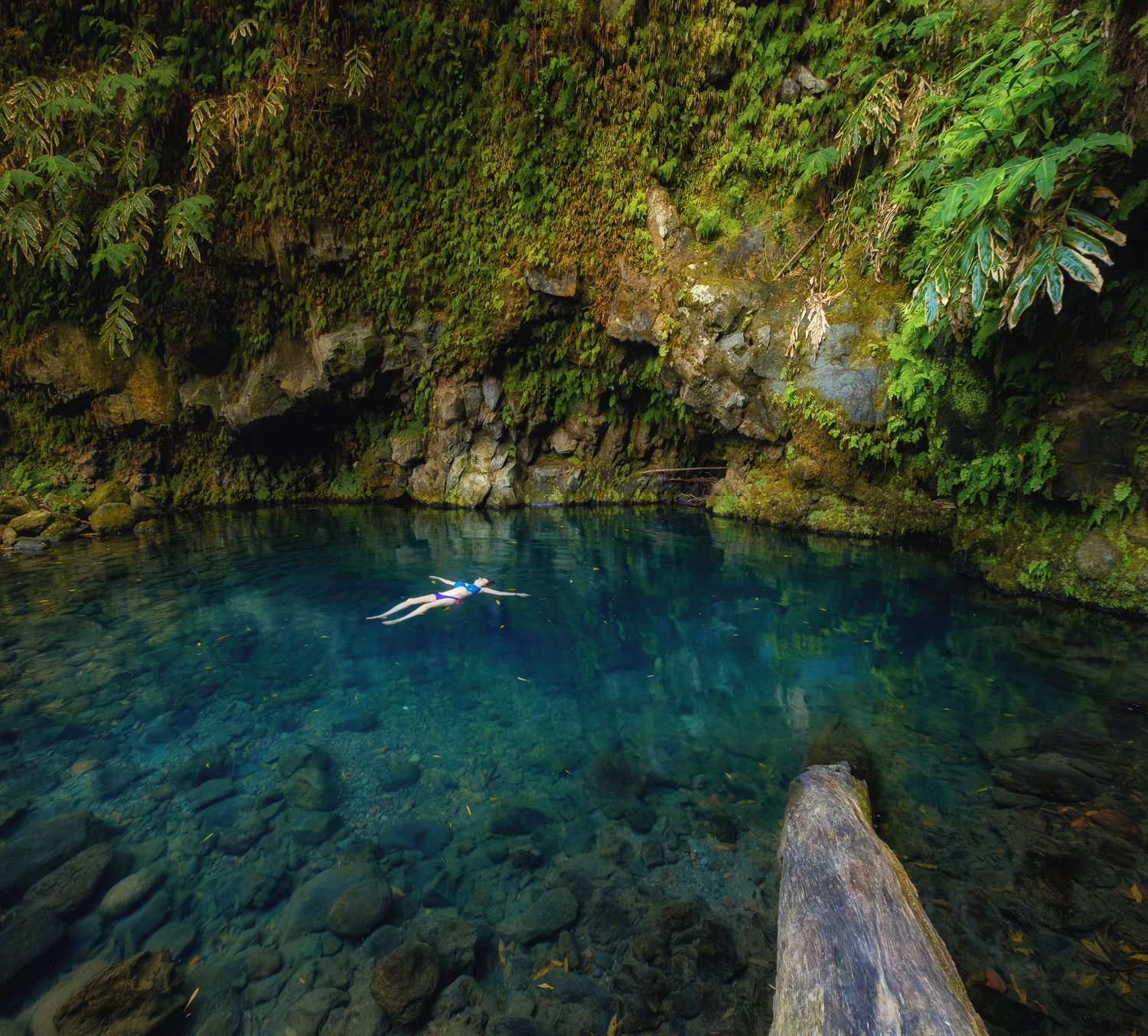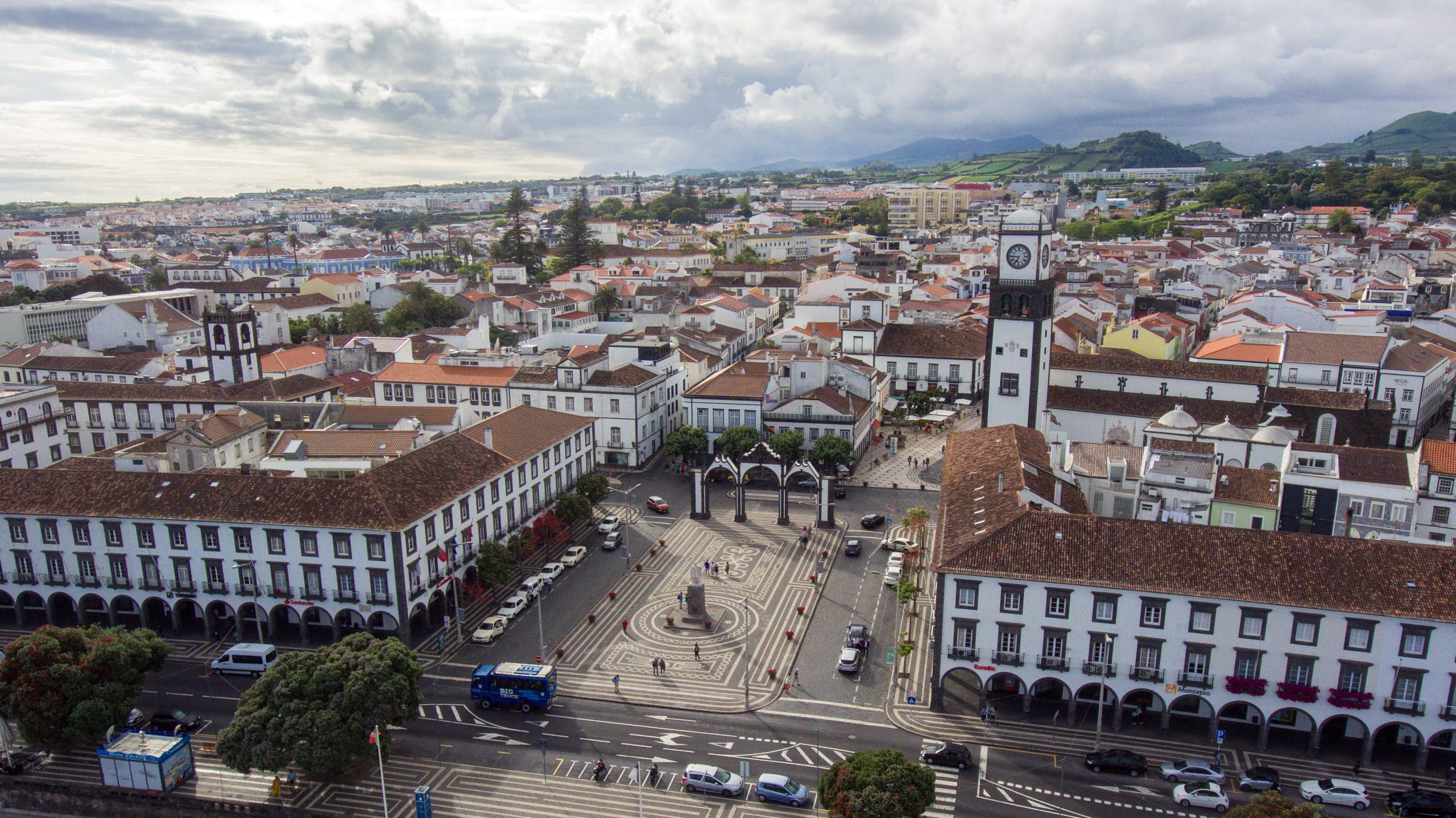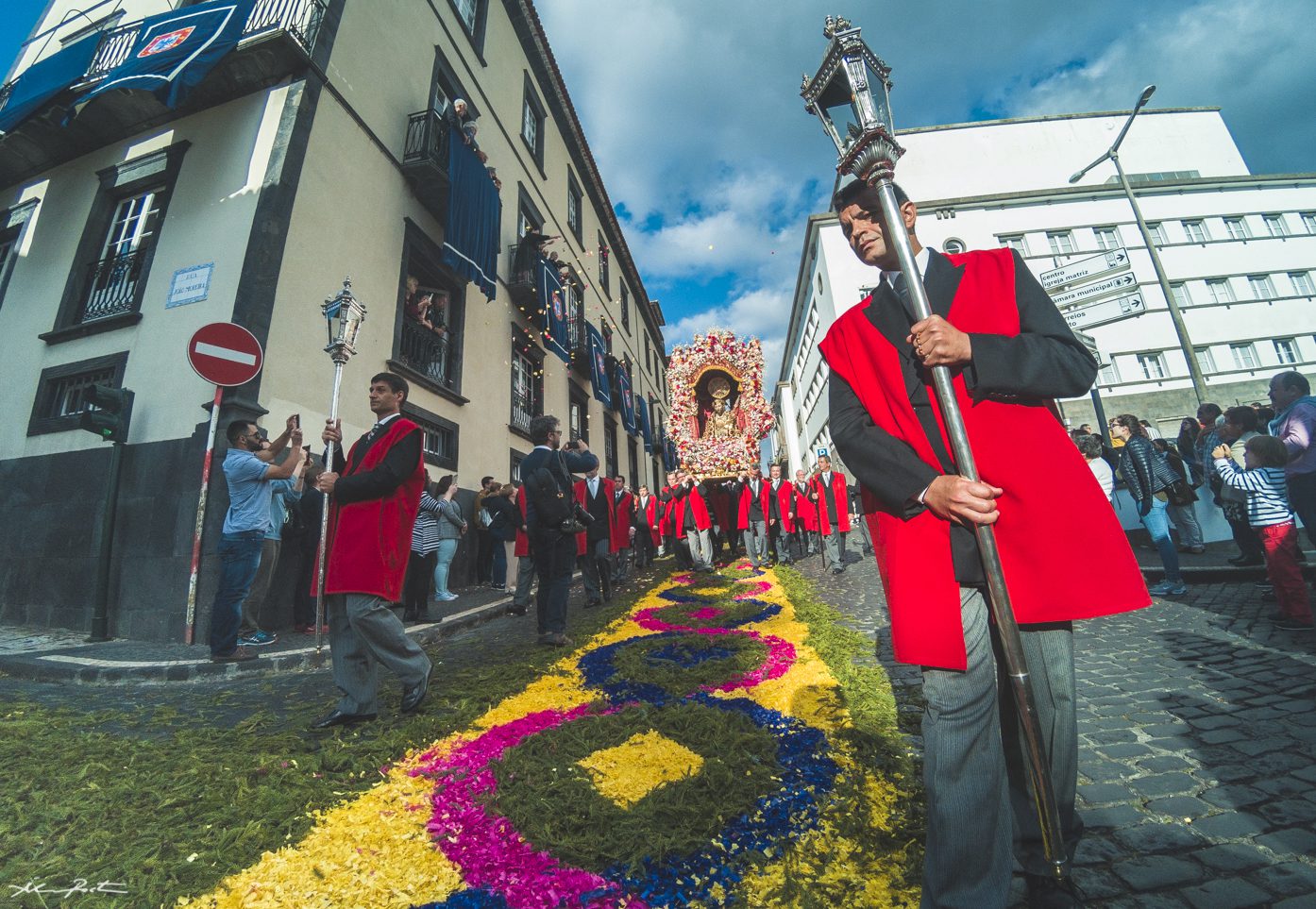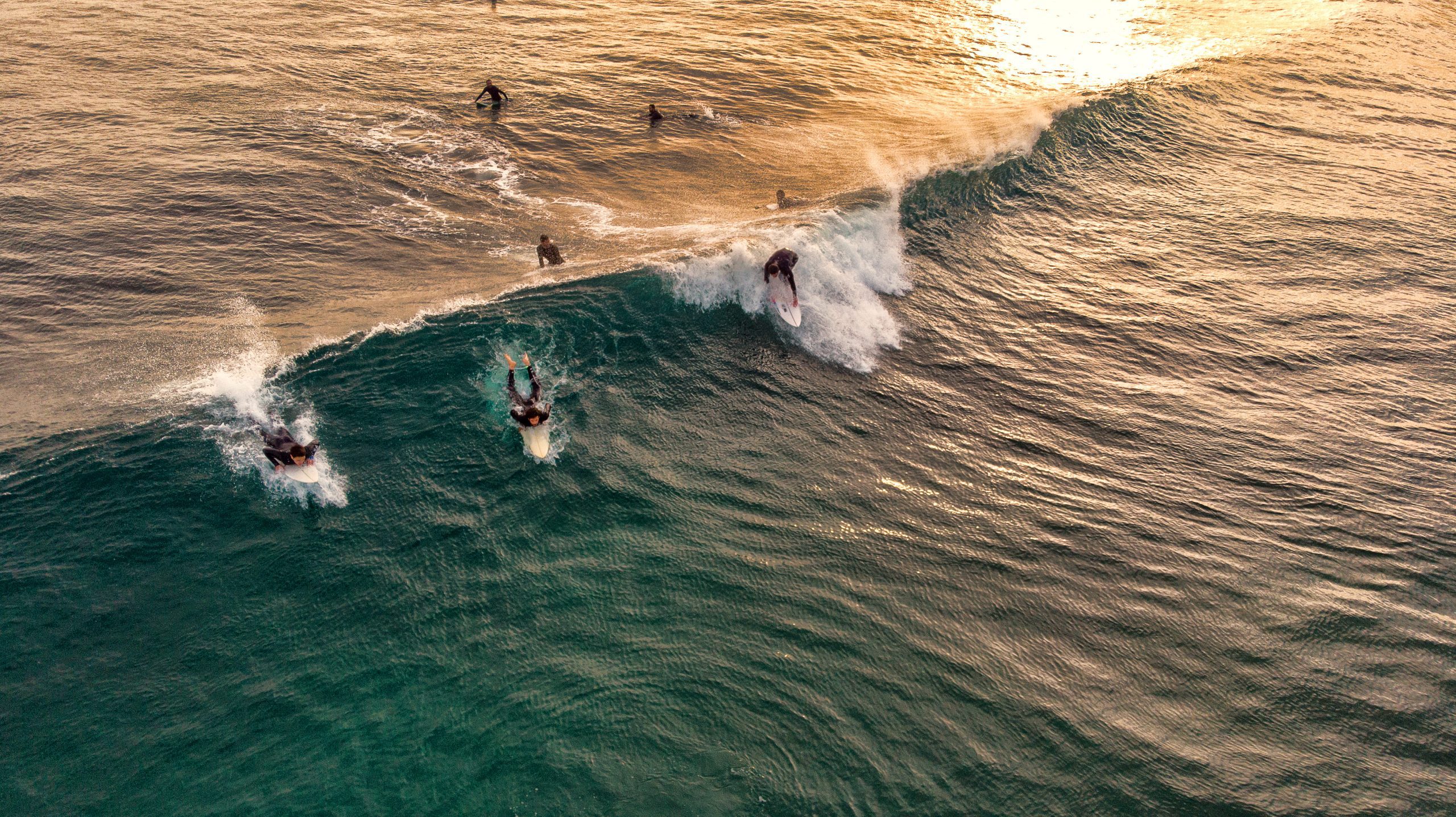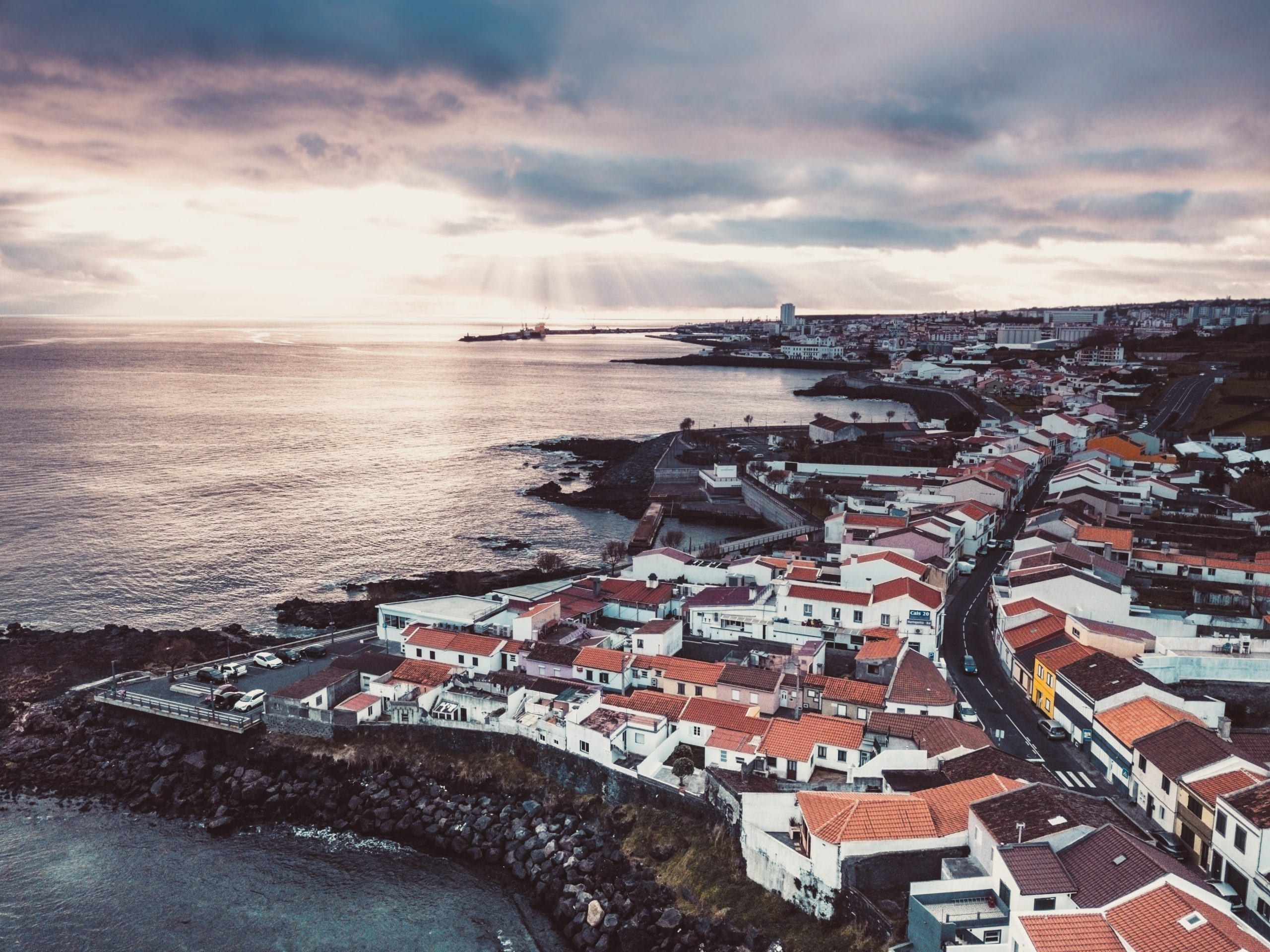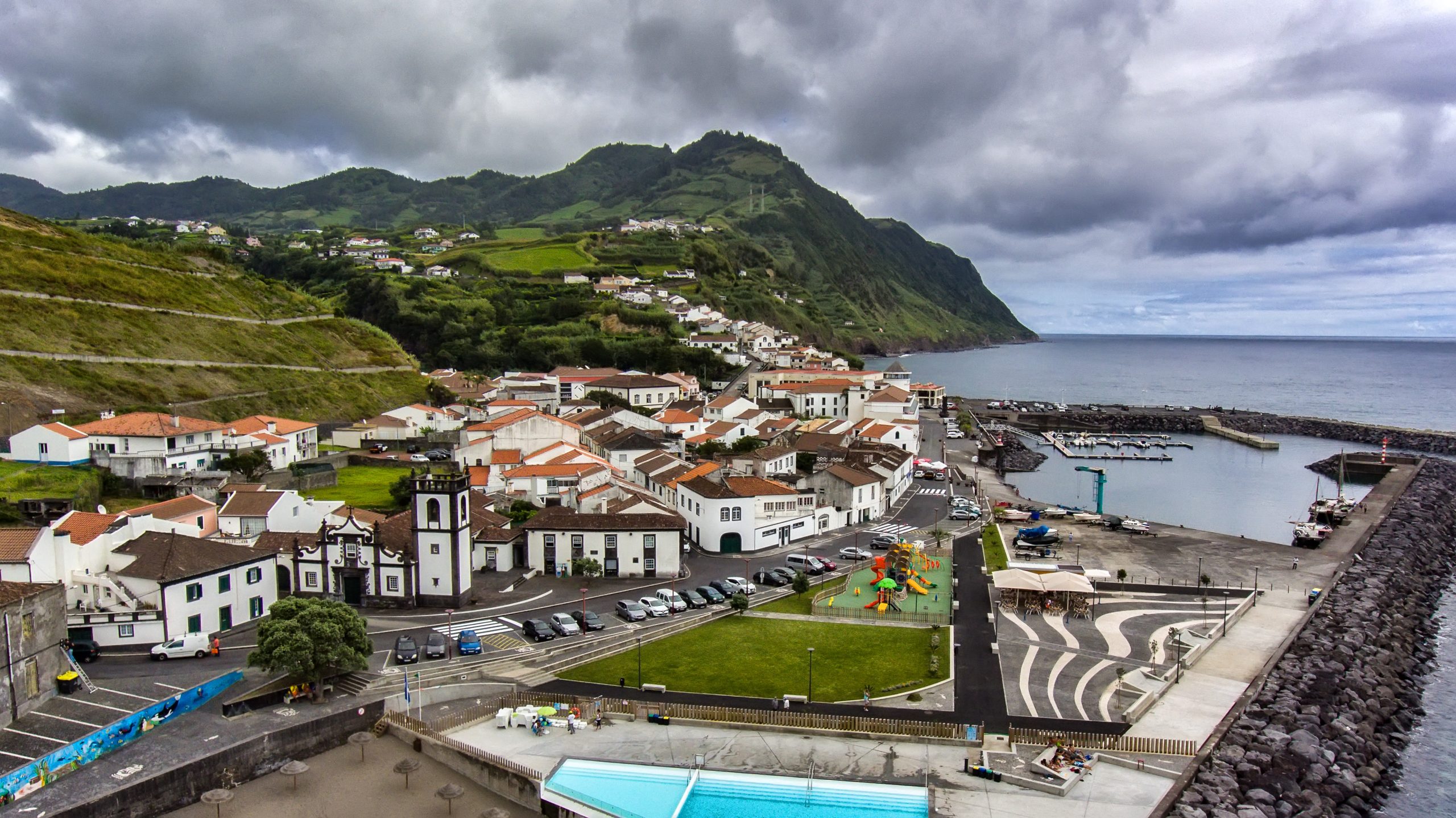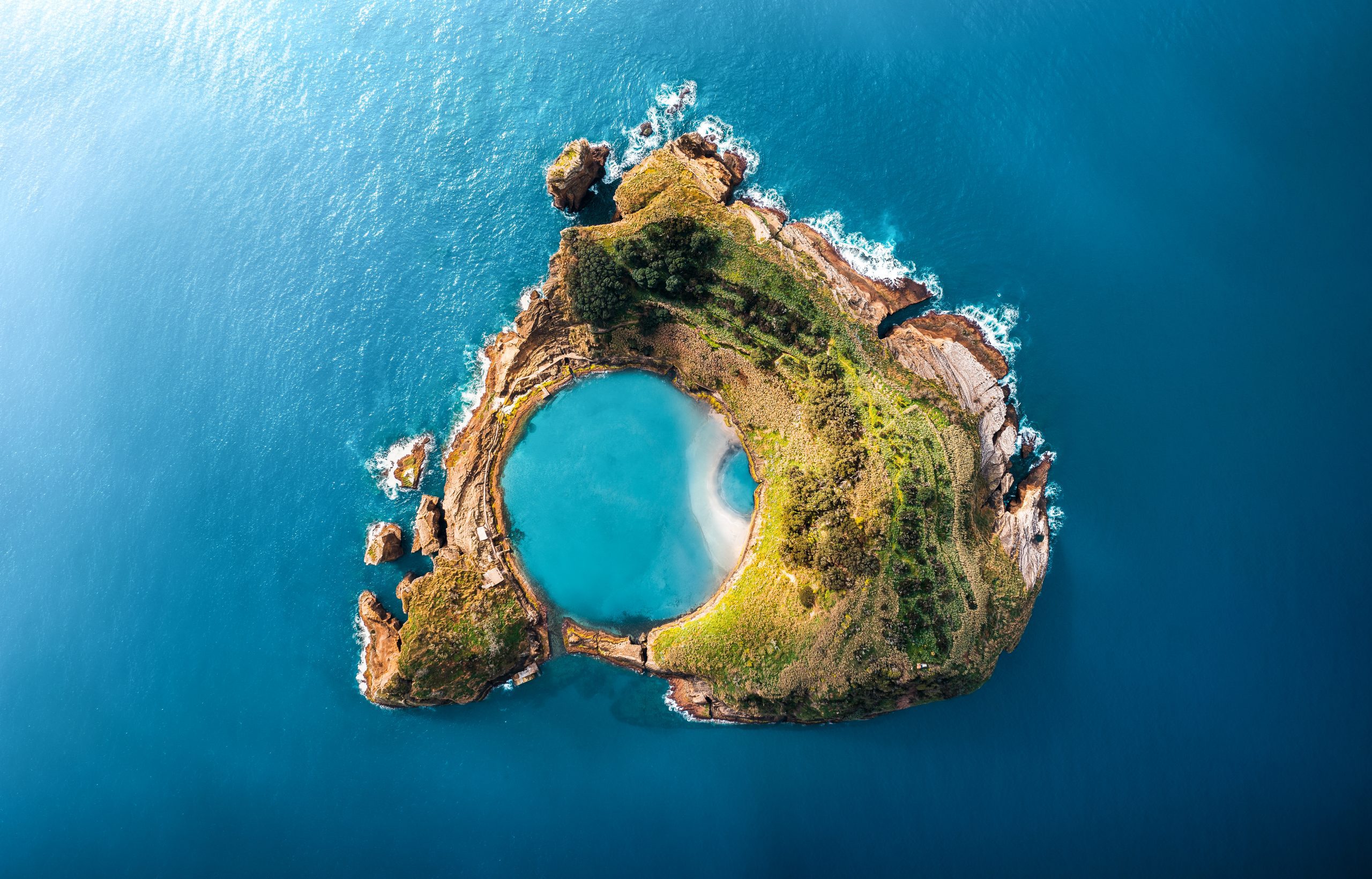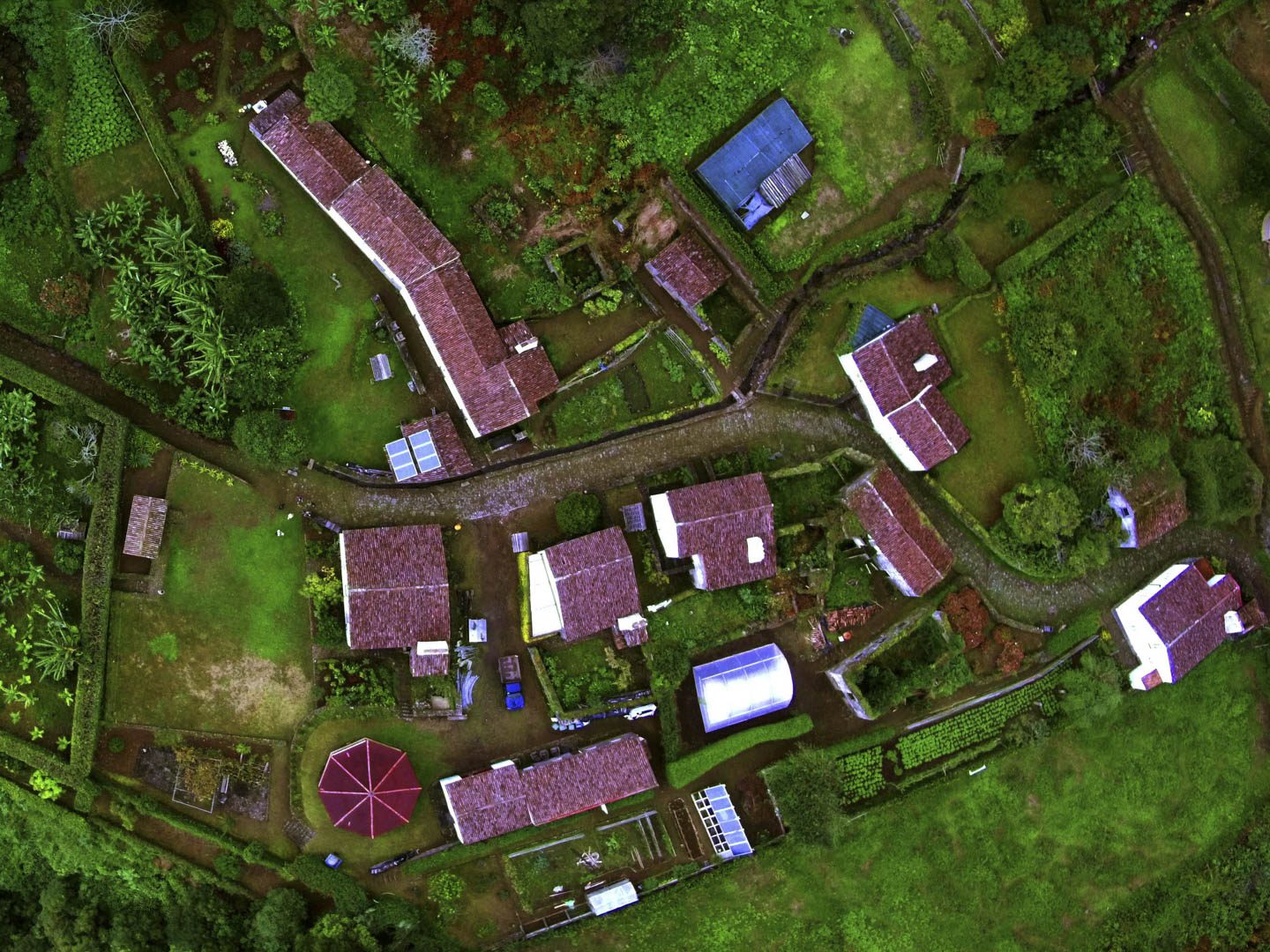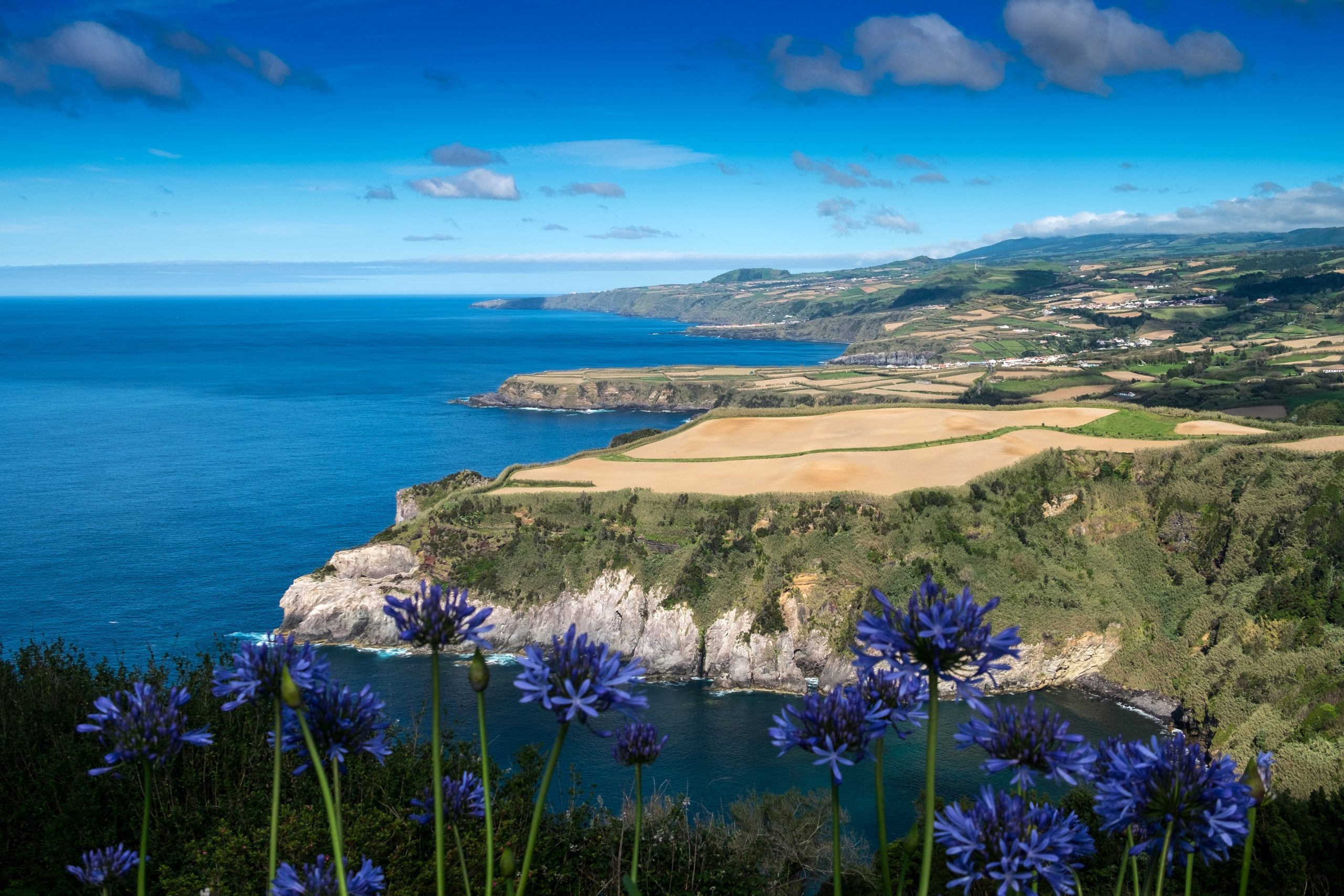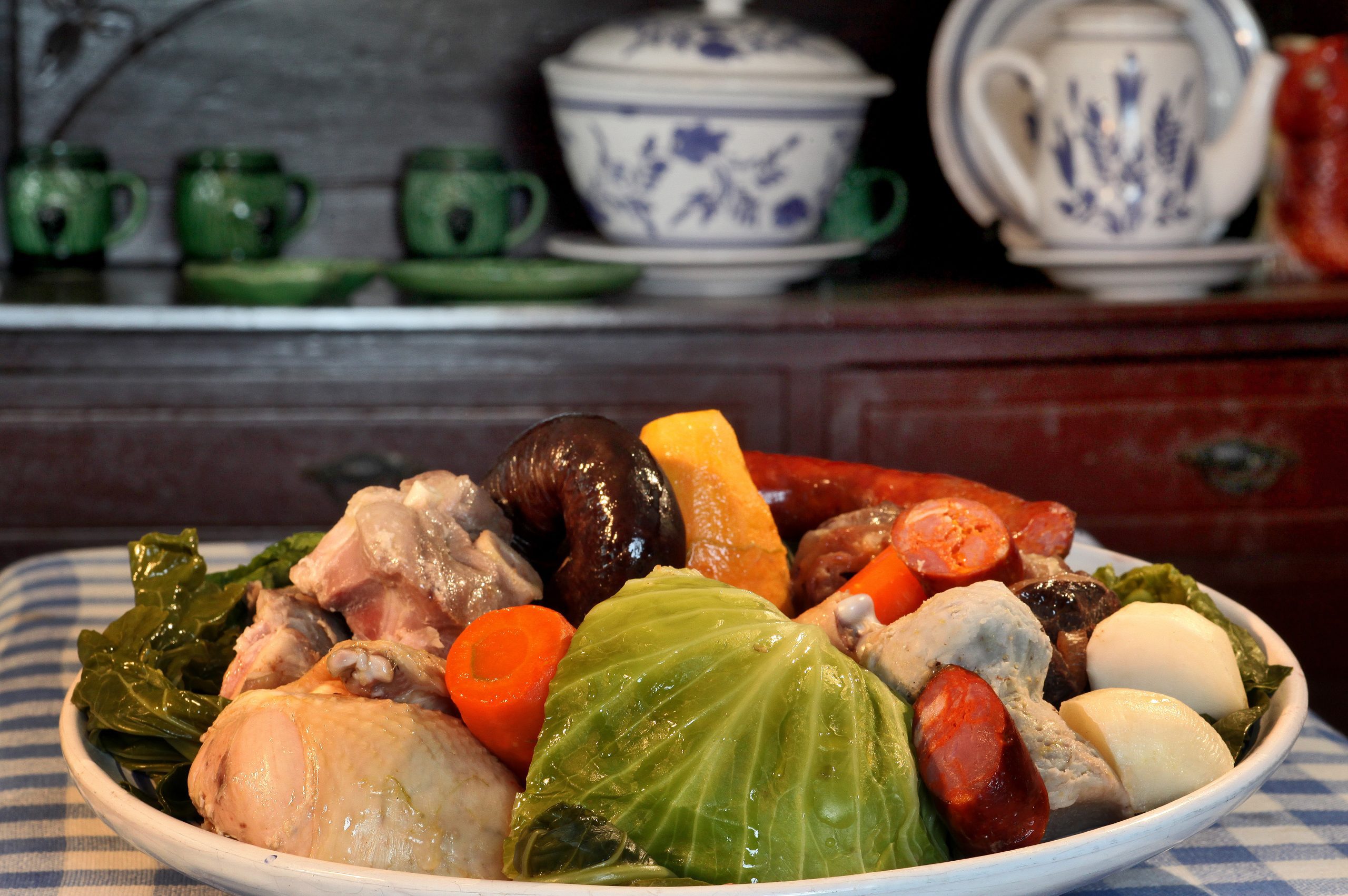The Caldeiras das Furnas, also known as Fumarolas das Furnas, are one of the main points of tourist interest on the island of São Miguel. This enigmatic place is worth visiting, and you cannot miss a visit to the site on your way through the Azores Archipelago.
Visiting the Azores Archipelago is something we should all do at least once in our lives. Its volcanic landscapes, gardens, and gastronomy are unique. So we need to know in advance what to visit so that nothing passes us by. In this article, learn your history, what to try in these fumaroles, what to taste in gastronomic terms, and what to do around this place, as peculiar as magical.
What are Caldeiras das Furnas

The Caldeiras das Furnas are geothermal hot springs and fumaroles in Vila das Furnas on São Miguel Island, Azores. Characterized by boiling waters, bubbling mud, and steam emissions, they offer a unique geological and natural landscape that attracts visitors worldwide.
As in any place where magma is closer to the surface, the Smoky Field of Vila das Furnas and the Smoky Field of Furnas Lake are areas where the imposing volcanic manifestations occur. These calderas are small rainwater ponds that have been formed in the craters of the dormant volcano since 1630. They emerged when the top of the volcano cone collapsed in its last eruption.
Combined with the magma close to the surface, the rainwater that has accumulated in these holes reaches very high temperatures, thus causing fumaroles, springs, and hot springs. However, the fumaroles, in addition to sharing the same boiling state as water, emit vapors and gases with a strong sulfur odor.
→ Related articles: Furnas | Lagoa das Furnas

What to Do in Caldeiras das Furnas

Main Smoky Field of Vila das Furnas
Considered the region with the largest hydroelectric power plant in the world, the volcanic manifestation is quite evident. Now, the main Smoky Field is located in the center of Vila das Furnas — here, you can observe the fumaroles and the boilers with temperatures ranging between 70 º C and 100 º C.
Did you know
The Main Smoky Field, located in the Furnas Valley, is affectionately nicknamed the Furnenses Enchanted Valley.
In addition to its grandeur and unique experience, you can visit it as many times as you like at a time that is most favorable to you, since entry is entirely free. Here, you will find the most popular Caldeiras in the region, such as Caldeira do Asmodeu, Caldeira Grande, and Caldeira Pêro Botelho.
Visit the Christmas Nativity Scene of Caldeiras das Furnas
As a rule, people prefer to visit the Azores in the summer, where the number of rainy days is lower and temperatures are relatively warmer. However, if you are passing through the Azores at the end of the year, do not miss the opportunity to pay a visit to the Christmas Nativity scene of Caldeiras das Furnas.
The Christmas nativity scene, which stretches throughout the space around the calderas, was created in 1976 by a group of young Furnenses and is currently considered the most significant open-air nativity scene in the entire Azores Archipelago.
Secondary Fumarolic Field — Fumarolas da Lagoa das Furnas
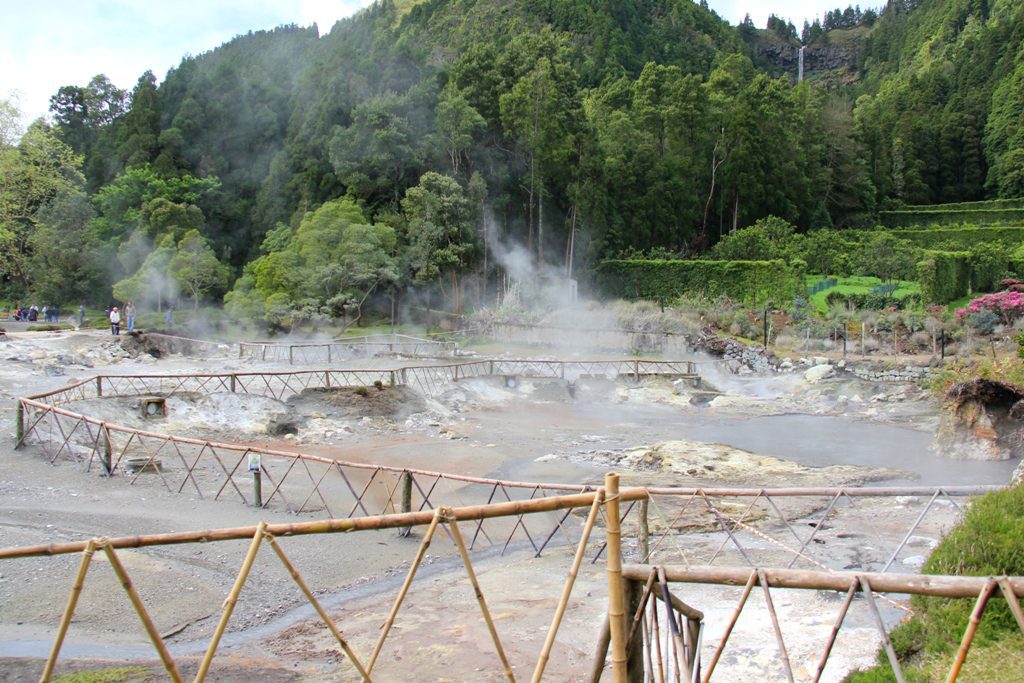
In addition to the Main Smoky Field located in Vila das Furnas, there is a second called “Fumarolas da Lagoa das Furnas” — as its name implies, this field is situated next to the Furnas Lagoon. This area has a large parking lot, picnic tables, a small café, and access to some trails. This secondary field is renowned for its natural features, including chimneys that emit hot water vapor, effervescent mud, and various springs or water sources with distinct mineral components.
Did you know
The ticket to visit the Furnas Lagoon costs 3 euros per person.
This place has a distinctive odor — the strong smell of sulfur that is present can be unpleasant for some visitors. After all, this is where magic happens, harnessing the energy of the earth’s depths to create the emblematic Cozidos das Furnas, one of the most popular dishes on São Miguel.
Witness the Removal of Pots with Cozido das Furnas

Savoring Cozido das Furnas is something you can’t miss when you pass through Furnas Lagoon. However, to have a more extraordinary sensory experience of this moment, you must watch the pots being removed from inside the fumaroles.
As lunchtime approached, around noon, local restaurant managers retrieved the pots that had been left inside the holes built in the fumaroles for the past six to seven hours. Thus, if you want to visit the Fumarolas da Lagoa das Furnas, this is the most enjoyable time of the day.
Bury & Remove Your Cozido das Furnas Pan
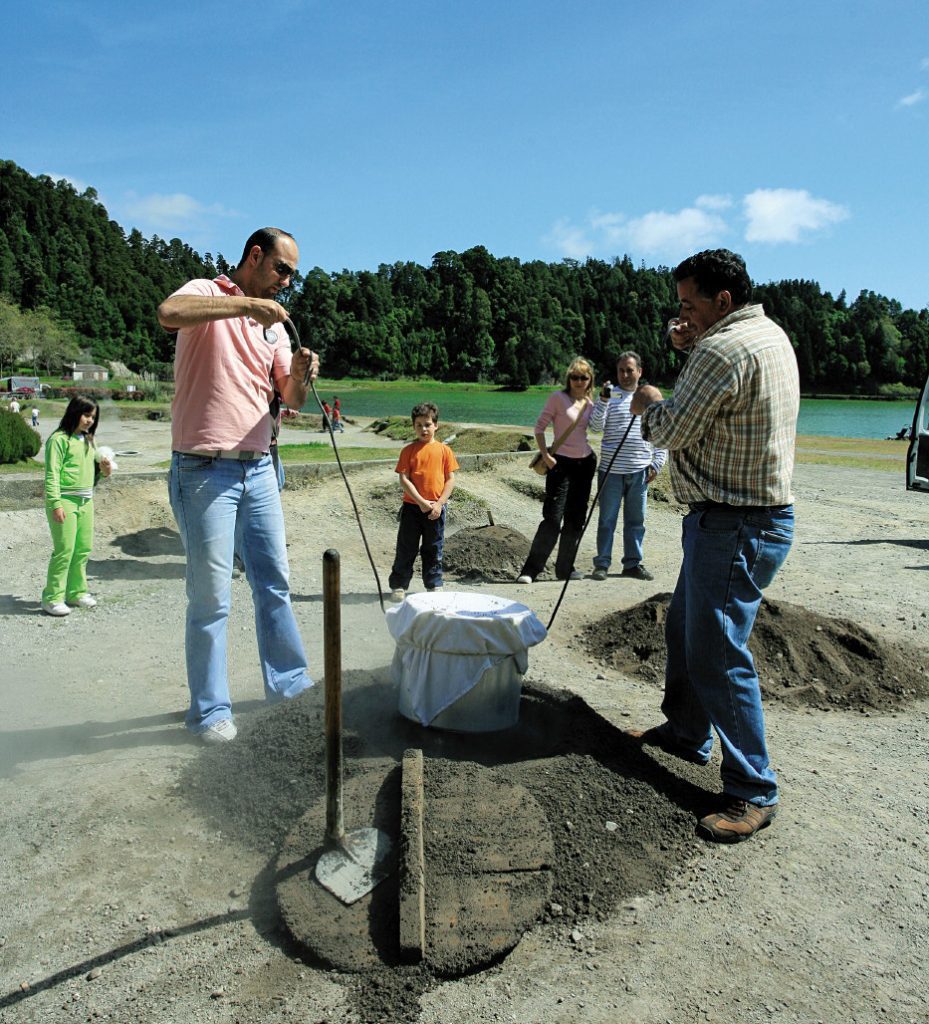
The emblematic Cozido das Furnas, also known as Cozido das Caldeiras, is a unique and special version of Portuguese stew. So, you should try making your meal, following the process from start to finish. The process begins the day before with the joining of all the necessary ingredients. Still, at dawn, between five and six a.m., the pots are carefully closed and inserted inside the holes dug in the ground.
Steam from inside the fumaroles simmers the ingredients for hours. This unique and so characteristic method provides food with an indescribable flavor. To ensure precise cooking, wait six to seven hours until noon before removing the pan from the heat. A specialist typically monitors or supervises this process.
Try Cozido das Furnas at a Local Restaurant
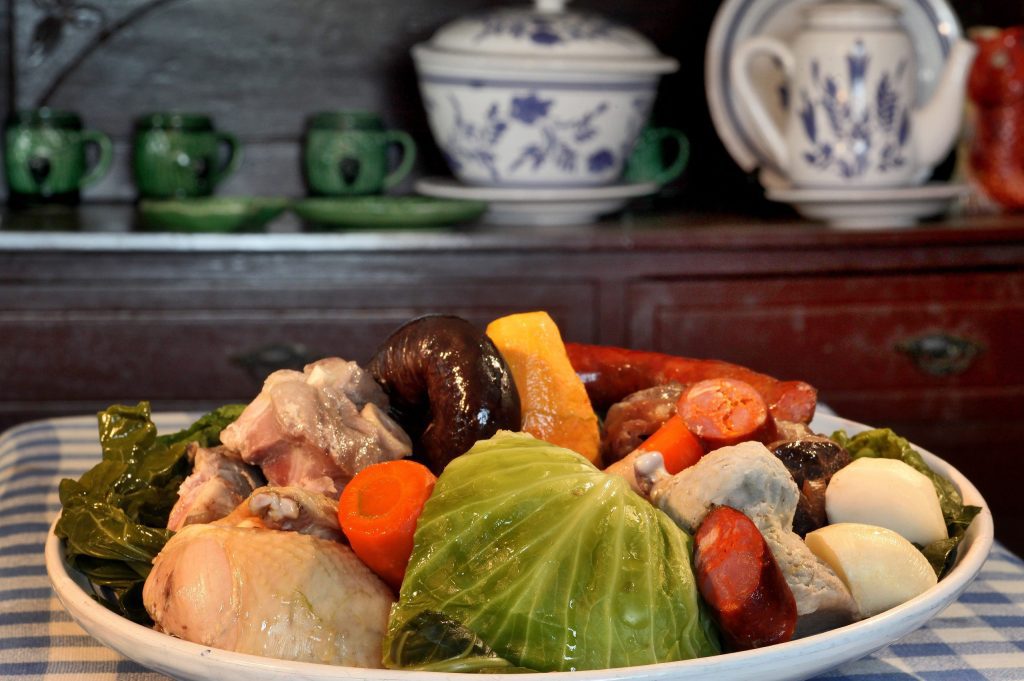
After experiencing the burial and removal of the pots with Cozido das Furnas, it is time to taste this delicacy. The people remove all the pots from inside the fumarolas and distribute them to the various local restaurants in the area.
To secure your place in a local restaurant due to the large daily influx. You must make your reservation the day before, specifying the number of people who will be enjoying the meal.
→ Explore the authentic flavors of Azorean cuisine in our articles: Bolos Lêvedos | Gorreana Tea | Cozido das Furnas | Grilled Limpets
Plan Your Visit to Caldeiras das Furnas
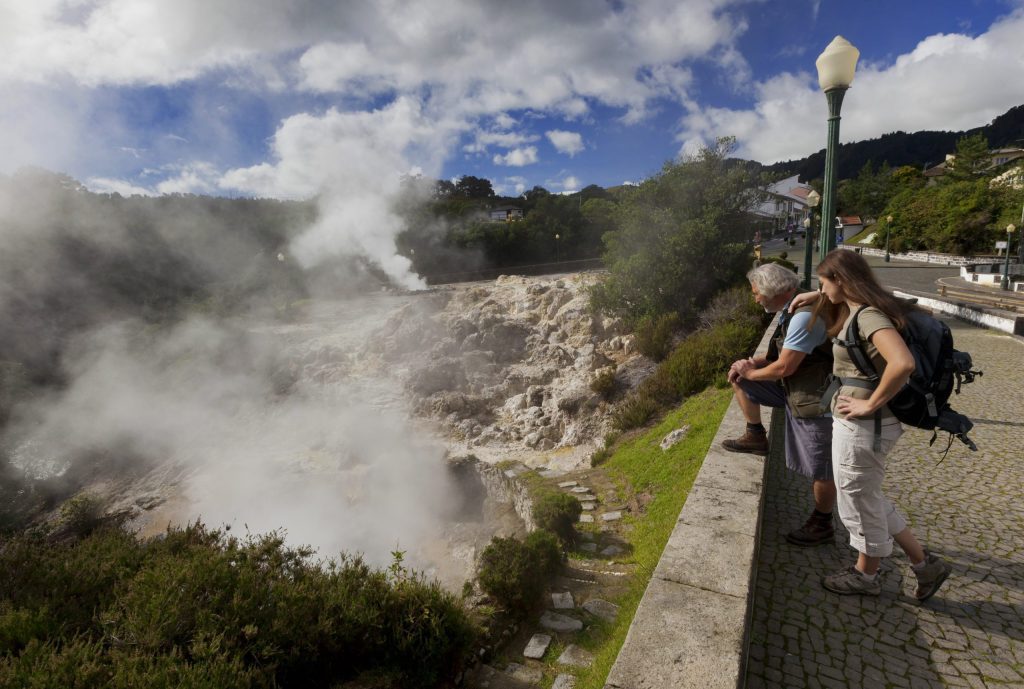
Best Time to Visit
Due to its location, the Azores Archipelago experiences mild temperatures throughout the year. However, in the winter months, periods of rain are more frequent, which could affect your stay. Therefore, the best time to visit the Azores is usually between May and September, when rain is less frequent.
However, if you see the island of São Miguel in December, you can also observe the Christmas Nativity scene in Caldeiras das Furnas. However, it is essential to note that the cloudy sky is a common feature of the archipelago. So, sometimes, it may not be easy to contemplate the true splendor of some viewpoints.
Check all our articles about the weather in the Azores throughout the year 🌤️ ☔️: January | February | March | April | May | June | July | August | September | October | November | December
How to Get to the Caldeiras das Furnas
There are two unique options for visiting Caldeiras das Furnas. You can travel by car or take advantage of the various excursions, accompanied by a guide who will help you understand the entire place, its history, and its traditions.
Pro Tips

This site offers therapeutic properties. Visitors can alternate between the hot pool water and the cold stream, which relaxes the feet. One of the most prominent places is Poça da Tia Silvina, a foot bath with thermal water situated along the Way of the Fires. So, if you’re thinking of taking long walks and visiting various trails, finishing your adventures in this location will be a gold on blue experience.
Nearby Attractions

Around the Caldeiras das Furnas, there are many gardens, viewpoints, and observatories that you should include in your visit. Therefore, we will now highlight the main attractions that should not be missed, as follows.
Check all our articles about each one of the most relevant points of interest in Furnas: Caldeiras das Furnas | Furnas | Capela da Nossa Senhora das Vitórias | Castelo Branco Viewpoint | Lagoa das Furnas | Lagoa das Furnas Viewpoint | Mata-Jardim José do Canto | Parque Terra Nostra’s Thermal Pool | Pico do Ferro Viewpoint | Poça da Dona Beija | Ribeira Quente | Praia do Fogo | Salto do Cavalo Viewpoint | Salto do Rosal | Terra Nostra Garden
Complementary Information
Best Season to Visit the Azores
The Azores Archipelago boasts a unique climate that shapes its lush landscapes, making it a splendid year-round destination. With mild temperatures and minimal fluctuations, each season offers something unique. Spring averages 16 °C, summer reaches 21 °C, autumn cools to 18 °C, and winter remains mild at 14 °C.
→ For a detailed breakdown of the weather by month, check the following links 🌤️☔️: January | February | March | April | May | June | July | August | September | October | November | December
How to Get to the Azores
The Azorean Archipelago is easily accessible through numerous flight routes. Lisbon and Porto are the main entry points to the continent, with direct flights available to São Miguel (PDL), Terceira (TER), Faial (HOR), Pico (PIX), and Santa Maria (SMA). To find the best flight, use search engines like eDreams or Skyscanner. These platforms let you compare prices and schedules from multiple airlines in one convenient location.
For more details on how to get to the Azores, take a look at our complete guide. But what if you want to explore beyond your arrival island? We’ve got you covered!
- Azores airports 🛬
- Flights between islands ✈️
- Ferries between islands ⛴️
- Which island to choose? 🏝️
- What airlines fly to the Azores? 🛩️
→ Once you’ve found the perfect route, book your tickets and get ready to experience one of the world’s most stunning island groups!
Travel Essentials
Essential Information for your Azores trip: Azorean Language & Phrases 🗣️ | Currency & Banks 💵 | Credit Cards & Traveler’s Cheques 🏧 | Driving in the Azores 🚗 | Electricity 🔌 | Experiences & Tours 🗺️ | Health & Safety 🩺 | Internet & Wi-Fi Access 🛜 | Phones & Mobile Service 📞 | Post Offices & Buying Stamps ✉️ | Public Holidays 🏖️ | Shopping 🛒 | Time & Daylight 🕒 | Whale Watching Guide 🐳 | Best Island to Visit 🏞️
Useful Tools & Apps
The weather in the Azores can be variable, so it’s helpful to use some apps before visiting the islands. Spotazores provides live camera feeds from the main tourist attractions, allowing you to check the weather and plan your visit. For accurate weather predictions, use Windy or Windguru — they provide the most reliable predictions.
Video
Conclusion
The Caldeiras das Furnas, also known as Fumarolas das Furnas, offer a unique sensory experience. Here, you can taste various gastronomic products, smell strong sulfur, relax your body in the hot months, and make your own drinks. Unique landscapes accompany all this.
We recommend that visitors plan their trip carefully to visit all the listed points of interest. Don’t forget to bring a bathing suit to enjoy the water attractions. Moreover, pack comfortable clothes suitable for exploring and relaxing during your visit.
Authors’ Note
I am pleased to inform you that all the recommendations in this article are based on my personal experience and observations. As the author, I have personally visited each attraction mentioned, ensuring that every suggestion is grounded in first-hand knowledge and genuine enthusiasm.
FAQs
The Caldeiras das Furnas are an area of hot springs and fumaroles resulting from geothermal activity located on São Miguel Island, Azores. They are characterized by boiling waters, bubbling mud, and steam emissions, and offer a unique geological and natural landscape.
The Caldeiras das Furnas are located in the parish of Furnas on São Miguel Island, part of the Azores’ archipelago in Portugal. Due to its volcanic activity and natural beauty, it is one of the island’s main tourist attractions.
Chefs prepare Cozido das Furnas by burying pots filled with meat, vegetables, and sausages in the calderas’ hot soil. The pots cook slowly for several hours using natural geothermal heat, resulting in a unique and distinctive flavor.
Must-see points in Furnas include the Caldeiras das Furnas, Terra Nostra Park, Furnas Lake, Poça da Dona Beija, and the fumaroles. Additionally, tasting the “Cozido das Furnas” is an essential gastronomic experience.




